220 Triathlon
When you purchase through links on our site, we may earn an affiliate commission.
Home / Gear / Bike / Bikes / Road bikes / The best road bikes for triathlon

The best road bikes for triathlon
Looking for a new road bike that you can use for both training and racing triathlons? We take a look at some of the best options out there for a range of budgets and aspirations...
A road bike is essential for any triathlete. Even if you have a dedicated triathlon bike , you’ll still want a road bike for training, but you can also use it for racing.
In fact, it may even be preferable for hilly rides or technical bike courses with lots of tight turns.
This guide features bikes to suit every triathlete, and all have been tested by the team at 220 or by our colleagues at BikeRadar .
What to look for in a road bike for triathlon
Even the pros have been known to use road bikes with clip-on aero bars added for races with considerable elevation, and a road bike is almost always the best choice for beginner triathletes getting used to riding on the road.
So, what makes a good road bike for triathlon? That depends, and luckily there are numerous road bike sub-genres for multiple multisport scenarios.
If you’re just starting out, look for bikes intended for endurance rather than more aggressive, aero road bikes. Endurance or sportive bikes allow for more upright, relaxed positions and are designed for comfort, ideal for training rides to build mileage and not wreck your back when you’re ready to start running off the bike.
- Best triathlon bikes
- Triathlon bike versus road bike
- How to turn your road bike into a triathlon bike
That’s not to say endurance bikes can’t be fast, as adding deep-section wheels and tri bars will make the bike much more aerodynamically efficient, while still affording you more comfort for longer triathlons like Ironman.
Simply want to go fast or targeting draft-legal triathlons? Look for a road bike that is aerodynamic, ideally with deeper carbon wheels and integrated cable routing.
The ride will be stiffer and not as forgiving as endurance bikes, but if you’re flexible and have high ambitions then a thoroughbred racing bike may serve you best.
Best road bikes for triathlon
Specialized s-works tarmac sl7.

Former 220 staff writer Jack Sexty is now editor at Road.cc. Jack has raced everything up to Ironman distance, is a sub-2hr Olympic-distance athlete and has represented GB at the ITU World AG Champs on several occasions. He's also a regular kit tester on the pages of 220 and holds two world records for pogo jumping – Longest distance pogo stick jumping in 24 hours and Most consecutive jumps on a pogo stick.
Related content
World triathlon launch new documentary series in build-up to paris.
To celebrate the launch, 220 has teamed up with World Triathlon to offer our readers the chance to win five annual passes for TriathlonLive.tv

Paris 2024: “I don’t need a particular race scenario to get a good result,” says Kate Waugh
Kate Waugh’s selection for the GB Olympic tri team ruffled some feathers, but she believes she’s the right woman to help bring home another relay gold…

What are the benefits of taking pre-workout?
Pre-workout supplements aren’t just for gym users – endurance athletes can enjoy more powerful sessions, too…

Get 6 issues for £19.97 when you subscribe! Continue to save 60% every 12 months Never miss an issue Delivery direct to your door
No thanks, I’m not interested!
TryingTriathlon
A hub for beginner triathletes.

Best Road Bike for Triathlon Beginners: A Complete Guide
Triathlons are becoming more and more popular, which is great! The triathlon community is welcoming, and they provide an excellent way to stay in shape. However, one not-so-welcoming aspect of the sport is the price of some gear. In particular, triathlon bikes (or time trial bikes) are notoriously expensive.
For this reason, it is best for beginners to use a road bike when first getting into triathlons. We’ll dive into more detail soon, but road bikes are generally cheaper and offer more versatility. With this in mind, let’s dive into choosing the best road bike for triathlon beginners.
Road Bikes vs. Triathlon Bikes – What’s the Difference?
First, let’s explain the actual differences between road bikes and triathlon bikes, so we can better understand what you may be compromising on when choosing a road bike.
The first and most apparent difference between the two (besides price) are the handlebars. Triathlon bikes use upward facing ‘aero bars’. On the other hand, road bikes have downward facing drop bars. These aero bars help the rider get lower, into a more aerodynamic position.
Speaking of aerodynamic positions, triathlon bikes position the saddle more centrally, which facilitates getting into a ‘crouched’ aerodynamic stance. On the other hand, road bike saddles are a bit further back, which allows for a more comfortable ride and a bit more maneuverability. This difference makes sense when you think about race styles. Triathlon races often include long, flat, stretches for the bike course (think famous Kona lava fields). Road cycling races often feature hills and sharp turns, so maneuverability is of more importance.
Another big reason that road bikes don’t focus as much on aerodynamics is that riders are generally allowed to draft behind other riders. This is not allowed in most triathlons, and doing so will earn you a penalty.
Now that we understand the differences between the bikes, let’s focus a bit more on the anatomy of a road bike for beginner triathletes.
The Anatomy of a Road Bike
I won’t dive into the super specific details of every part of a road bike. However, let’s touch on a few big ones so you can be more informed when purchasing your first bike.
Road Bike Frames
The frame is what most people think of when they think of a road bike. There are three main types of materials that a road bike frame may be made from: aluminum, steel, and carbon fiber.
Aluminum frames are very common these days, and are most likely what you will find yourself purchasing. The main pros of an aluminum frame include being affordable and light weight. Since they are somewhat stiff, there is also good power transfer.
Steele frames are also very common. While generally more expensive that aluminum frames, they are still cheaper than the next option we’ll discuss. Steel frames are very durable, and absorb vibrations well. This is also a downside, as they are generally the heaviest.
Finally, carbon fiber frames are becoming more accessible to amateur riders. Carbon fiber frames are generally the most expensive option, however this is justified largely by their weight. Carbon fiber frames are incredibly light, and this is why the pros use them. Carbon fiber is also able to shaped into a variety of frame styles, allowing some very unique frame styles. Besides the cost, another downside to carbon fiber frames is their fragility. Carbon fiber is brittle, and so even a small defect can translate into major cracks and breaks down the road (pun intended).
Road Bike Wheels
Choosing your wheels is another big decision, similar to choosing your frame. Your wheels will affect your speed, aerodynamics, and handling.
Luckily, there are two main classes of wheels you should be considering. First, are your standard wheels, characterized by rim depths of about 20 mm. These wheels are most affordable and are lightweight. However, they don’t offer many benefits in the aerodynamics department.
You might find yourself tempted to get a set of aero wheels. These wheels are characterized by deeper rims, generally with depths of 40 mm or more. The benefits of these wheels include enhanced aerodynamics, improved performance in headwinds, and better stability. On the other hand, these wheels have a larger cross sectional area, and thus are prone to instability in cross winds.
In our opinion, just go with traditional wheels. The benefits you would gain from aero wheels this early in your triathlon journey are relatively negligible, and the money is better spent elsewhere.
Beyond wheels and frames, there are other aspects of a road bike to consider, such as the saddle, brakes, and gears. We won’t go into all those details here, but if you are interested in learning about all the parts of a road bike, a good article can be found here .
Top 3 Road Bikes for Beginner Triathletes
Now, let’s finally jump into our top 3 road bikes for beginner triathletes. We’ll organize these from lowest to highest price.
1. Fuji Sportif 2.3

The Fuji Sportif 2.3 is one of the most affordable beginner road bikes for entry-level triathletes. Not only is it a great looking bike, but it offers a range of welcoming features. Fuji highlights the bike’s comfort. The wheel base is a bit longer than competitors, which allows for a more comfortable ride. We believe this is important for new riders, as a comfortable ride will foster a more positive attitude towards longer rides. While starting at about $899, options such as disc brakes and carbon forks can quickly drive the price higher.
2. Trek Domane AL 2 Disc

The Trek Domane AL 2 is our next road bike recommended for beginner triathletes. The Domane AL 2 is built from a lightweight aluminum frame, and stems from a brand with a long, reliable history. Unlike the Fuji, the Domane comes with a carbon fork, and offers attachment points for fenders. It also boasts a frame geometry that maximizes comfort on long rides, perfect for easing into the long rides needed for triathlons (especially half and full Ironmans, if that’s on your horizon).
3. Specialized Allez Sport

Our final beginner triathlete road bike recommendation is the Specialized Allez Sport, which begins at about $1,800 – though cheaper Allez models are also available. The Allez Sport’s main claim to fame is its lightweight frame. Specialize promotes the E5 alloy frame as one of the lightest frames in its class, which aids in power translation and handling. With a comfortable geometry, disc brakes, and a full carbon fork, the Allez Sport is an appealing option.
When it comes to choosing a beginner triathlon bike, a road bike is your best option. It offers great functionality while maximizing comfort and versatility. The only compromise is on aerodynamics, and worrying about that can come later. Once you upgrade to a time trial bike down the road, you’ll still appreciate having a road bike around for your longer training rides. While we recommended our top 3 road bike picks for beginner triathletes, we encourage you to shop around – the used market also has great deals. While you’re here, check out our guide on lap swimming for beginner triathletes as well as beginner triathlete swim training .
Leave a Comment Cancel reply
Save my name, email, and website in this browser for the next time I comment.
Best Triathlon Bikes
Imagine flying on two wheels. You, a triathlete, are in pursuit of the perfect ride to conquer the cycling leg of your next race. This article delves into the world of the best triathlon bikes, meticulously crafted machines designed to enhance your performance and speed while saving you precious time and energy.
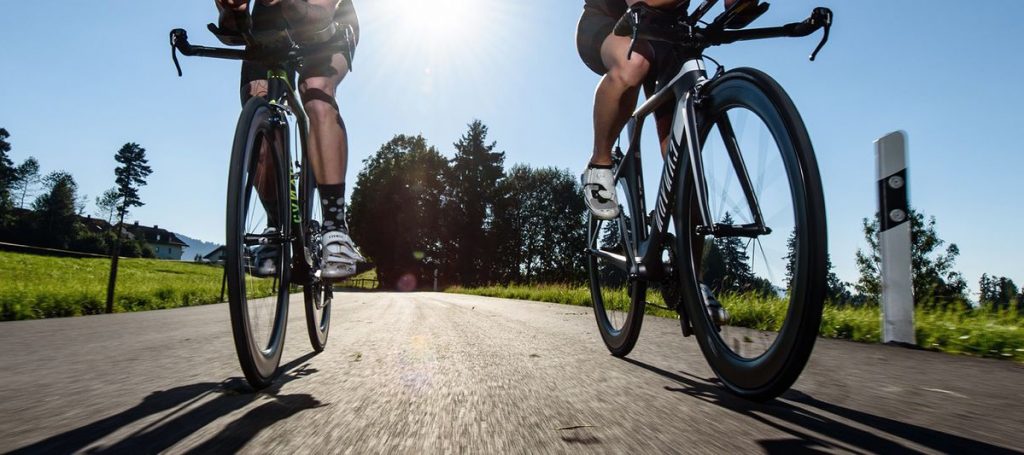
Not only can a tri bike save you up to 20 minutes over an Ironman distance, but it also leaves your legs fresher for the run, thanks to its unique riding position.
I’ve put together this buyer’s guide to help you pick the right triathlon bike for you. I’ll also briefly touch on how a triathlon bike differs from a road and time trial bike.
Below you will find quick links to help you select the triathlon bike that’s right for you:
- Entry-Level Triathlon Bikes
- Mid-Range Triathlon Bikes
- High-Performance Triathlon Bikes
Best Entry-Level Triathlon Bikes for Beginners
1. cervelo p-series triathlon bike.
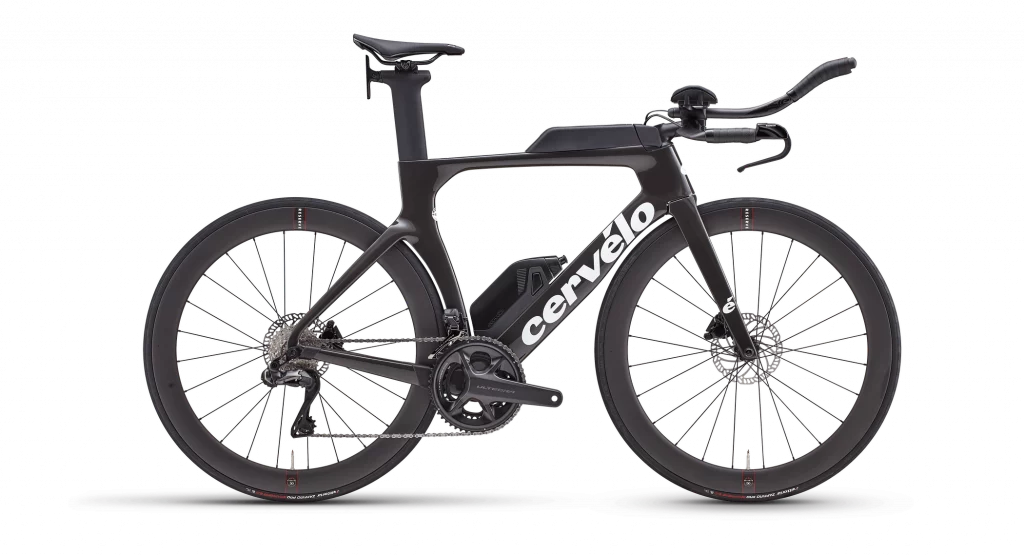
Cervelo is one of the leading brands when it comes to triathlon, and the P-Series is its entry-level offering.
Cervelo’s P-series has long been a favorite among triathletes looking for an aerodynamic edge. The new models improves on the old design, with better aerodynamics and a more similar shape to Cervelo’s top-of-the-line P5.
The P-series is a great choice for triathletes who want a fast bike that’s still easy to work on and adjust. We appreciate that Cervelo has kept triathlon roots alive with features like a zippered top-tube nutrition pocket and an aerodynamically tuned down tube water bottle. And of course, the included rear hydration mount makes it easy to stay hydrated on long rides. If you want more, you can add other accessories such as a front mount hydration bottle.
The front seat tube and nose has been designed to mimic bayonette fork without the complications of it. And, the design team did succeed.
The extended seat tube cut out. The bike’s seat tube cut out is a close-fitting curve in the seat tube. What does this do for you? It shields your rear wheel’s leading edge to block wind and improve aerodynamics.
Overall the bike is designed with stiffness in places where it’s most needed. For example, the bike is stiffer at the bottom bracket and its torsional region. This makes it easier to handle, go around corners faster, and for you to plan your accelerations.
Cervelo has also thought through the fit range of this bike carefully, offering six sizes to ensure that riders of all sizes can find a comfortable position. As a result, the P2 is a fast, comfortable bike that is sure to appeal to triathletes and time trialists alike.
Overall, the Cervelo P-series is a great choice for anyone looking for a fast, lightweight bike that’s ready to race.
2. Specialized Shiv Sport
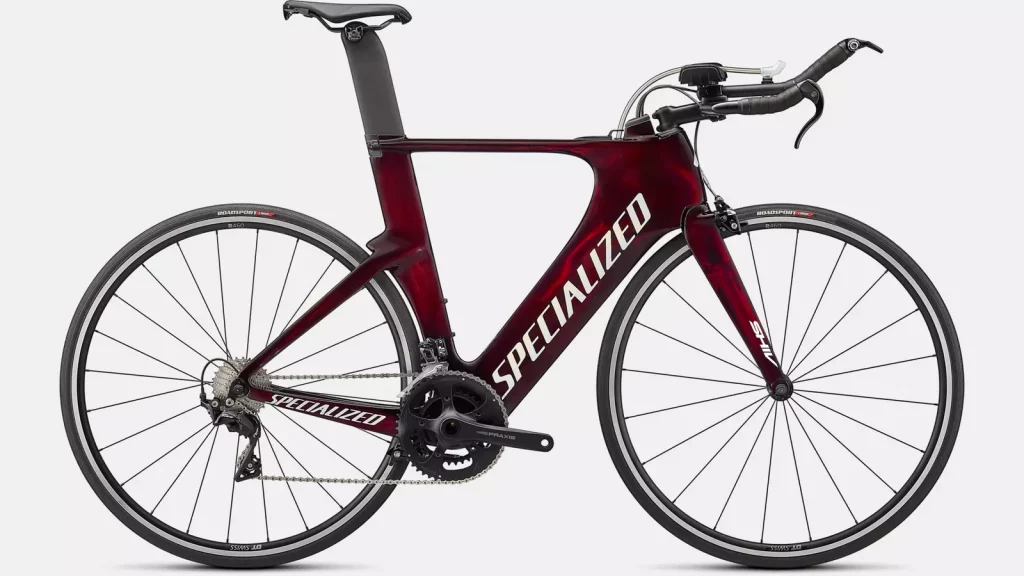
The Specialized Shiv Sport was created with aerodynamics, usability, and high-quality rides in mind. All these features make it ideal for either time trials or non-draft triathlons.
What makes this one of the most usable and accessible bikes?
It’s a one-stop bike.
One frame will fit a multitude of systems. This means you can be sure that any component you want to upgrade will be compatible with this bike.
You can describe your ride quality by how comfortable you are on your bike.
Specialized tries to create a comfortable ride for you so it designed its bike for its intended use.
For its triathlon bike, it focused on static and dynamic comforts to make an overall high-quality ride. The ride has the optimal ratio between stiffness and weight. This ensures you can confidently handle the bike and have a significant power transfer.
To make this bike more aerodynamic, Specialized created its seat tube cutout, which is a close-fitting curve in the seat tube. This design shields the edge of the rear wheel and improves aerodynamic performance.
The bike comes with deep-rimmed wheels, which actually can withstand gusting side winds. You might not panic as much with these wheels and Specialized’s stiffly-designed bike during a windy ride.
Another feature worth mentioning is the bike’s saddle, Specialized Sitero Comp, which although not the lightest, it does give you a lot of stability. This means you can be sure that no matter how hard you peddle, you won’t slip out of the saddle.
I’d recommend this bike to anyone who is looking into their first triathlon bike. It’s like an “everything” road bike. You can upgrade the parts and other components easily so you won’t have to upgrade to a new bike. This saves you money and time of getting used to a new bike. The bike’s stiffness might give you more confidence when you handle it and you can focus on pedaling yourself forward.
3. Quintana Roo PRfour Disc
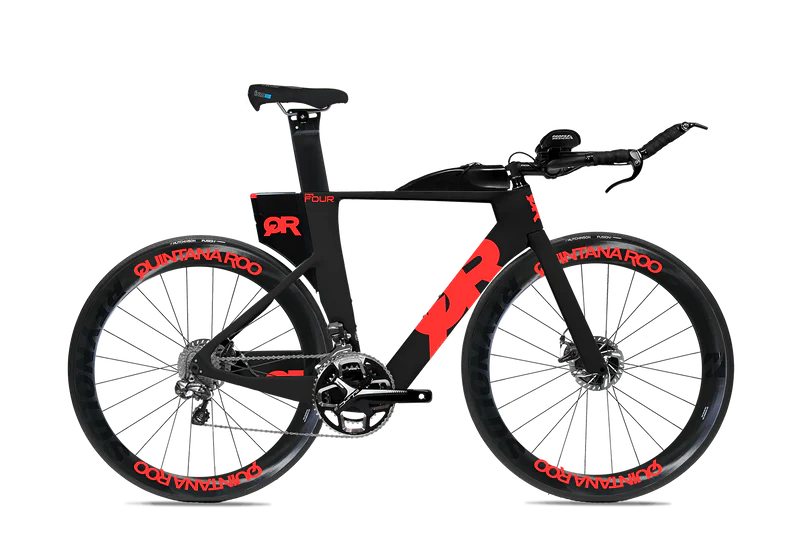
The QR PRFour Disc has the same frame and power of PRSix Disc with the consistency and security of disc brakes.
And, it’s one of the most affordable performance racing bikes since the base price starts around $3000.
What tech and specs make this bike worth looking at?
While this may not be considered a “superbike” it does have Profile Design aero bars. This brand has a multitude of aero bars and extensions to choose from along with bases. This makes it very easy to find a pair that works for every rider. Remember, that you can only reap the benefits of the aero bars if they’re fitted correctly to you and you feel comfortable in them.
The bike combines Shimano 105 11-speed components with TRP disc brakes, which makes the bike have lateral stiffness and stability. This is what you’ll need when you want to handle your bike at high speeds and handle it in cross or headwinds.
The bike has a standard front end, Shift+ technology, and boat tail airfoils. This makes it easy for the bike to be worked on and easy to travel. You’ll need two allen wrenches if you do your own repairs or plan to pack your bike.
Triathletes who have bought this bike say that it feels like it was made for them. It feels like they are moving with the bike and they’re working as a team together. This is, of course, after all the adjustments have been made and a bike mechanic tuned the bike to their measurements. Triathletes also like that the bike is easy to work on in their own homes if they choose. And, they are easy to pack for flights to destination races.
I highly recommend this bike if you’re looking for one with some high-end components but don’t want to spend tens of thousands of dollars on one. This bike can be worked on and improved so you’ll be sure it will stick around for a while.
4. Giant Trinity Advanced
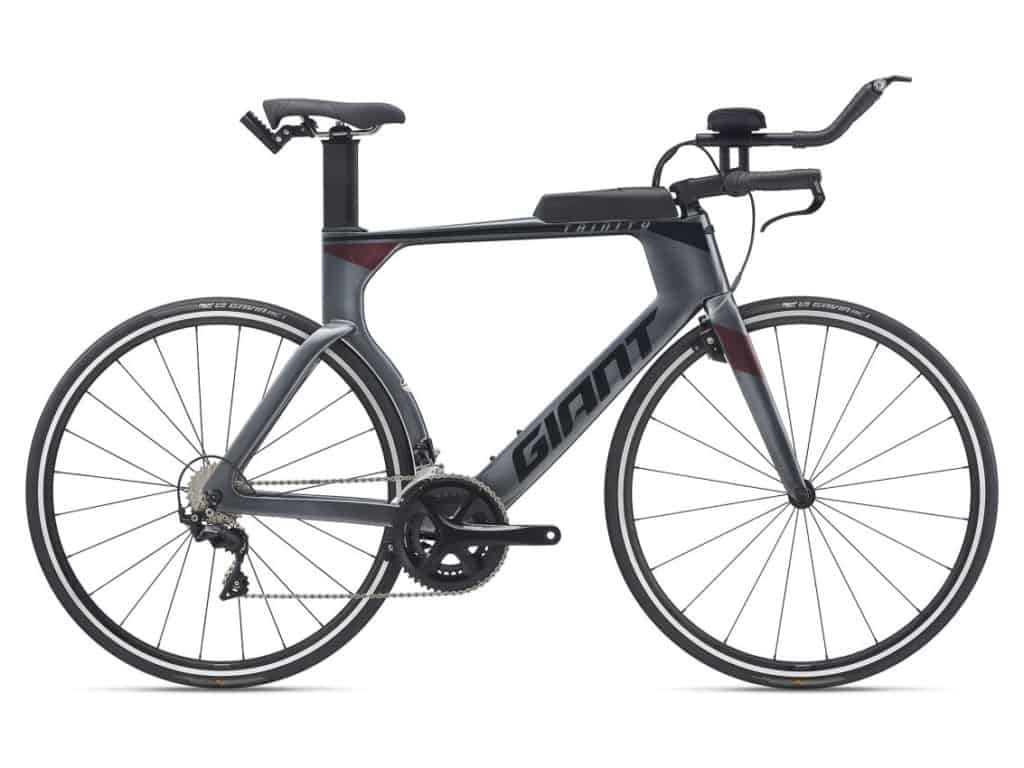
The Giant Trinity Advanced is a triathlon bike that has been designed with both aerodynamics and adjustability in mind.
The frame is made from Advanced-grade composite material and features AeroSystem Shaping Technology, which reduces drag no matter which direction the wind is coming from.
The SpeedControl brakes offer confident control without sacrificing aerodynamics.
The Giant Trinity Advanced is a triathlon bike that has been designed with extensive CFD analysis, dynamic wind tunnel testing, and a focus on providing superior aero performance.
The integrated design of the frame, components, and seatpost all work together to create a bike that is extremely fast and race-ready.
The frame geometry has been refined to provide a perfect fit for triathletes, and the wider range of adjustability ensures that riders of all sizes can find their ideal setup. With its focus on speed and efficiency, the Giant Trinity Advanced is a good choice for triathletes who are looking to shave seconds off their bike time.
5. Argon18 E-117 Tri Disc
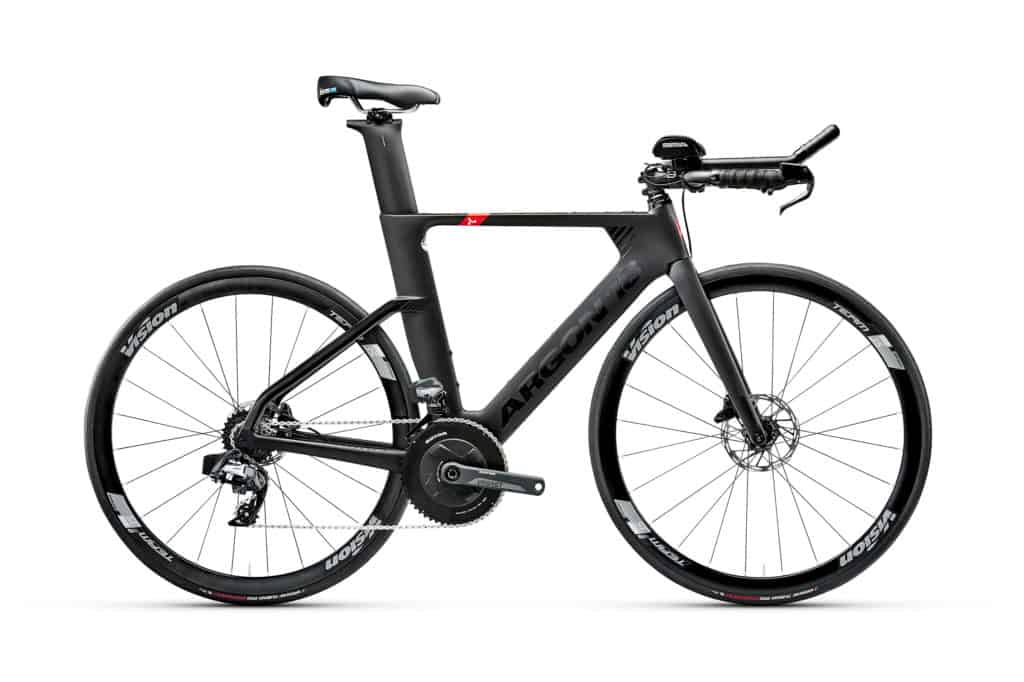
Argon18’s E-117 Tri is designed for triathletes of all levels, offering a fast ride and a comfortable, adjustable open cockpit.
The bike features Argon18’s proven aerodynamics and triathlon-specific geometry, as well as a 3D system that allows athletes to easily dial in their position.
The E-117 Tri is also equipped with a highly adjustable open cockpit that accommodates various aerobar setups. This makes it a great option for both experienced and novice triathletes who are looking for a fast, comfortable bike that can be customized to their individual needs.
Argon 18’s E-117 Tri is the perfect entry level triathlon bike for beginner athletes.
The frame is UCI legal, making it ideal for those looking to get some TT training in during the off season.
Argon 18 sees the E-117 as many an athletes introductions to triathlon frames. The E-117 is a great choice for those looking for a quality triathlon bike without breaking the bank. It features a lightweight carbon frame and fork and Argon 18’s proven geometry.
The E-117 is a great choice for beginner triathletes or anyone looking for a quality race bike on a budget.
6. BMC Timemachine One
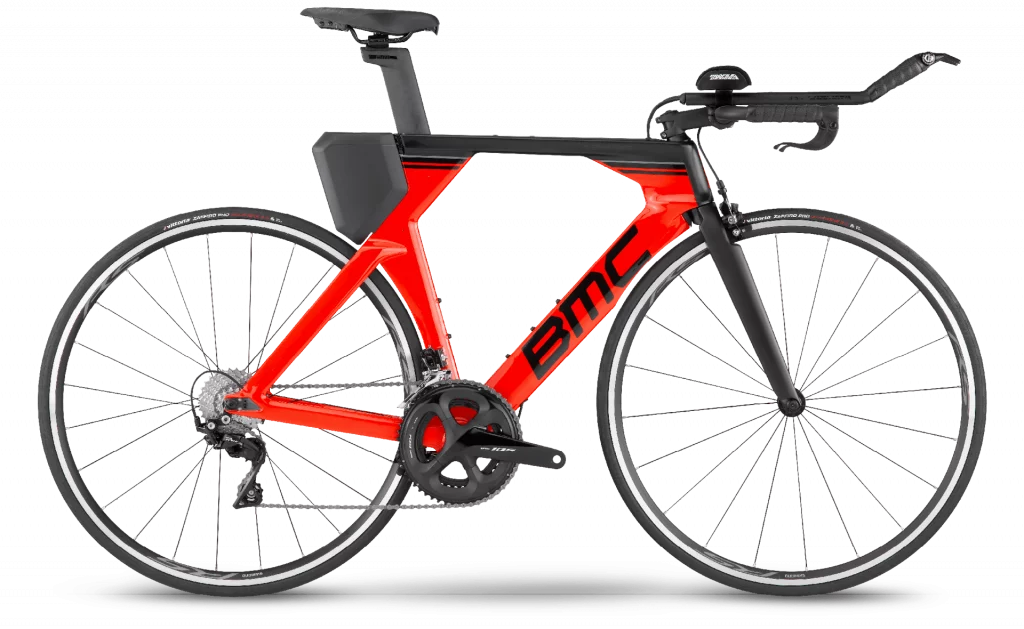
As an overview, the Switzerland-based company created their triathlon bike with a Shimano 105 11-speed drive train, Shimano RSO10 wheelset, BMC Aero Post, and Profile TT Handlebar.
The bike’s Position-to-Perform (P2P) system lets you find your ideal contact point to optimize and maximize aerodynamics no matter if you want a very aggressive or more conservative position in the saddle.
To make the bike more aerodynamic, BMC experimented with its tube shapes. This means the bike comes with truncated profiles and a super-lean frontal area that makes the bike very stable in crosswinds.
The V-Cockpit and the Flat Cockpit technology is great if you’re on a long ride and don’t want to stay in a very aggressive position. You can use either of these two cockpits without compromising aerodynamics because you’re tired of being in a super aero position on the bike.
Of course, there’s integration on the bike, like other triathlon bikes. It has an integrated brake system that leaves more room in the frame for storage. There is a rear mounted equipment storage box, tube top fuel compartments, and a dual downtube bottle cage. All that can help you get through your longer races.
I’d highly recommend this triathlon bike, it has all the basic components of a middle to a high-end road bike with building priority of multi-sport athletes in mind. If you’re looking for your second or even your first, I’d look into this option. You might be surprised that this is the bike for you. The different options for aero also make it ideal especially if you’re not used to riding in the aero bars and need to give your arms and back a break.
Mid-Range Triathlon Bikes for Ironman
1. trek speed concept.
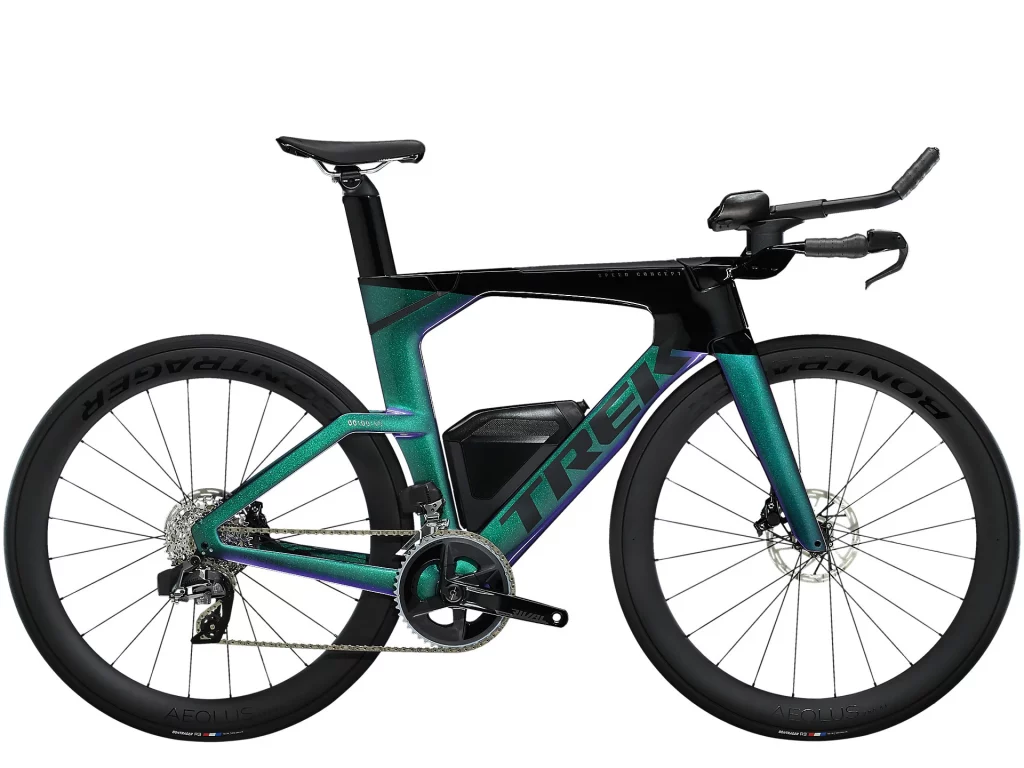
is one of the most tough-looking bikes you’ll see on the course this year. The bike itself looks like a cross between a triathlon bike and something The Dark Knight might ride if he rode a bike.
The bike’s specs and performance live up to its looks.
This is an “ultra-grade” aerodynamic bike with the most up-to-date technology available. It’s well-designed with a well-thought-out frame.
Speed Concept’s frame has been meticulously engineered for aero gains. It is 180 grams lighter than their previous chassis. The fork has been designed to provide stiffness and control while the headtube provides aerodynamic benefits. The seat stays are designed to provide stiffness and strength while the rear triangle helps to dissipate road vibration. All of these features combine to create a frame that is both light and stiff, providing the ultimate in performance.
Ultra-light 800 Series OCLV Carbon is actually a step-up from its predecessors. The design team reached the crossroad between price and value when putting together this bike.
The aero bars that come with the bike are made of carbon fiber and have a large range so you can find your “perfect” fit.
Trek is designed for efficient storage and easy access to hydration and nutrition supplies while bicycling. The Speed Concept’s storage system is designed to help you stay hydrated and fueled without compromising your aerodynamic position or sacrificing performance.
The downtube water bottle has been integrated into the frame, which helps to reduce drag. Additionally, Trek offers an optional between-the-arms water bottle, which can further decrease drag. Finally, the Speed Concept is equipped with an integrated Bento box, which can be used to store up to eight gels. This not only saves space, but also helps to keep the rider more aerodynamic.
When it comes to stopping power, disc brakes are superior to rim brakes in any condition. They work by squeezing a brake pad against a spinning disc, or rotor, which is attached to the wheel. This action slows down the wheel, and ultimately the bike.
Disc brakes are more effective in wet and muddy conditions because they are less likely to clog with debris. However, one downside of disc brakes is that they can add weight. Trek team has optimized the design of the fork and wheels to only add an extra 170 grams. By comparison, most disc brake designs add 450 grams of weight.
2. Canyon Speedmax CF 8 Disc
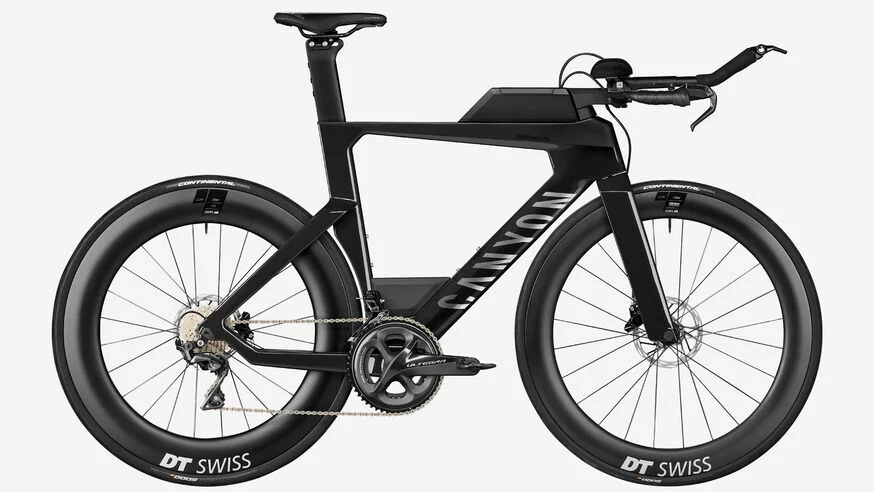
The Canyon Speedmax CF 8 Disc bike is known for its DT Swiss Arc 1600 wheels along with Shimano Ultegra groupset that makes this bike ready to race.
If you’re looking for a time trial/triathlon bike, where price and performance meets, this might be your bike. It won’t break the bank, and the components are nice for a mid-level triathlon bike.
This bike comes with a Selle Italia saddle, Profile Design 35A aerobars, and Canyon’s high-quality finishing components really push this bike to the top. It also has a carbon seat post, base bar, and wheels to make it look even more impressive.
Canyon installs its own integrations such as its storage box, which is great for storing triathlon racing essentials, such as a small repair kit and nutrition, or even out for a long ride.
If you want more integration tools, Canyon can install hidden brakes, integrated hydration system, and its own aero bars.
Be warned, the aero bars run wide, so if you are more petite you might have a harder time finding the right fit.
The braking system is reliable and you can stop with confidence so you can speed when you want and break only when you need to.
The only drawback to this bike, is the long crank arms, especially if you’re a smaller triathlete.
Although the price tag is not cheap, this bike is well worth it and I’d recommend it if you’re really serious about triathlons and slicing a few more seconds off your overall time. The bike doesn’t require too much attention other than making sure it has your specific specs. You could buy it on a weekend and race on it the next.
3. Cervelo P5
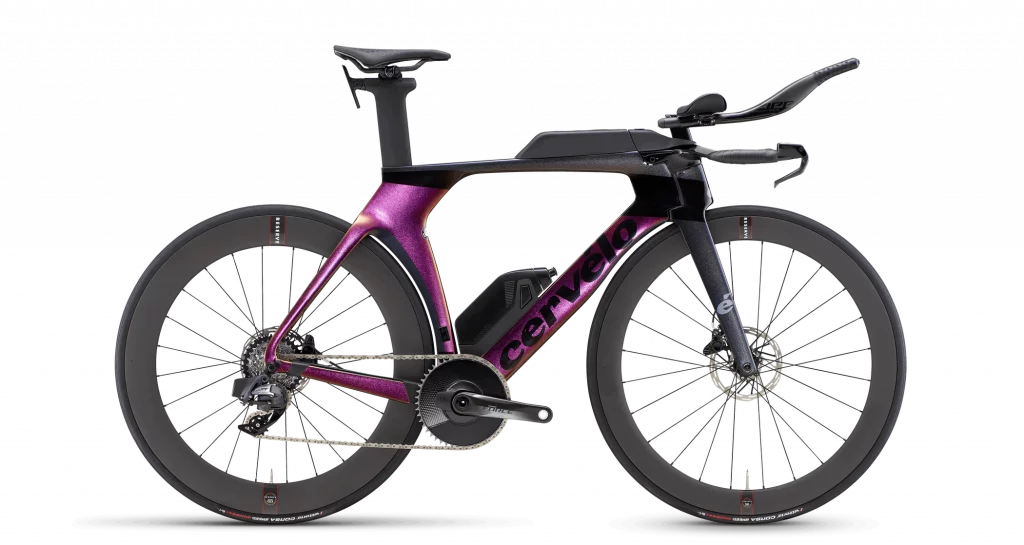
This Cervelo P5 is appropriate for those who consider themselves a mid to high-level triathlete who wants to make every second count on the course. It’s best suited for those who race Olympic distance races and longer.
And, for those who are eager to race, this bike comes ready to race. You won’t need to buy new accessories or transfer ones from your old bike. The P5 comes with a bento box, a downtube bottle, and back seat hydration already installed. If you want to pay a little extra, you’ll get a Vision front mount hydration bottle.
Additionally, the bike also has a cable cover that is integrated with a bento box. It’s practical and makes the bike look clean.
The P5 is light and stiff. It will help you go faster on the course and your bike will respond well to the terrain and how you handle it.
The bike was designed so that the rider and bike work together to take up as little frontal space as possible. If the rider knows an aerodynamic position, the bike takes care of the rest. The bike’s components were designed to take up as little space as possible and provide a powerful engine to its riders.
While this bike sounds high-end and exclusive, all parts are easily updated and replaceable. You can buy a frame from Cervelo and be assured you can upgrade any part at any time. This means you can “grow” and become a more confident biker with your Cervelo.
Depending on the components and what “extras” you’d like on the bike it can run between $3200-7000.
Triathletes who have bought, trained and raced on this bike like it because it’s actually different than other Cervelo models and helps them race faster. The frame is stiff and light which makes it easy to handle and corner and turn smoother and with little effort. The carbon fiber frame absorbs most of the road’s vibrations which makes it very comfortable to ride on for long races.
I highly recommend this bike to high-level triathletes who have been racing for a long time and want better equipment for their next A-race.
4. Felt IA Advanced
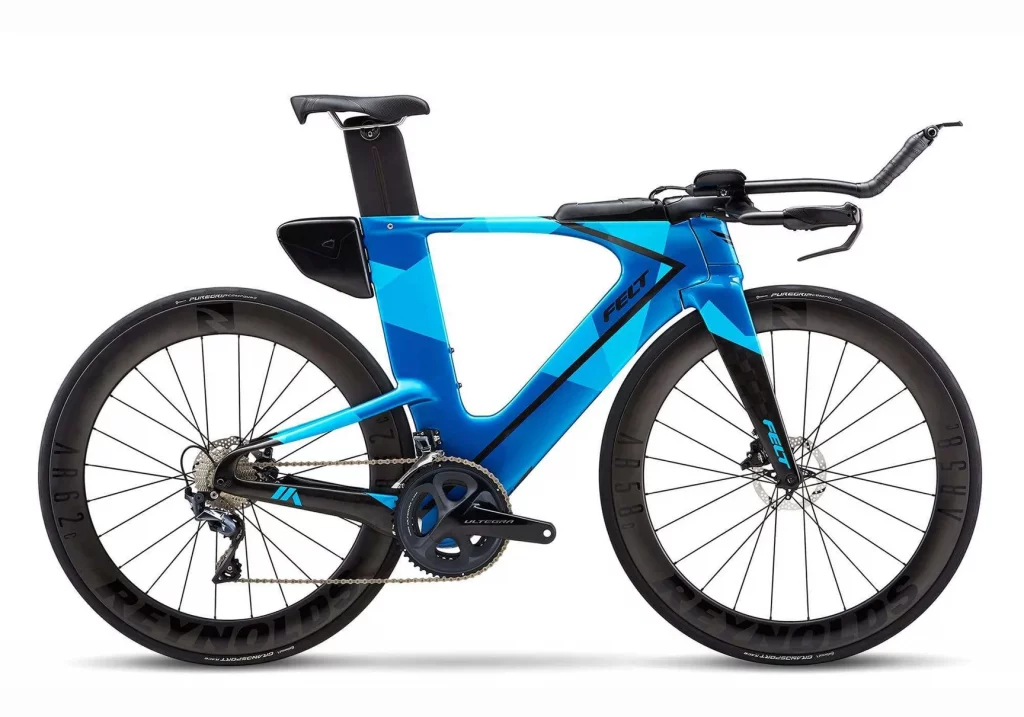
The Felt IA Advanced surpasses its predecessor since it upgraded from rim to disc brakes. And so, the frame was made to support the strength of disc brakes. And, the frame is designed to give riders a high-quality ride and enhance stability and handling response.
Additionally, the newest Felt IA has a user-friendly and well-fitted single head tube cover, which makes maintenance and adjusting easier compared to other models.
The rear disc brake has a triangle shape around it which makes the bike more stiff and responsive to stopping, of course, but also sharper shifting. This triangle also puts all your pedaling power to the rear wheel so that your stroke is efficient and every once of energy pushes you forward.
The bike has a high clearance so that it can accommodate tires up to 28mm depending on the rim size.
The bike has both tube top and seat tube storage. The tube top storage is integrated and has enough space for riding essentials that riders can easily access. The rear seat tube storage is ideal for biker’s flat-repair kit. And, it doesn’t create any drag for the aerodynamics.
Triathletes who have bought the bike say that the acceleration is seamless and happens very quickly. Most triathletes have been able to handle the bike well in cross and headwinds. And say cornering is easy. Every rider is a big fan of the integrated storage. They say that they can fit all the essentials they need and it doesn’t interfere with the aerodynamics. All triathletes say to make sure that the cockpit and aero bars fit properly before walking away with this beauty. Otherwise, you’ll end up frustrated on a bike not built for you.
I recommend this bike for those who want a bike a little nicer than the QR, just reviewed, in terms of components and materials. This does put it at a higher price point. But, be sure that the bike fits properly, especially the cockpit dimensions and aero bars.
Most Expensive High-Performance Triathlon Bikes
1. quintana roo prsix2 disc.
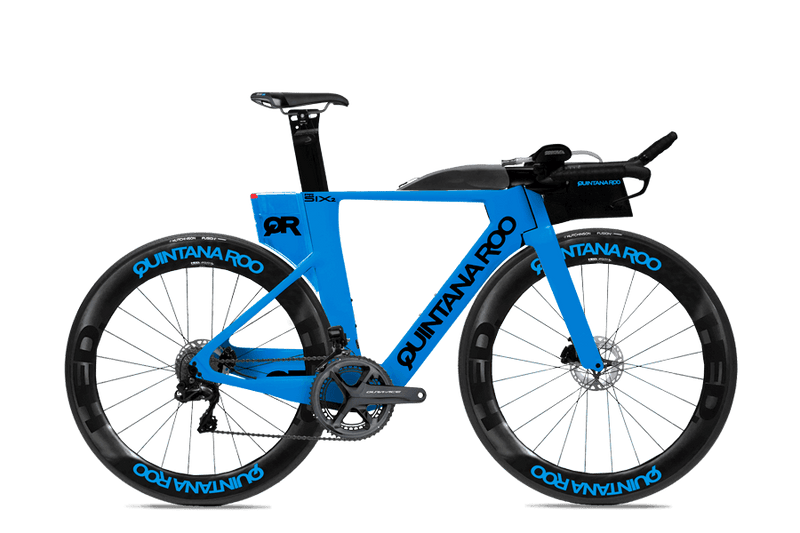
The Quintana Roo is an excellent elite-level road bike with high-quality features with room to grow with the bike and upgrade parts.
Like the other PR series, this bike has SHIFT + technology and QBox Storage system, but this bike has a few differences especially in the carbon layout and being budget-friendly.
Before talking about the bike’s performance, let’s briefly talk about the bike’s features.
To make this bike aerodynamic, the team designed an asymmetrical downtube to direct airflow away from the drive side of the bike. All of this helps the bike cut through the wind and might help you save energy on the bike. All in effort so you can have more energy and muscle strength for the run.
The QR team uses Boat Tail airfoil shapes to make the bike more stable and aero. The shape is made to prevent air pockets from accumulating around the back tube. This, in turn, reduces drag and increases aerodynamics and stability on the bike.
The bike comes equipped with Shimano Ultegra Di2 Electronic series drive train to help give you a reliable performance during training and race day.
Depending on your budget you can either buy very deep-rimmed (71mm) Enve SES 7.8 wheels to be even more aerodynamic. Or, Shimano RS370, which have a ride profile that you can rely on for seasons to come.
On the road, the bike is lightweight, responsive, and stable. The best you can ask for on any ride. It feels comfortable to go fast on the bike and still feel fresh enough for the run.
I’d highly recommend this bike if you’re looking into your first road bike or even an upgrade. You can get all the features of a more expensive bike for far less. And, best, yet, you might even take this bike with you for many seasons to come.
2. Scott Plasma 6
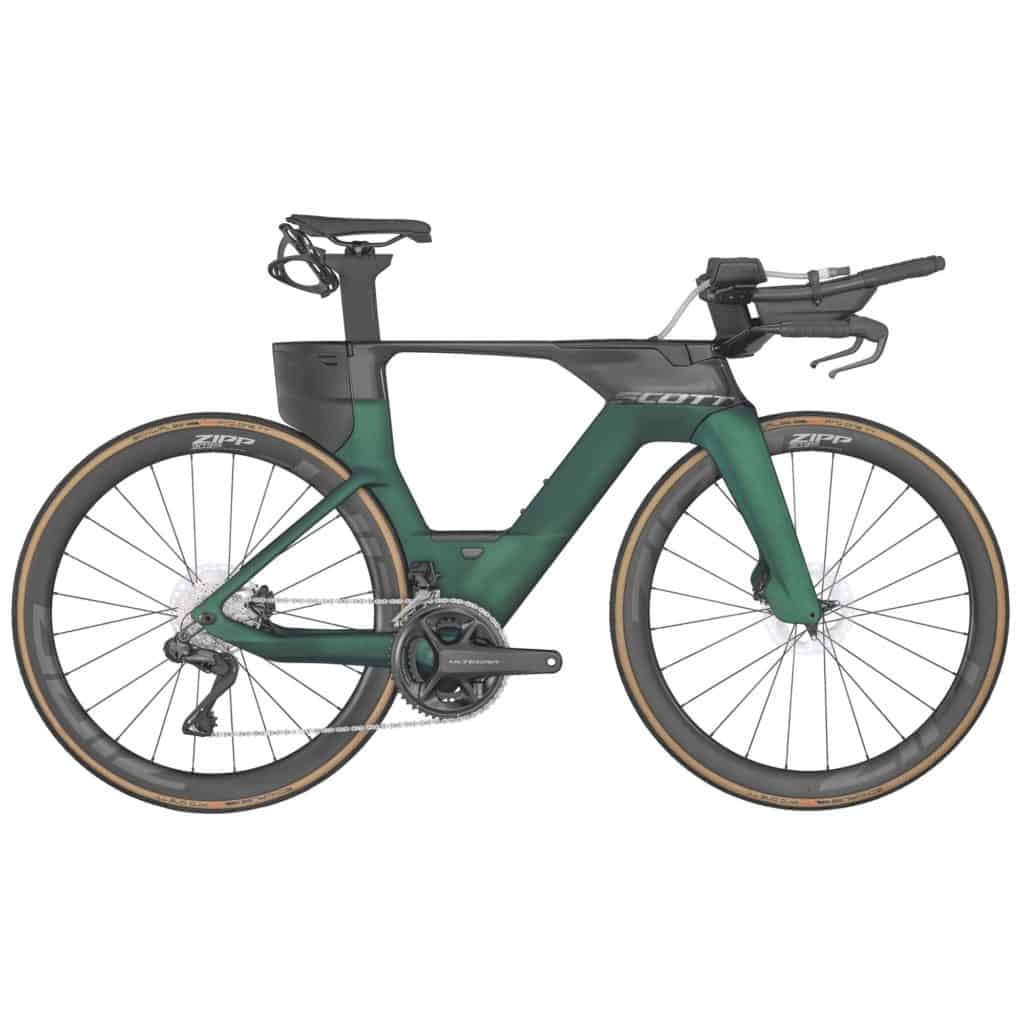
The Scott Plasma 6 is a triathlon bike that was designed with aerodynamics in mind. It has a number of features that make it fast and adjustable to fit a variety of riders. The frame is made from carbon fiber and is lightweight and stiff.
The Syncros engineering team focused on creating a system of base bars, extensions, and saddle positioning to allow for a huge range of adjustability. This makes the bike perfect for people of all sizes and riding styles. The bike comes with either a SRAM RED eTap AXS 24-speed groupset or Shimano Ultegra R8050 22-speed Di2 groupset, depending on the price point you select. It also includes Zipp 808 NSW carbon clinchers, Schwalbe PRO ONE TT tires, and Syncros Belcarra 1.0 TRI saddle.
Scott’s Plasma 6 triathlon bike is designed for speed and efficiency. The biggest indication of this is the bike’s wheel positioning. Scott understands that in the real world, the smallest movements of the front wheel create a lot of drag-increasing turbulence. To help offset this, the company has designed the down tube around the front wheel to be more aerodynamic. This allows for less drag and more speed, making it a more efficient bike overall.
Scott has also determined that taking the moving rider into consideration when optimizing airflow around the bike is important. This results in a more complex design but one that ultimately performs better. With these design considerations, Scott has created a faster, more efficient triathlon bike that is sure to perform well in competition.
The Plasma 6 is the latest in a long line of triathlon-specific bikes from Scott. It builds on the successes of its predecessors by integrating storage and hydration solutions into the frame while also improving aerodynamics. This makes it easier for athletes to fuel themselves during long rides and races. The bike also features a number of other inconspicuous storage solutions, such as a gel bottle stored above the bottom bracket and a storage box behind the seatpost.
Whether you’re looking for your next race bike or a bike to help you train for your first triathlon, the Scott Plasma 6 is a great option. It’s fast, adjustable, and comes with all the features you need to have a successful race day.
3. S-Works Shiv Disc

is a work of art aesthetically and for its components. It’s a machine on two wheels and is definitely on the higher-end of triathlon-specific bikes you can shop around for.
The bike was made so that the rider is well integrated and will be incredibly aerodynamic and handles crosswinds well. And, it’s packable for all your far away races and is extremely adjustable so you get the most comfortable fit possible. Of course, like other Specialized bikes, this one comes with the Hydration and Nutrition Fuelcell system ready to go.
Compared to other Specialized triathlon bikes, the Shiv Disc moved its Hydration and Nutrition Fuelcell from the inside of the bike to the back of it. So it looks hidden from the frame and makes the bike even lighter. And, with the new location, there can be more fluid stored on your bike. It makes “hiding” your nutrition simpler if it’s all in one spot.
The downtube now features “A New Shape of Speed” which can store a lot of nutrition. And, can be removed to access the Di2 A-Junction Box or your repair kit.
If you fall on either extreme of the height spectrum, Specialized thought ahead. The frame comes in four sizes and even then can be dialed up or down depending on your body type. The point is to find the most comfortable position that will make you aerodynamic.
Of course, other parts of the bike can be adjusted to fit your specific body height and your comforts on the bike. Aero bars, extensions, and arm pads are adjustable as well as the cockpit. This almost ensures that you’ll feel like you and your bike will move as one unit.
Triathletes who have bought this bike love it because it has so many adjustable options and fits a wide range of triathletes. The bike can be used for any type and distance of triathlon. It’s not too specialized but provides the right support for whatever triathlon goal they have. The new nutrition system works well and it does make the frame lighter but having more room for snacks does weigh it down a bit. Triathletes said at most they can have 10-12 gels, 4-5 bars, and 5-6 chews depending on their nutrition plan for a race.
This bike does come with a high price tag, but it might be worth it if you need a big upgrade or want a new bike.
I recommend this to anyone who wants a bike with a lot of room for storage and has a light frame. This is also a good option to consider if you’re on either extreme of the height spectrum. The company can work with you and help find the size and measurements that are suitable for you.
Triathlon and Road Bikes – Buyer’s Guide
Triathlon distances and formats.
Before I jump into the specifics, let’s quickly discuss the different triathlon distances and even the format of them. This will definitely influence your decision.
If you don’t know, already, a triathlon can take you either under an hour or over 15 hours to complete depending on the distance format. This means you can be on the bike for at least 30 minutes or possibly over 6 hours.
The two formats a triathlon can have are draft-legal and non-drafting. The majority of age-group events don’t let you draft. This means you must be at least five bicycle lengths or 12 meters behind the person in front of you. Exceptions of course when you’re passing.
In other words, in a non-drafting race, you cannot put yourself at an advantage by riding the wheel of the person in front of you.
For non-drafting races, many triathletes choose triathlon bikes instead of road bikes . This allows them to have the best aerodynamics without drafting. These bikes also have highly developed integration, and storage; while trying not to compromise comfort. On the other hand, draft-legal races such as International Triathlon Union (ITU) races, World Champions, and even the Olympic games, allow triathletes to ride the wheel of the person in front of them.
In draft-legal races, time trial bikes are not allowed and road bikes must meet the UCI road bike regulations.
To sum up this part, all four distances ( sprint , Olympic , half Ironman , and full Ironman ) can be non-drafting races, where triathlon bikes can be used. However, only sprint and olympic distances are most likely to be draft-legal and road bikes must be used.
Road Bike vs. Tri Bike vs. Time Trial (TT) Bike
One of the most frequent questions, is what is the difference between a road, triathlon, and time trial bikes? It mainly has to do with the geometry of the bike’s frame, specifically the seat tube angle.
If you’re not sure what the seat tube is, it’s the long tube that reaches down to the bottom bracket up to the seat itself. The angle of the tube is relative as if there is a horizontal line that runs through the bottom bracket.
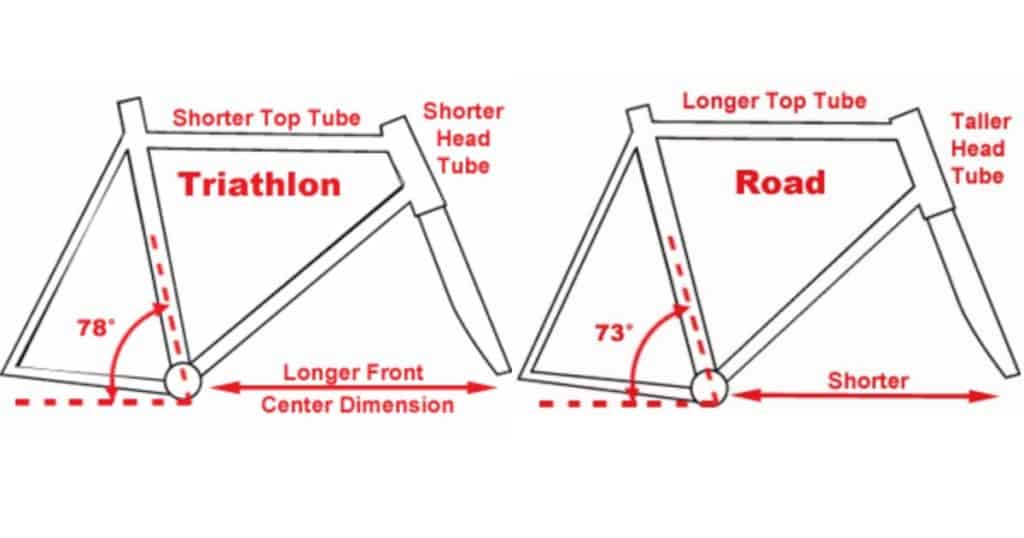
On a traditional road bike, you’ll have a 72-degree seat tube angle. While a triathlon bike starts with 76-78-degree seat tube angle.
Muscles Used
On a road bike, the seat tube angle puts you in a position where you use muscles such as your hamstrings and quads. This is great if you’re just doing the cycling, but after the bike, your legs will have to adjust to running.
This is where triathlon bikes come in.
The theory, to this day, is that if you’re riding in a more forward and aerodynamic position you use your quad muscles less. And, thus saving them for the run after you jump off the bike.
Triathlon and Road Bike for Your Needs
But one of the more important ones is the type of area you train and race in.
For example, if you live in a mountainous or hilly region, you need a bike that allows you to use all your leg muscles when you’re climbing up long and winding hills. A road bike would be ideal in this situation since you get the most power from sitting further back from the handlebars.
If you were on a triathlon bike trying to go up a hill, the bike’s geometry might force you to back out of the saddle just to stay in an aerodynamic position. This is not only uncomfortable for you, but also very inefficient.
You’ll hear people argue points from both sides when it comes down to it.
Many say that a good set of wheels make up for the inefficient geometry when you’re climbing hills on a triathlon bike.
While others point out that a traditional road bike can be made into a triathlon bike. You can change the seat post or buy clip-on aero bars .
Another factor is what you’ll use your bike for. If you’re just using your bike for triathlons, then a triathlon bike might be a good option for you.
However, road bikes are very versatile and can be your “everything” bike. This is especially important if you bike outside of triathlons or even go on bike tours.
Buying a tri bike isn’t the wrong choice, just read further so you can pick the right one for you.
If you’re sure, at the point in the article, you need a road bike, you can skip to the product review.
Before going into the specifics of a triathlon bike, I’ll briefly tell you about time trial bikes.
Time Trial Bikes
Time trial bikes are a sub-genre of triathlon bike and are one of the most specialized bikes you can buy.
A time trial bike, while similar to a triathlon bike, has some differences.
For example, you’re not positioned so aggressively on the bike since no part of the bike can be three times longer than the rest.
Time trial bikes must adhere to the International Cycling Union (UCI) rules, which means that the tip of the saddle must be 5cm from the center of the bottom bracket. And, time trial bikes are more commonly used for cycling races so it’s built with that purpose in mind.
The bike is good for shorter races, but not for Ironman type of events.
Triathlon Bike Specifics
To give you a more complete description of a triathlon bike, I’ll give you information about the fit, frame, gearing/components, saddle, handlebars/aerobars, and wheels.
A rider’s comfort strongly influences how a bike is built and triathlon bikes aren’t the exception to this rule.
Triathlon bikes need to make the rider feel comfortable in the saddle for long periods of time in the aero position. This affects how the rider feels after the bike and starts the run.
As a result, triathlon bikes are aggressively built so that the seat tube angle starts at 74-degrees and can go over 80-degrees.
This very aero and aggressive position are hard to maintain so to fix this, the crank length is often shorter than on road bikes. This helps you if you don’t have the flexibility or lack mobility in your lower back and hips. Triathlon bikes also have a longer tube top and an elongated reach to put riders in a more horizontal position. This technology ensures that a rider’s weight is evenly distributed over both wheels.
Aerodynamics
Like any bike, aerodynamics is the main factor when they are being built.
Triathlon bikes come with more stops on the design map since they need to incorporate storage for any nutrition riders need for long races.
Often, triathlon bikes are built with oversized tube profiles, which makes the wind pass by the bike without creating drag. Oversized tube profiles are often found on a bike’s front forks, downtube, and seat tube.
Triathlon bikes also have hidden features such as brakes, cables, and storage. For example, the brakes are often found somewhere where the front forks are or behind the fairings of the bike.
Internal cables are being used over external ones since they aren’t prone to weather conditions.
And, finally, the wheels make triathlon bikes more aerodynamic. These bikes come with deep rims to help slice through the air.
Integration and Storage
I’ve mentioned storage in the previous sections, but let’s dive into now.
Integration for storing your nutrition on the bike is not just a part of the aerodynamic design, but a practical one especially once you get out on the course.
Storage comes in different forms since bike companies have gotten creative with it.
For example, some bikes have a front hydration system that can hold as much water as your water bottle. This helps you stay in aero while keeping yourself hydrated.
Other bikes have an integrated toolbox located between the front and rear wheel, which is great for storing extra tubes and tools.
Nearly all brands have a food storage box integrated on the top tube.
Triathlon bikes go beyond gear ratio and range since they already have the best on it.
The real choice comes between buying a triathlon bike with electronic or mechanical gearing. Electronic gearing lets you shift gears from both time trial bars and the brake bars so you don’t have to come out of aero to shift. This also streamlines the shifting process since the bike has internal cables.
Be sure that if you go with electronic shifting that you’re all charged up for race day! The last thing you need is to be stuck in an extreme gear.
Saddles on triathlon bikes are meant to put riders in a more aggressive and aerodynamic position.
Compared to road bike saddles, they are shorter with the middle section cut out to take the pressure of soft tissue of the pelvis.
The purpose of the extension handlebars is to keep your wrist in a neutral position and keep your elbows and shoulders at a right angle. While this position seems odd, it actually provides good base support and won’t affect other parts of your body.
Extensions can come in different shapes and it depends on your comfort level.
Most extensions come in a straight, curved, or pointed upward shape. Try out a couple and figure out what works best for your body.
Keep in mind you might be in that position for hours at a time.
Road Bike Specifics
If you’re reading this part of the buyer’s guide, then you’re definitely buying a road bike.
Like the previous section, I’ll provide detailed information about the bike such as the frame, geometry, etc.
There are some components not found on a road bike such as storage and aero bars, but I will get into that in the following subsections.
To get a base understanding, road bikes are versatile and can be used to compete in high-level triathlons or for social rides and staying in shape.
From there you have different options, and we can begin the discussion there.
Types of Road Bikes
There are a few different road bikes out there for you to choose from. So as not to overload you with information, I’ll briefly describe each kind.
These bikes are made for speed and comfort so weight isn’t so much a priority for the rider. You’ll also find deep-rimmed wheels and nearly everything is integrated such as the brakes, cables, and shifting.
Generally, these bikes have a larger tube profile to reduce drag and increase stiffness.
Endurance Bikes
Compared to traditional road bikes, Endurance bikes longer wheelbase, head tube, and a less aggressive geometry for rider comfort.
Often, these types of bikes are made from the same material as light-weight bikes such as carbon fiber.
Lightweight Bikes
For lightweight bikes, the name of the game is keeping weight down.
These bikes aren’t made to be aerodynamic, they are made with the lightest materials and are best used if you’re climbing hills
Gravel/Off-Road Bikes
Gravel/off-road bikes are made so that the rider can bike anywhere, which makes them one of the most durable bikes on the market.
These bikes have a higher bottom bracket so riders can go through obstacle courses and wide clearance for fat tires. The gear ratios are lower so that riding off-road or in extreme conditions can be easier.
Touring Bikes
Similar to gravel/off-road bikes, touring ones aren’t so concerned with aerodynamics and lightness.
These are built for comfort and long rides if the rider is going from one city to the other.
You’ll often see these bikes with fender and rack mount for saddle bags.
Touring bikes are typically made of steel and its upright geometry helps the rider feel stable to help while carrying a heavy load.
Recreational Bikes
Recreational bikes help riders get from A to B and are well suited for new riders or those who like to do a lot of social rides during the summer.
You’ll find flat bars, wider tires, and an easy gear ratio on these bikes as they are supposed to get the rider to enjoy riding with others.
Frame Material
For triathlon bikes, they are all made with carbon fiber or other light materials, which are easy to mold into different shapes. And that’s why triathlon bikes sometimes come in some interesting forms.
For road bikes, you have a handful of choices to choose from. And, it all depends on what you’re going to use your bike for.
Carbon Fiber
Carbon fiber is one of the best materials you can find on a road bike. It has an optimal balance between lightness and stiffness to give you a comfortable ride. The carbon helps to absorb most of the bumps you would feel if you were on an aluminum bike.
The only disadvantage of an all-carbon bike is its fragileness. The material is prone to cracking if there is a large amount of stress put on an area such as a crash’s impact. You can compromise the carbon if you over-tighten the bolts on your bike as well.
Once the carbon has been compromised, you’ll need to either replace or repair it. Otherwise, it is unsafe to ride.
Aluminum is the next lightest material after carbon fiber and has some of the same properties such as lightness and stiffness.
These bikes have a strong power transfer thanks to aluminum’s stiffness and the tube’s thickness.
Often, so that the rider won’t feel the vibrations of the road, aluminum bikes will have carbon forks.
A downside to this material is that it will wear down over time, but with proper care, it can last for years to come.
Aluminum can be a good option if you’re looking for high-performance but on a budget.
Titanium is relatively light-weight compared to steel and is more durable than aluminum and carbon fiber.
Titanium is one of the most difficult materials to work with, so it does make the bike more expensive compared to an aluminum or steel one.
Titanium is the strongest of the materials I’ve discussed so far. The material is so durable that it stays resilient even after a crash. It takes a lot to break a titanium bike.
New building and machining techniques allow titanium bikes to be light and have all the riding comforts of an aluminum or carbon fiber bike.
Steel, while still a solid option for a road bike, is best if you’re buying a gravel/off-road or touring bike. They will last for a long time and can be your “forever” bike.
Group Set/Drive Train
A bike’s engine is its brakes and drivetrain, no matter if it’s a road or triathlon bike.
A drivetrain is made of cranks, chainrings, chain, cassette, derailleurs, and shifters. All these mechanisms help move the bike forward as you pedal.
The better the drive train, the more efficient, durable the ride becomes, and the shifting is nearly seamless. Of course, this comes with a high price tag.
Entry-level group sets are made of low-grade aluminum while higher ones are made from carbon fiber and titanium.
For a more detailed rundown of a bike’s group set/drive train check out this article.
A gear ratio is a combination of the number of chainrings found on the front and the number of teeth on those chainrings; and the number of cogs and the number of teeth on the cogs in the back.
Now that you have the definition of a gear ratio, you’ll understand when I say that gear ratios vary greatly and it largely depends on the bike’s purpose.
Most road bikes will have two front chainrings with 53-teeth for a regular set-up and 39-teeth for professional and high-level athletes. Generally, a smaller chainring has easier pedaling ratios.
For the back gears, it cassette’s cogs can be changed to make the gear ratio easier or harder for the rider.
Most cassettes have either 10 or 11 cogs and the smallest ratio is 11-25 while the largest is 11-28.
What does this mean?
If you have an 11-25 cassette ratio, the smallest cog will have 11 teeth while the largest has 25.
If you have a big difference between the small and large cog, the more the chain has to move when you shift gears. This makes your pedaling speed inconsistent while you change gears.
A bike with an easy pedal ratio will have smaller chainrings on the front and a larger ratio cassette on the back. This also gives the rider a large range of gears and pedaling rations.
The opposite of this is for bikes built for speed and have a smaller range of gears.
The last part to talk about are the wheels of the bike.
If you remember from a previous post , I talked all about wheels and that it’s basically made of a hub, that the wheel spins around, the spokes connecting the hub and rim, and the nipples which connect the spokes to the rim.
A wheel’s depth and width indicate how it will feel during a ride.
Your bike, if you buy an entry-level to intermediate level, will come with aluminum wheels of various qualities.
Are triathlon bikes worth it?
Triathlon bikes are absolutely worth it if you are passionate about the triathlon, and looking for an edge on your competition, a triathlon bike may be just what you need.
If you are new to the sport of triathlon, you may be wondering if a triathlon bike is worth the investment. After all, triathlon bikes can be quite expensive. However, there are several factors to consider that may help you make your decision.
First, if you are well trained and have a strong passion for the sport, you will likely get more use out of a triathlon bike than someone who is just starting out. Second, triathlon bikes are designed specifically for aerodynamic efficiency, which can give you a competitive edge in races. Finally, if you want the best possible equipment to help you reach your goals, a triathlon bike is definitely worth the investment.
So, if you are ready to take your triathlon training to the next level, don’t hesitate to invest in a quality triathlon bike. It could just be the key to unlock your potential as a competitive racer.
Does a triathlon bike make a difference?
For the uninitiated, a triathlon bike might not seem all that different from a standard racing bike. However, there are a few key features that make a triathlon bike ideal for the demands of long-distance racing.
First, triathlon bikes have a more aerodynamic design, which helps to reduce wind resistance and increase speed. Second, they are often equipped with larger gear ratios, which makes it easier to maintain a high cadence over long periods of time. While a triathlon bike is not essential for every race, it can certainly give you an edge on the competition
What type of bike is best for triathlon?
Deciding whether to use a road bike or triathlon bike for a triathlon is a difficult decision. Road bikes are more versatile and can be used for a variety of activities, including road racing, time trialing, and even cyclocross. However, they are not as aerodynamic as triathlon bikes.
Triathlon bikes, on the other hand, are designed specifically for triathlons and are therefore more aerodynamic. They are also often lighter than road bikes, making them easier to ride on long distances. Ultimately, the best type of bike for a triathlon depends on the individual rider’s preferences and needs.
What is special about a triathlon bike?
A triathlon bike is designed with the specific needs of a triathlete in mind. The seat tube angle is steeper than on a road bike to allow for less tension on the quadriceps and hamstrings. Storage features are more abundant for convenient access to necessary items during the race. Triathlon bikes are wind tunnel tested to make sure that each detail from the frame down to the wheel contributes to making the rider as efficient as possible.
Choosing a road or a triathlon bike, no matter if it’s your first one or an upgrade, is exciting and a big deal. While this list is a good start to your bike search, be sure to get fitted at your local bike store! There you can tell them your needs, budget, and goals for biking. They’ll help you from there. If you’re an experienced triathlete, be sure to read the return policy if you’re buying from an online store.
7 thoughts on “Best Triathlon Bikes”
hello just read your article about road bikes I want to change my Giant TCR 6 years old and I am not sure of what to choose I saw 3 options, Giant TCR Advanced Pro Disc, Cannondale Systemsix and Orbea Orca Aero M20i I do cycling tours and competitions in mountain type profile but also I compete in Thriatlon in summer so I want the balance to be able to keep those activities but with a significant improvement on the bike What would you recommend? My worry is to buy a too agressive aero bike and then have problems uphill Also my back suffers if I go in aero position all the time Thank you for your comment
From your options, I recommend Giant TCR Advanced Pro Disc. Systemsix and Orca are not as good for climbing as Giant.
How about a Cannondale CAAD12-13 or a Specialized Allez? What is your opinion of reversible seatposts for triathlon and road use ??
Does anyone know how to get ahold of the Diamondback Andean 1? Numerous publications have touted it’s abilities but they have been out of stock on the Diamondback web site for well over a year
More info from ST: “I contacted Diamondback directly and was told that the frames are currently in production at their factory and they expect deliveries to begin around the end of the month.
On one hand, this sounds much like the messaging posted here in March. On the other hand, if its not shipping sometime soon, that will be enough to convince me to look to spend my money elsewhere. I’m holding out hope that there were production issues earlier this year, and we will see the 2019 model available soon. “
Hey Ryan Just sold my old and much-loved Specialized transition expert from 2010. I’m a decent age-grouper and I’m happy with my Mavic cxr wheels so looking for a complete frameset and any help appreciated. I’ve thought about this (ok I dreamt about this) and some of these requirements are to ensure compatibility between bikes
1. 51/52 frame 2. suitable for HIM. Ideally onboard/in-frame hydration possibilities. not sure how widespread this is 3. rim braking 4. ideally a tad better carbon than my old Speccy Trans Expert 5. ultegra mechanical 6. 11spd 7. I run sensible 25/23 tyres, nothing too wide 8. I might even favour an older 2018 era frameset if i can save some $$$.
many thanks for any pointers! My brain only sees cervelo and specialized. so i need the advice of someone a little more open-minded 😉
ty in advance
Hi Mark, Cervelo and Specialized are great, but you can also check out these bikes: Quintano Roo PRFive and PRSix, Canyon Speedmax CF or even Trek Speed Concept. Not an easy choice, good luck! 🙂
Leave a Comment Cancel reply

Best Triathlon Bikes: What Brands to Watch for 2024

There are certain triathlon bike brands that consistently outperform their competitors year after year.
True trendsetters in time trial technology, these brands push the envelope in aerodynamic design and engineering as well as improved comfort, storage, and adjustability.
The brands that top the podium for the best triathlon bikes are characterized by their latest models (and what the pros are riding). Here are some of the top brands and what models to look for in 2024.
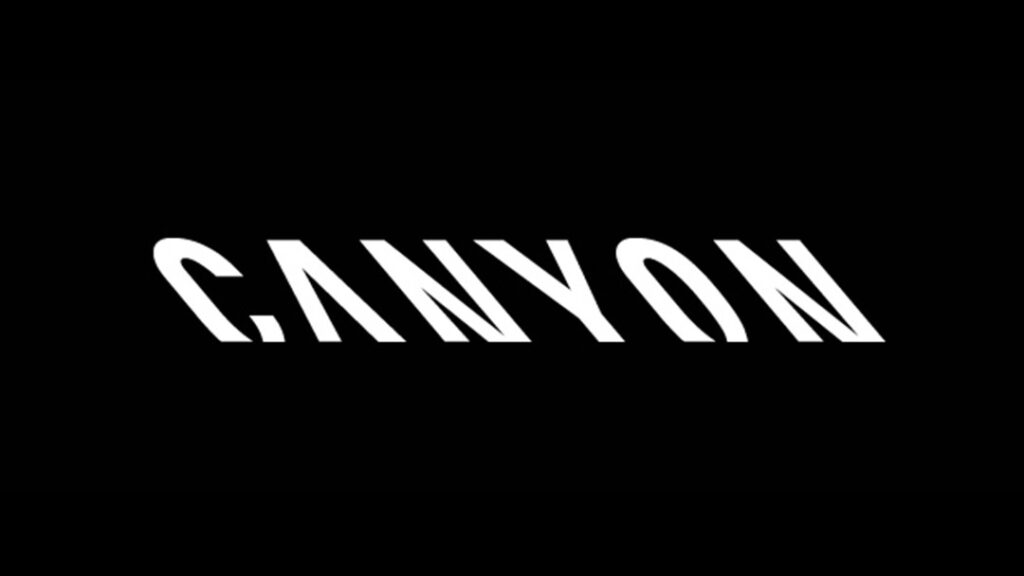
Canyon stands out in the triathlon bike market for its commitment to combining cutting-edge technology with direct-to-consumer affordability.
Canyon triathlon bikes represent the upper echelon in the market, appealing to both amateur and professional triathletes, including 2023 Ironman World Champion Sam Laidlow and previous champion Jan Fordeno . Both athletes ride Canyon’s Speedmax CFR Moonshot.
Canyon Speedmax CFR
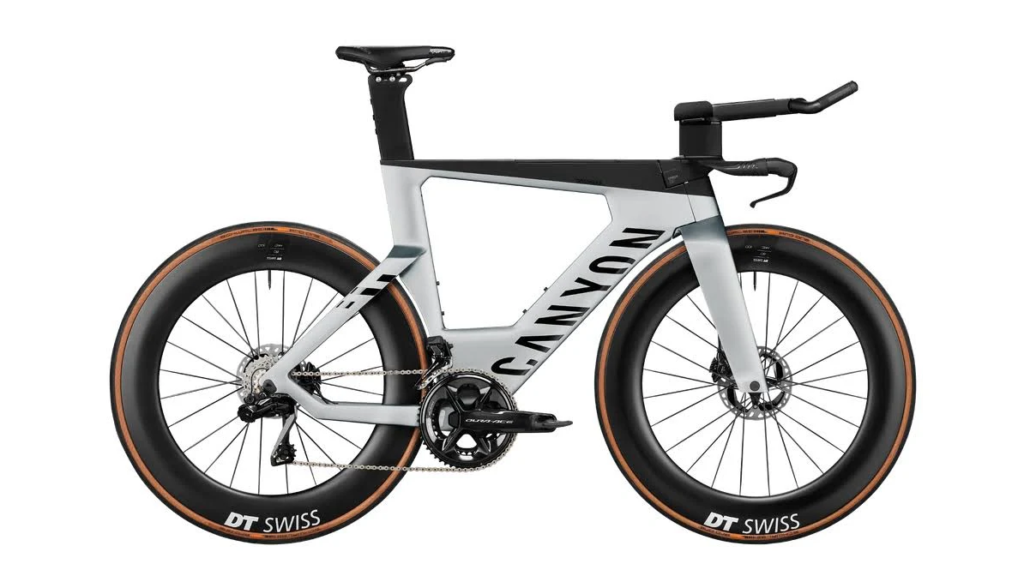
Available in various models and configurations, the Canyon Speedmax CFR is designed to provide a very aero and aggressive ride, with a focus on maximizing speed and performance for triathletes.
Key features include:
- Enhanced aerodynamics : With a deep-profile fork that covers the brake caliper, internal cable routing, and thinly sliced frame design, the CFR is 9 to 12 watts faster in testing results compared to previous Speedmax bikes.
- Optimized functionality and fit : Deep tube shapes and neatly integrated internal storage of hydration and tools, along with highly adjustable modular aero bars with a narrow mono-stay riser and telescoping extensions.
- SRAM Red groupset : Electronic 1×12-speed SRAM Red eTap groupset, fast and flawless, and designed for maximum performance. It’s also available in Shimano Di2 builds as well.
- Dialed fit : Ergonomic adjustable carbon cockpit specially optimized for time trialing and track cycling, providing the ultimate in aerodynamics and comfort.
- Aero in the details : Ultra-thin 8 mm seatstays sculpted in the wind tunnel to reduce drag and rear wheel turbulence to an absolute minimum.
The Canyon Speedmax CFR eTap weighs 19.44 lbs (8.82 kg) in a medium-sized frame. It’s a renowned podium-topper that proves itself time and time again in the pro and elite fields.
Visit Canyon.com to see the full fleet of Speedmax CFR models.

Felt has earned a reputation in the triathlon world for its relentless innovation and aerodynamic efficiency. Sponsoring top performers like Daniela Ryf , Felt bikes are designed with a clear focus on speed and performance.
Felt bikes are often recognized for their smooth ride quality and precision handling, which make them a favorite among both competitive and recreational triathletes.
Felt IA FRD 2.0
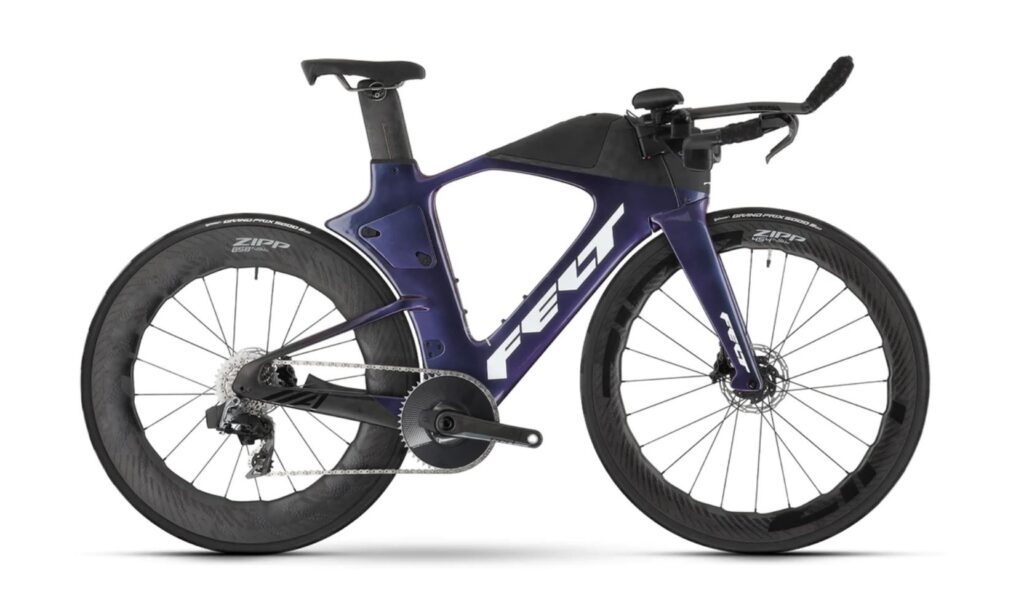
The 2024 Felt IA FRD 2.0 triathlon bike is equipped with a range of features designed to enhance aerodynamics, integration, and performance.
- New look : The IA FRD 2.0 is the Ferrari of triathlon bikes, with the 2024 edition offering an aero-optimized silhouette and smart integrations.
- 1×12 or 2×12 : The triathlon bike accommodates both 1x and 2x chainring setups with a 12-speed cassette, depending on your preference and course demands.
- Improved handling and stability : The IA FRD 2.0 is known for its precise handling, stable performance in windy conditions, and low drag profile, making it one of the most aerodynamic triathlon bikes in the world.
- Aero-efficient frame design : The new and improved IA carbon frame is meticulously fine-tuned for more speed and performance, along with integrated storage.
- Mindful storage : The IA FRD 2.0 offers a storage compartment on the frame’s drive side, supplied with a custom soft-sided Silca pouch for tools and accessories.
- ZIPP equipped : The Felt IA 2.0 comes with a tubeless-ready ZIPP 404 Firecrest Disc wheel in the front and ZIPP 808 in the rear.
- Wireless electronic shifting : As with most new triathlon bikes, the Felt IA 2.0 is available in SRAM eTap or Shimano Ultegra Di2 groupset for seamless shifting.
Combined with integrated storage and hydration, a complete build of the Felt IA FRD 2.0 triathlon bike is 21 lbs (9.53 kg).
Visit FeltBicycles.com to view the complete line-up of IA FRD 2.0 triathlon race bikes.
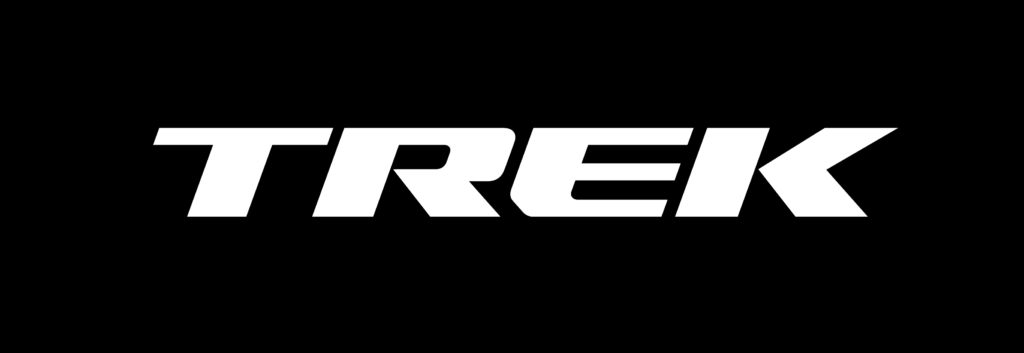
When it comes to high-performance triathlon bikes, Trek has a legendary reputation for its enhanced aerodynamics and continuous design innovation. The brand is a preferred choice for competitive age groupers and pro athletes alike, including Paula Findlay, Rudy von Berg, and Sara Svensk.
Trek Speed Concept SLR 9

Trek’s decades-old flagship model, the Speed Concept, is a testament to prototypes used by Lance Armstrong and Chris Lieto. The latest edition is the Trek Speed Concept SLR 9, an aerodynamic carbon triathlon bike engineered for incredible speed and seamless integration. It also has a timeless sleek look that isn’t overly futuristic.
- Aerodynamic Design : The ultralight 800 Series OCLV Carbon frame’s drag-reducing Kammtail Virtual Foil tube shapes cut through the air, making it the fastest bike tested by Trek.
- Integrated Fuel and Hydration Storage : The bike features smart integrated fuel and hydration storage, making it simple and stress-free to stay strong without leaving the aero position.
- Top Tube IsoSpeed : This feature takes the edge off rough roads and is damped with an elastomer, providing a smooth, controlled, stable motion.
- Adjustability and Comfort : The Speed Concept SLR 9 offers improved comfort, storage features, and adjustability, making it worth the wait over the previous version.
- Shimano Dura-Ace Di2 R9200 : The bike is equipped with the pinnacle of Shimano road technology and innovation, the new 12-speed Dura-Ace Di2 R9200, which is Shimano’s fastest ever.
- Customizability : It is fully customizable through Project One, allowing users to choose their model, paint, and parts.
- SRAM RED AXS option : The AXS variant of Speed Concept SLR 9 provides an alternative wireless electronic groupset option that SRAM junkies will appreciate.
The Trek Speed Concept SLR 9 weighs 19.19 lbs (8.70 kg) in a medium-sized frame. It’s the hallmark of triathlon bike technology and a legacy in the industry.
Visit TrekBikes.com to learn more or order yours directly from Trek.
Specialized

Specialized is renowned in the triathlon community for its holistic approach to bike design, which encompasses speed, comfort, and rider-centric innovation.
The brand is known for its extensive research and development, leading to triathlon bikes that offer wind tunnel-tested aerodynamics, ergonomics, and functionality.
Specialized’s dedication to creating bikes that fit a wide range of athletes, coupled with their advanced technology like the Body Geometry fit system, makes their bikes a top choice for triathletes seeking a blend of performance and personalized comfort.
S-Works Shiv Disc
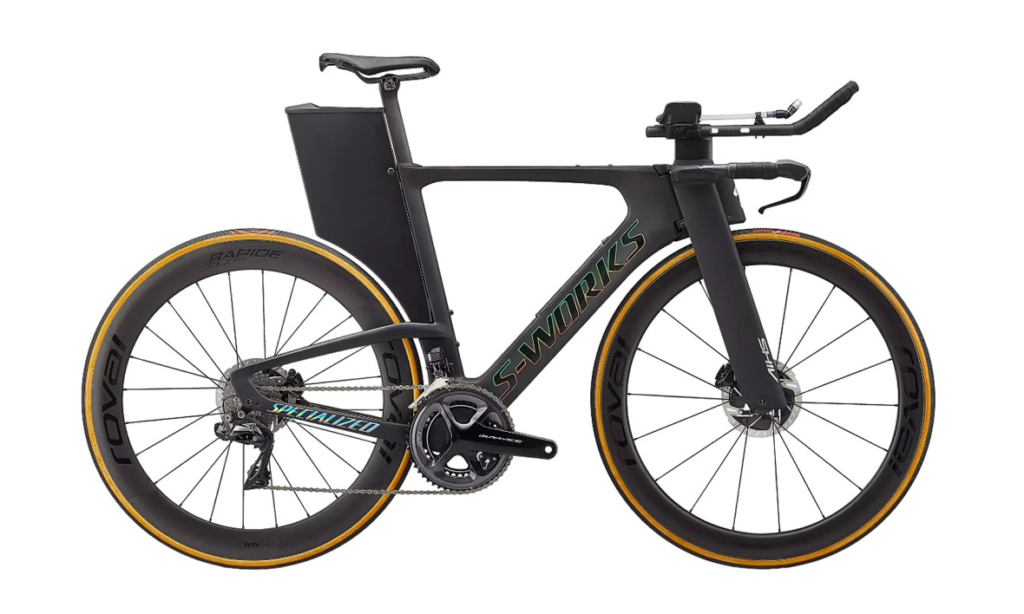
The 2024 Specialized S-Works Shiv Disc is a top-tier triathlon bike with a range of high-performance features. Based on the provided sources, here are the key features of the 2024 Specialized S-Works Shiv Disc:
- Aerodynamic frame design : Specialized refined the 2024 S-Works FACT 11r carbon frame with crosswind-optimized airfoils, integrated Fit System, and Integrated Nutrition and Hydration.
- Electronic groupset options : Opt for Shimano Dura-Ace Di2 or SRAM Red eTAP AXS 1x, 12-speed groupset with hydraulic disc brakes for precise shifting and braking duties.
- Included power meter : The S-Works Shiv Disc comes with the S-Works Power Cranks and dual-sided power measurement, providing power data for performance monitoring.
- Roval wheels : A complete build is supported by Specialized-made Roval CLX 64 Disc wheels, known for their aerodynamic efficiency and lightweight.
- Carbon aero cockpick : The S-Works Shiv Disc comes equipped with an integrated handlebar/stem aero bar made of carbon with variable stack adjust.
- Additional Shiv Disc details : The 2024 S-Works Shiv Disc offers integrated storage, flat-mount disc brakes, and aero-optimized silhouette for speed.
These features highlight Specialized’s focus on cutting-edge aerodynamics, integration, and high-performance components, making the S-Works Shiv Disc a top choice for triathletes seeking a competitive edge.
Visit Specialized.com and check out the full Shiv roster of triathlon bikes.
Quintana Roo

Quintana Roo, a pioneer in triathlon-specific bike design, is celebrated for its focus on real-world triathlete needs. The brand has a heritage of creating bikes that are not only aerodynamically efficient but also practical for both amateurs and professionals alike.
Quintana Roo’s commitment to triathlete-focused design makes it a go-to brand for athletes seeking a bike that truly meets the dynamics of triathlon. They’re also highly customizable, from color scheme to wheel choice.
Quintana Roo V-PR
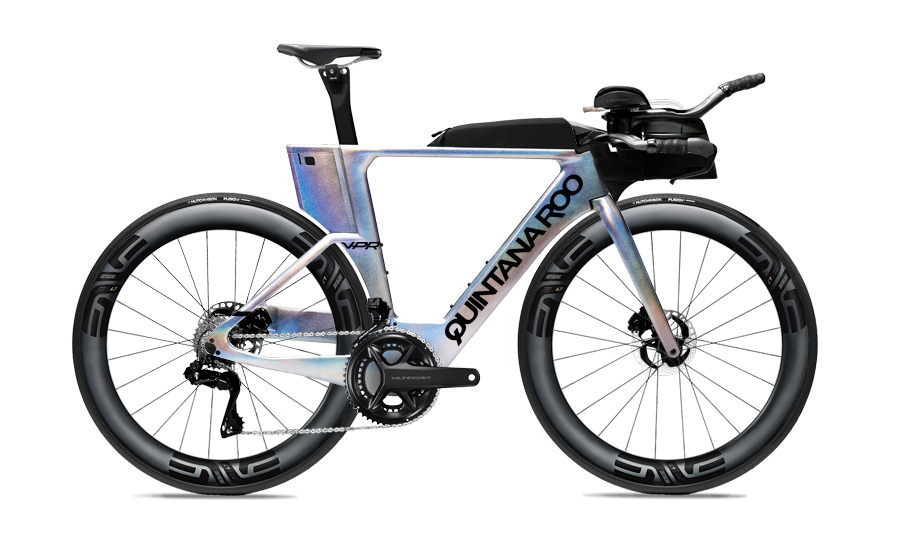
The 2024 Quintana Roo V-PR triathlon bike is equipped with a range of advanced features designed to enhance aerodynamics, weight savings, and overall performance.
- New frame design : The V-PR features a new frame design with narrower and shallower aero cross sections for improved aerodynamics across a wider range of wind angles.
- Weight savings : The V-PR is claimed to be lighter and more agile than any triathlon bike currently available, with a weight reduction of upwards of two pounds (0.9 kg) compared to many top competitors.
- Leading Edge Absent 2 (LEA.2) chainstay : The re-designed LEA.2 non-driveside chainstay is optimized for airflow, contributing to improved aerodynamics.
- SHIFT+ downtube : The reworked SHIFT+ downtube is designed to improve the redirection of air from the downtube onto the bike’s cleaner non-driveside, minimizing frontal wind resistance presented by the drivetrain.
- Fit-ready service : The V-PR heralds the introduction of Quintana Roo’s Fit-Ready™ service, offering customers the option to choose the Fit-Ready service for a customized fit.
- Ride characteristics : The V-PR is designed to handle a wide range of wind conditions, offering confident control and performance across various terrains and technical courses.
- Component specifications : The V-PR is equipped with high-quality components and drivetrains, ensuring top-tier performance and reliability.
As an upgrade from QR’s flagship PRsix model, the V-PR is a new and improved triathlon bike that you can expect to see in 2024.
Visit QuintanaRooTri.com and customize your own V-PR.
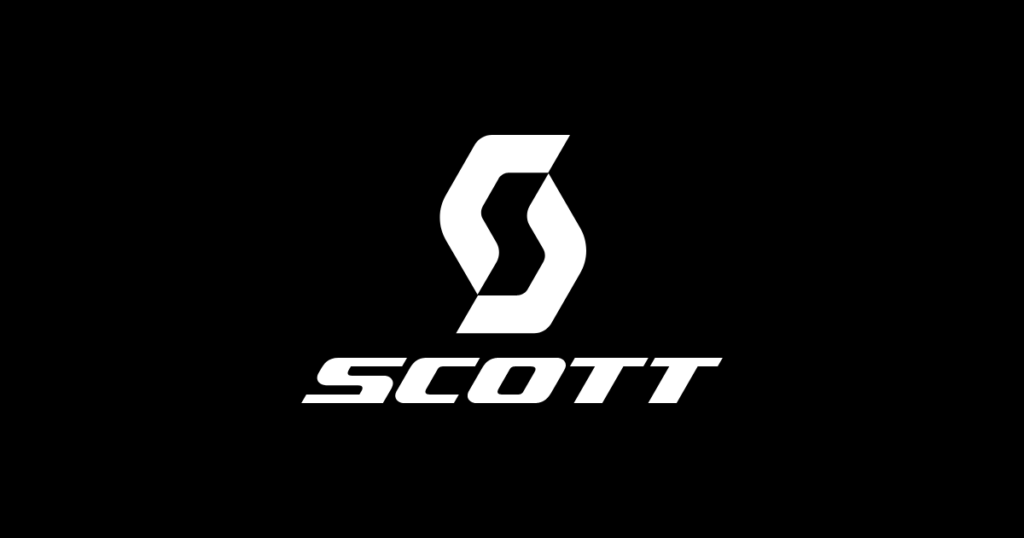
Scott is recognized in the triathlon bike space for its innovative designs and dedication to aerodynamic excellence. They also make outstanding aero road bikes for triathlon .
Scott’s triathlon bikes are known for their lightweight frames and precision engineering, catering to athletes who prioritize speed and efficiency, like Ironman powerhouse Sebastian Kienle .
Scott continually invests in research and development, resulting in bikes that offer advanced adjustability and integration, tailored to the needs of triathletes.
Scott Plasma RC

The 2024 Scott Plasma RC is a top-of-the-line triathlon bike with a range of advanced features, with slight variations dependent on the model.
- Frame and fork : Inspired by the original Plasma 6 Disc Carbon HMX frame, and Plasma 6 Disc HMX fork, the Plasma RC is designed with lightweight construction and responsive handling.
- Drivetrain : Equipped with a Shimano Ultegra Di2 24-speed drivetrain for precise and reliable shifting performance.
- ZIPP wheels : The Plasma Zipp 303SE Carbon Tubeless Disc wheels for aerodynamic efficiency and high-performance riding.
- Aerodynamic design : The Plasma RC Pro features an aerodynamically optimized frame and fork design to minimize drag and maximize speed.
- Integrated cable routing : The bike incorporates fully integrated cables for a clean and aerodynamic profile.
- Triathlon-specific features : The bike includes triathlon-specific features such as a hydration system and storage boxes for convenient access to fluids and essentials during long rides.
- Riding stability : The 2024 model is noted for increased riding stability, providing a comfortable and stable experience for the rider.
- SRAM Red eTap : Enjoy the best in electronic wireless shifting with SRAM Red eTap groupset.
The Scott Plasma RC weighs 21.25 lbs (9.64 kg). It’s a favorite for high-speed flat courses.
Visit Scott-Sports.com to see all this brand’s aero bikes.

Cadex is a Canadian brand that produces high-end cycling components, including triathlon bikes and carbon wheels . Cadex’s unique take on aero frame design is an outright rule breaker that defies what we’re used to (rail-thin aero frames.)
If you’re attuned to the professional Ironman scene, then you may have noticed that Kristian Blummenfelt (the legendary Norwegian with the fastest Ironman time ) rides a CADEX triathlon bike.
He rode to victory at the Ironman World Championship in 2022 on what was called the “Sub7 CADEX Prototype Bike.” That same concept is what’s now available today.

Available only as a frameset, the Cadex Tri is a radical design that taps into a new level of aero efficiency. Designed, engineered, and tested by the world’s best triathletes, the Cadex Tri rewrites the rules of aerodynamics and will be a bike to watch in upcoming years.
- Dialed fit : The Cadex Tri frame makes it easy to achieve a highly personalized fit, offering nearly endless incremental adjustment options with more than 1,000 fit configurations.
- Monocoque design : The frame has a radical monocoque design that unlocks a new level of aero efficiency.
- Endurance aero : The Cadex Tri frameset blatantly ignores the UCI’s infamously restrictive technical regulations, making it bike suited for long-distance triathlons.
- Travel case : The production version of the Cadex Tri frameset comes with a wheeled, hard-shell case designed by Topeak, making it ideal for travel.
- Integrated nutrition and hydration system : The frame gives triathletes an entirely new way to access nutrition, hydration, and other essentials right from their racing position without the wind ever noticing.
Learn more at Cadex-Cycling.com .
You Might Also Like
- Aero Triathlon Helmets
- Triathlon Bike Saddles
- Triathlon Bike Shoes
- Best Smart Trainers for Zwift

Tyler Tafelsky
Endurance athlete, professional off-road cyclist, and avid blogger, Tyler Tafelsky participates in long-course multisport and cycling events. Today, Tyler competes in ultra-distance cycling races at the professional level. Since starting Better Triathlete in 2014, he has been the head of content for the site's editorial team. Learn more about Tyler

Best Triathlon Bikes of 2024 to Win Races and Set New PRs
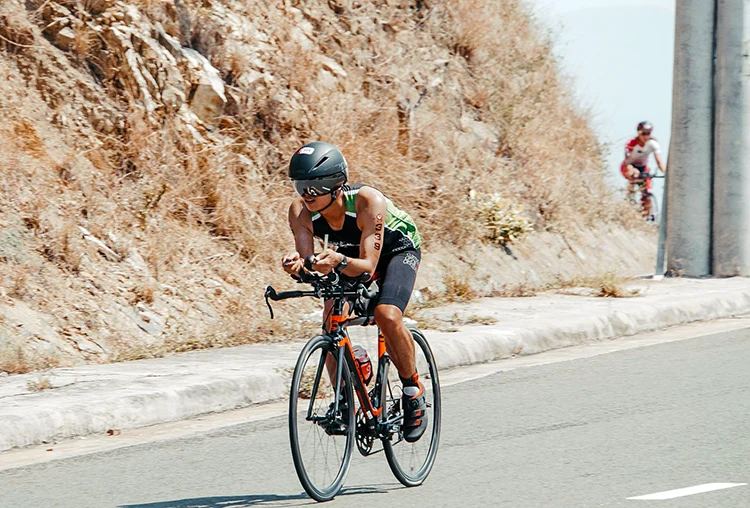
From complete newbies to experienced Ironman triathletes, we’ve put together a list of the best triathlon bikes in 2022.
Triathlon bikes look daunting at first sight, but it’s all for a reason.
These aerodynamic frames come with time-trial-specific aero bars, comfortable saddles, and ultra-fast wheels.
Whether you’re training for your first sprint triathlon or trying to qualify for Kona, we might have the perfect triathlon bike for you.
In this article, we’re going to take a closer look at the best triathlon bikes for all levels of triathlon. This includes bikes for triathletes from complete beginners to experienced ago-groupers. These triathlon bikes are suitable for any distance, from a sprint triathlon all the way up to a full Ironman.
Here, we’ve made a list of the best triathlon bikes.
What Are Triathlon Bikes?
Best triathlon bikes, canyon speedmax cf 7 disc, scott plasma 6, trek speed concept slr 6, cannondale systemsix hi-mod ultegra di2, cervelo p 105, giant defy advanced 1, cervelo s5 force axs, trek speed concept slr 7, how to choose the perfect triathlon bike, frequently asked questions.
Triathlon bikes are bicycles specifically designed for a triathlon, which is a three-sport endurance event involving swimming, biking, and running. Triathlons range in distance from Sprint to Ironman, which is said to be one of the toughest endurance tests in the world.
The biking portion of a triathlon typically lasts from 20 minutes to six hours and is ridden as an individual effort.
As opposed to criterium or road racing like we see in the Tour de France , triathlon biking is typically an individual time trial where drafting is not allowed. That means that your bike speed is determined by only you – your aerodynamics, power output, and speed.
Most triathlon bike courses are flat and straight, with some (if any) corners or hills to navigate. This is one of the reasons that triathlete bikes are heavier and more aerodynamic than road bikes.
With more aerodynamic tubes and aero bars, triathlon bikes sacrifice some cornering and climbing ability. But on most triathlon courses, the extra straight-line speed is well worth the sacrifice.
In triathlon, the run portion always follows the bike, which means that triathlon bikes need to be comfortable.
You wouldn’t want to step off the bike and go straight into a 10km run with a sore back, cramping glutes, and fiery quads.
Especially in long-distance triathlons (half Ironman and Ironman distances), it is crucial to ride a triathlete bike that is equally fast and comfortable.
That’s why you’ll see extreme-looking saddle and handlebar positions on most of these triathlon bikes. It takes some getting used to, but these triathlon bikes are actually quite comfortable, even while riding in the aero position.
Let’s jump into our list of the best triathlon bikes which includes bicycles for every level of triathlon and which are suitable for any triathlon distance.
Best Overall Triathlon Bike
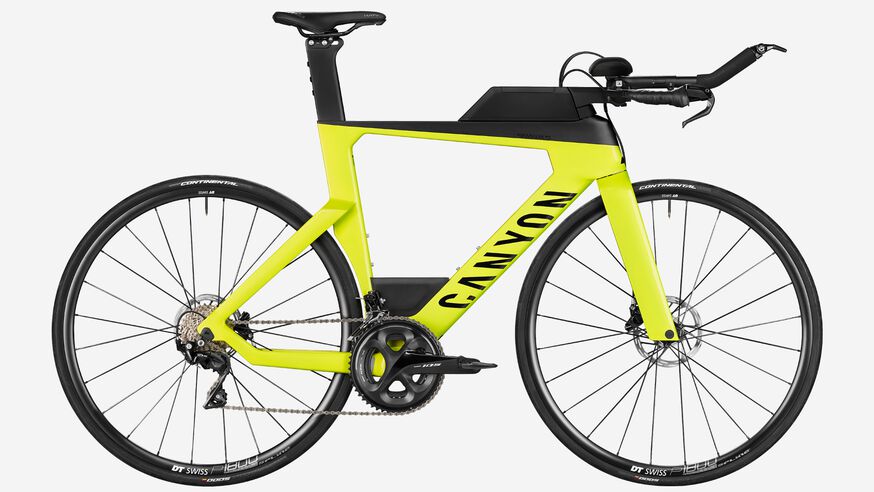
- Bento box and toolbox included
- Lightweight (9.4kg)
- Crankset includes 4iiii Precision power meter
It is almost impossible to beat the combined value and quality of the Canyon Speedmax CF 7 Disc . Many iterations of the Canyon Speedmax have made their way into the triathlon world in recent years, and the quality continues to rise.
At a fantastic price point, you can get one of the most popular triathlon bikes for beginners and professionals alike. Weighing in at 9.4kg, the Speedmax CF 7 Disc is also lightweight for a triathlon bike, making it a great choice for hilly terrain.
The hardshell Bento box on the top tube is a Canyon Speedmax staple, and it is perfect for storing gels, bars, and more. There is also the practical toolbox located just above the bottom bracket. Its design actually increases aerodynamics while also storing tools and parts like spare tubes or a multi-tool.
Canyon CFD-optimised seat stays further increase aerodynamics, sticking out like wings just above the rear wheel.
This bike comes with a Shimano 105 R7000 4iiii Precision power meter and Selle Italia Watt Superflow saddle, both bargain add-ons at this price point.
The Shimano 105 components decrease the bike’s value, but anyone but elite triathletes will truly be bothered by them. Disc brakes are included, as well as 11-speed shifting and 2X gearing, giving the Canyon Speedmax CF 7 Disc a big range of gearing for hilly routes.
Get From Canyon
Best Pro-Level Triathlon Bike
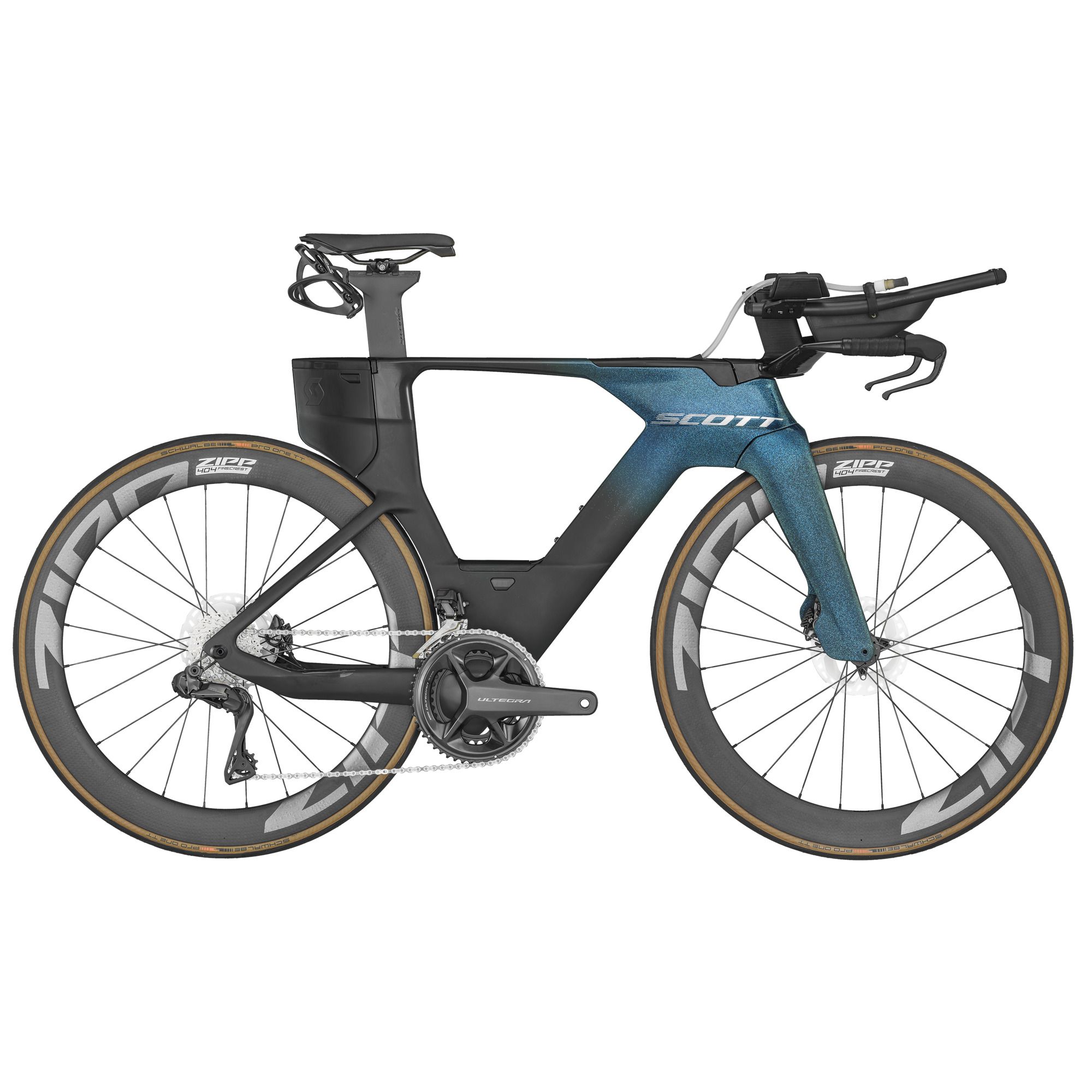
- Shimano Ultegra Di2 components
- Plasma 6 Disc Carbon, HMX frame
- Schwalbe PRO ONE TT TL tires
Scott Plasma 6 is one of the best triathlon bikes in the world for professional-level racing. Its Plasma 6 Disc Carbon, HMX frame has fully integrated cables, a hydration system, and storage boxes.
Built for triathlon-specific speed, the Scott Plasma 6 is perfect for all triathlon distances from sprints to full Ironman.
The frame includes Shimano Ultegra Di2 components and 24 speeds. This gives you tons of range to cover flat terrain, fast downhills, and steep climbs. The entire bike weighs just 9.8kg.
Up front is a Shimano Ultegra 52/36T crankset, while the rear sports an Ultegra 11-30T cassette. Designed with TRI geometry and plasma HMX seatpost, the Plasma 6 is specifically engineered for triathlon.
Schwalbe PRO ONE TT TL tires provide a healthy balance of grip and speed, while the Shimano RT-CL800 160mm disc brake rotors provide plenty of stopping power.
The biggest downside of the Scott Plasma 6 is the price tag. But if you’re a competitive triathlete with a healthy budget, the Scott Plasma 6’s performance is next to none.
Get From Scott
Best Race-Ready Triathlon Bike
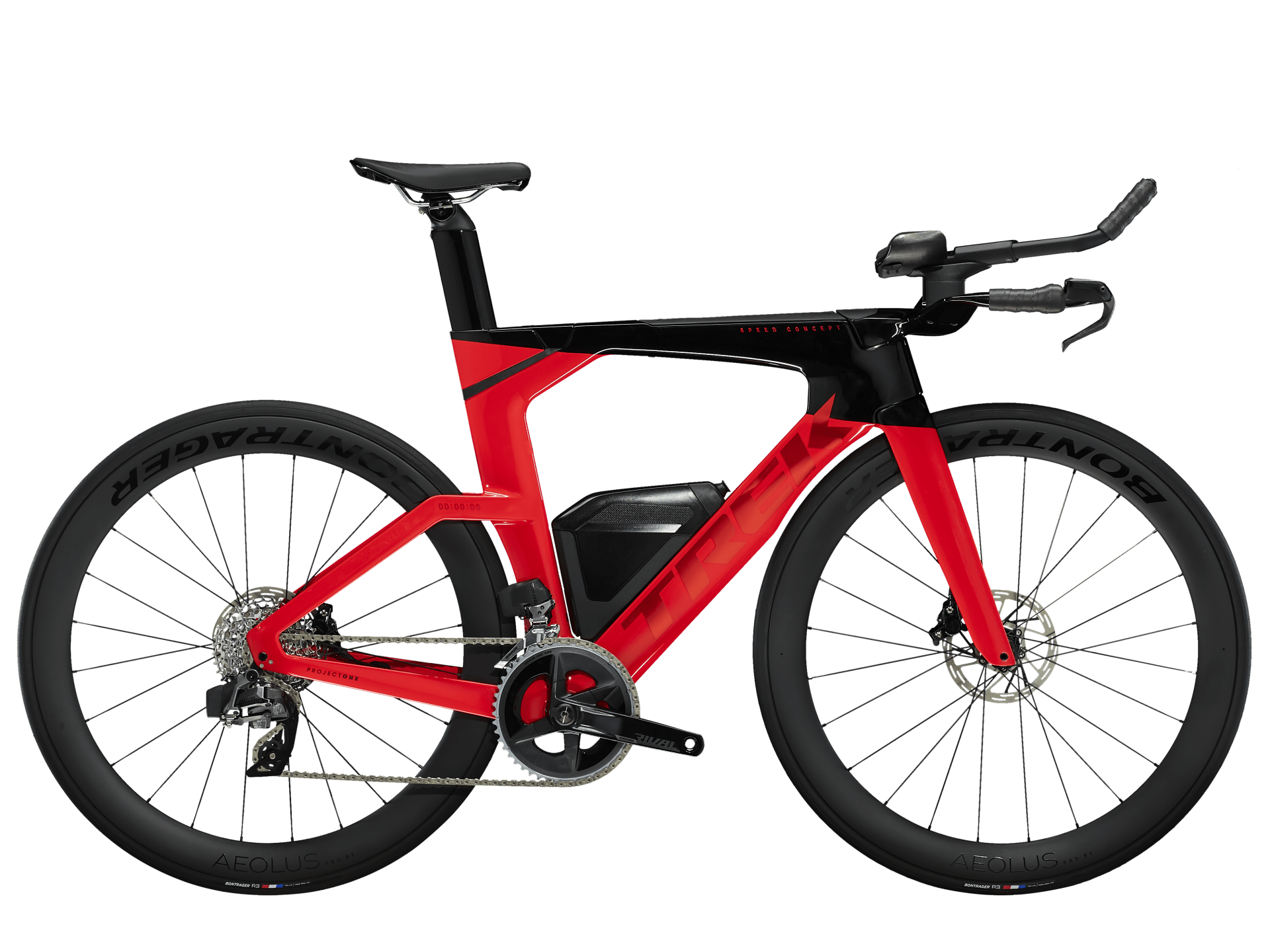
- SRAM Rival AXS drivetrain
- Tubeless-ready carbon wheels
If you’re an ambitious triathlon or time-trial racer, the Trek Speed Concept SLR 6 is just the tool you need to help you reach your goals. Its frame is made with lightweight carbon fiber, and the aerodynamic frame is built for straight-line speed.
The Speed Concept SLR 6 comes with 700c x 25mm tires, though the frame can fit tires up to 28 mm wide.
As you’d expect from a high-end triathlon bike, the Trek Speed Concept has hydraulic disc brakes and a SRAM Rival AXS electronic drivetrain.
While the carbon frame is great for racing, this triathlon bike also comes with tubeless-ready carbon wheels that are significantly lighter than aluminum wheels.
The Speed Concept’s $9,000 price will appeal to seasoned triathlon bike buyers, or those who are new to the sport but ready to bite the bullet. For beginner triathletes, the carbon fiber frame and triathlon-specific geometry are ideal.
Buy from Trekbikes.com
Best Road Bike for Triathlon

- Shimano Ultegra Di2 groupset
- Lightweight BallisTec carbon frameset
- HollowGram 64 carbon wheels
Road bikes are perfect for beginner triathletes and cyclists who race more than just triathlon. With drop bars and more relaxed geometry, road bikes are ideal for group rides and road races in addition to triathlons. Cannondale SystemSix Hi-MOD Ultegra Di2 is the classic race machine, according to Cannondale .
Its lightweight, low-drag BallisTec frameset is made of carbon fiber, and the entire bike weighs just 8.2kg, which is lighter than just about every triathlon bike.
Shimano Ultegra Di2 components are present throughout the frame, both reliable and versatile. The SystemSix Hi-MOD comes with 2×12-speed shifting and an 11-30T cassette.
Like top-end triathlon bikes, the Cannondale SystemSix comes with hydraulic disc brakes with 160/140mm rotors, and 25c tires. Specifically, this bike comes with Vittoria Rubino Pro tires which are both grippy and fast.
Overall, the SystemSix has a more relaxed geometry compared to triathlon bikes, which makes it slower in time trials but much more versatile.
You can comfortably spend five hours on the Cannondale SystemSix, whereas you’d be much more limited on a triathlon bike.
The Cannondale SystemSix Hi-MOD is ideal for beginner triathletes and cyclists who don’t want to go all-in on a triathlon-specific bike yet.
Get From Mike's Bikes
Best Value Carbon Triathlon Bike

- Shimano 105 shifting
- Mechanical disc brakes
- Carbon frame and fork
The P Series is Cervelo ’s most popular line of triathlon bikes, and for good reason. With three different bikes on offer, there is a range of quality and price points for every level of triathlete. For beginner triathletes, there is the Cervelo P 105 .
With a Cervélo All-Carbon frame, the P 105 keeps weight down whilst maximizing aerodynamics, both crucial features for any triathlon bike.
Cervelo P 105 includes Tektro Spyre mechanical disc brakes, providing good value at this price point.
There is a big range of gearing on offer thanks to the Shimano 105 52/36T crankset and 11-30T, 11-speed rear derailleur. This makes the Cervelo P 105 better suited for beginner triathletes.
There is a little bit of weight added on with the Zipp Vuka Alumina handlebars, but the built quality is still high.
Made for triathletes, there are three different nutrition and hydration pockets on the Cervelo P 105: Smartpak 400, Aerobottle 500, and a rear hydration mount.
For competitive triathletes looking for the best starter triathlon bike, the Cervelo P 105 could be the perfect fit.
Get From Jenson USA
Most Versatile Road Bike for Triathlon

- Shimano Ultgera hydraulic disc brakes
- D-Fuse seatpost and handlebars
- Tubeless 700x32c tires
The Giant Defy Advanced 1 is an endurance road bike that is perfect for all types of road riding. Though it is not the fastest in a straight line, it is much more comfortable and versatile than triathlon-specific bikes.
Overall, the Defy Advanced 1 is perfect for beginner triathletes and those who want to explore, train, and race on the same bike.
Giant’s Advanced Composite frame is specifically engineered for endurance road riding, promoting smoothness and comfort on long rides.
Related: Full Review of Giant Bikes
There is even a D-Fuse seatpost and handlebars which absorb shocks and vibrations from the road. For an affordable road bike, these kinds of features are hard to come by.
Impressively, at this price point, the Defy Advanced 1 also has seamless disc brake integration, flat mounts, and 12mm front and rear thru-axles.
The most unique features of the Defy Advanced 1, compared to the other bikes on this list, are its endurance and versatility features.
The frame has huge tire clearance at up to 35mm, and disc-brake integration which helps the Defy Advanced 1 tackle everything from triathlon pavement to gravel mountain roads. Defy Advanced 1 comes with Giant Gavia Fondo 1 tubeless 700x32c tires, and Shimano Ultegra components with 11-speed, 11-34T shifting.
Even at this price point, the Giant Defy Advanced 1 comes with hydraulic disc brakes with 160mm (front) and 140mm (rear) rotors.
Best Aero Road Bike for Triathlon
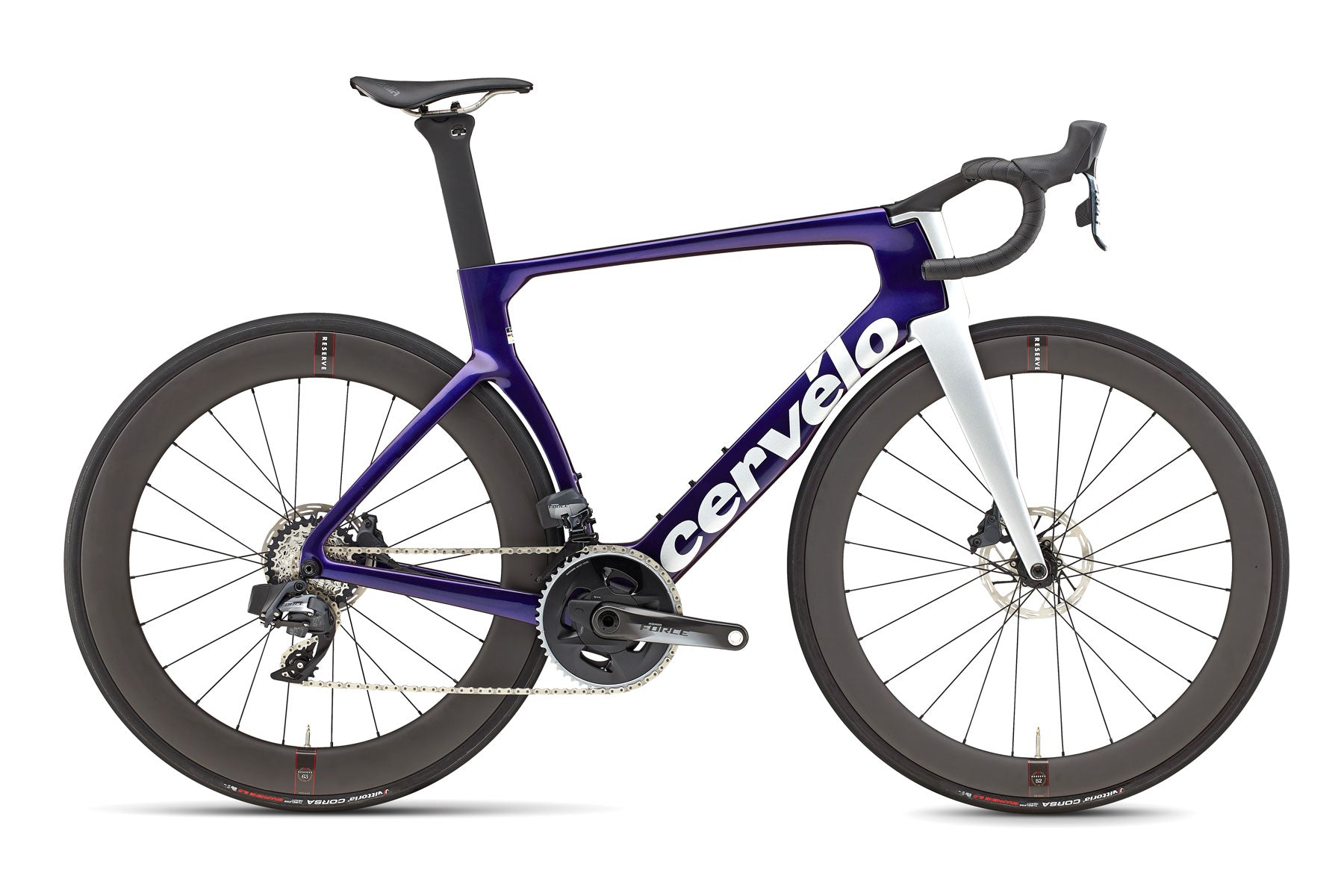
- Lightweight at ~8kg
- SRAM Force AXS components
- Lightweight Cervelo Carbon
The Cervelo C5 Force AXS is perfect for a wide variety of road riding and triathlon.
Its geometry is ideal for fast and long races that benefit from marginal aero gains. A pair of clip-on aero bars can be attached to the handlebars for beginner triathletes looking to improve their straight-line speed.
The Cervelo S5 Force AXS has a frame that uses carbon layups and road race geometry designed for quick reflexes and precise handling.
SRAM Force AXS components offer 10-33T gearing and a 48/35 crankset which is quite small by road bike standards. This is yet another reason that the Cervelo S5 is ideal for beginner triathletes and road cyclists, especially those who are nervous about climbing.
The entire bike weighs about ~8kg, which makes the Cervelo S5 Force AXS the lightest bike on this list by a significant margin.
Vittoria Corsa TLR G 700x28c tires offer a good mix of straight-line speed and versatility, which is why most pro riders ride on 25-28mm tires nowadays. This makes the Cervelo S5 one of the better road bikes for triathlon and competitive group rides.
Buy on MikesBikes.com
Best High-End Triathlon Bike
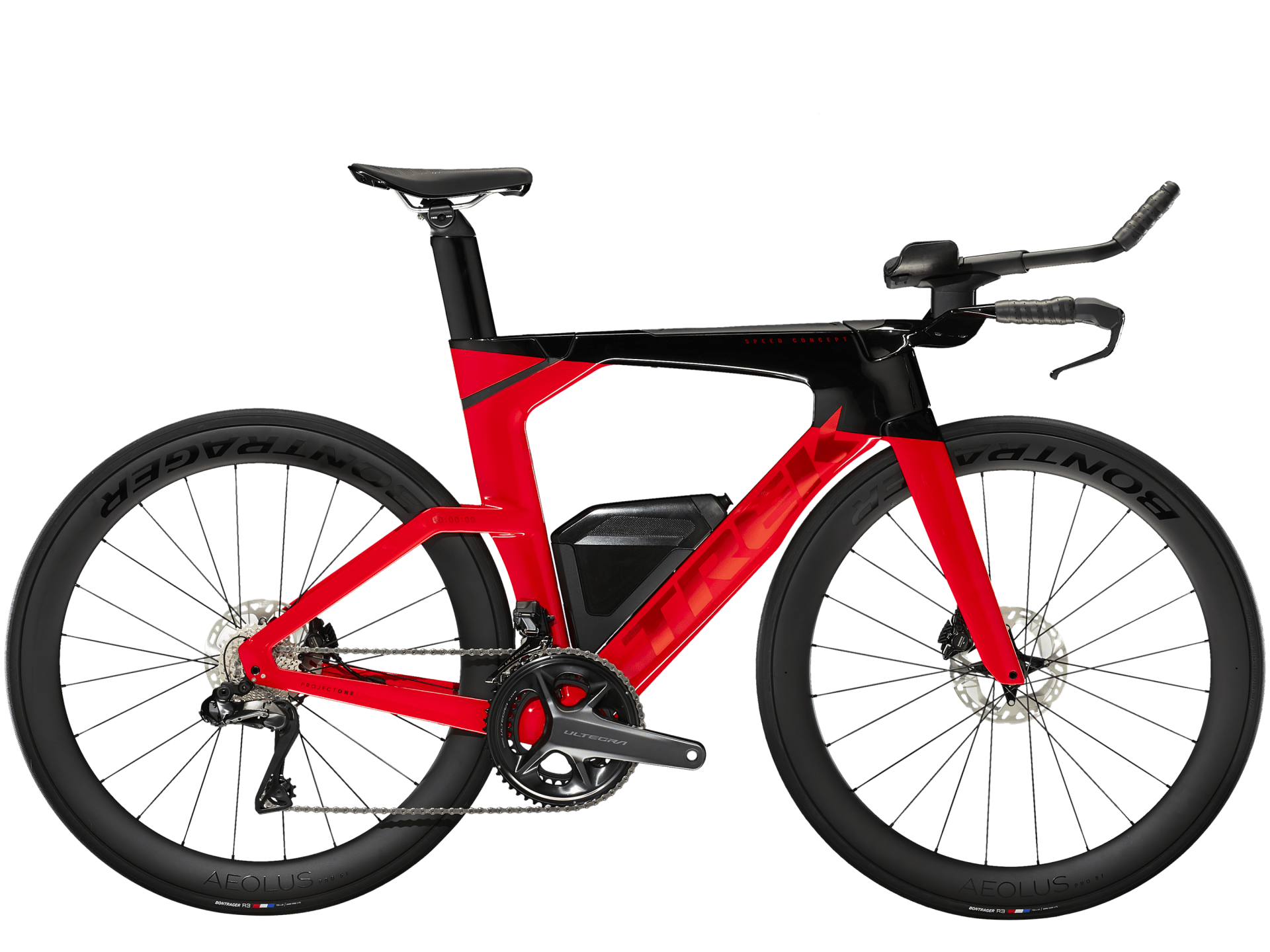
- Shimano Ultegra Di2 drivetrain
- Hydraulic disc brakes
- Smart storage solutions
The best Trek Speed Concept bike available is the SLR 7 . This bike has the same Trek carbon frame as the other models in the series but features upgraded components across the board.
This includes Shimano Ultegra Di2 components, which is electronic shifting that is among the best in the business.
The Speed Concept SLR 7 offers 12-speed shifting with an 11-30T cassette, and a 52/36T crankset. This provides a large range of gearing for triathletes, but one that might not be suitable for beginner triathletes on hilly routes.
Out front, the SLR 7 comes with integrated handlebar and stem for a neat aerodynamic cockpit. For fueling, the Speed Concept comes with smart storage that lets you carry fuel without affecting aerodynamics
Finally, powerful hydraulic disc brakes are at the front and the rear of this bike, though you probably won’t use them that much if you’re chasing speed.
Get From Trek Bikes
Unless you’re a professional bike mechanic, it can be hard to see the difference between many of the most popular triathlon bikes.
Even among the best triathlon bikes in our list, the differences may seem only marginal. Do 15 grams even make a difference?
When choosing the perfect triathlon bike, there are three things you must consider: aerodynamics, weight, and value.
Your bike’s straight-line speed is arguably its most important feature. Next to that is weight, which matters more or less depending on your training and racing terrain.
Lastly, and most importantly for some, is the value of your triathlon bike. We’ll tell you how to get the biggest splash for cash when choosing the perfect triathlon bike.
Aerodynamics
Triathlon bikes are all about straight-line speed. After your body position (which is crucial for speed), your aerodynamics are next determined by the profile of your triathlon bike’s frame and wheels.
In the triathlon world, the better your aerodynamics, the faster you go. In some cases – windy days, hilly routes, or technical courses – the most aerodynamic frame is not always the best.
But in most triathlons, you’ll want the most aerodynamic triathlon frame and wheels.
Generally, you can look at a triathlon bike and wheels and see how aerodynamic they are.
The more material the better, and the most aerodynamic frames have thick frame tubing, deep sectioned wheels, and a rear disc wheel. This is the fastest straight-line setup that is suitable for most triathlons.
But, as we’ll see in a minute, it’s also the most expensive.
There was a long-held belief in cycling that lighter was always faster.
And while this is true on an hour-long climb, it is not always true on the flat.
In fact, power and aerodynamics are far more important than the weight on flat roads, which covers the majority of triathlon racing.
During a flat, 40km time trial, it does not matter if your bike weighs 18 lbs or 28 lbs. But as soon as the road tilts up and down, weight becomes a factor.
The steeper and longer the climbs, the more important weight is to triathlon performance. Consider your training roads too: are they flat, hilly, or mountainous?
On hilly or mountainous terrain, a lightweight triathlon bike may be better than a heavier but more aerodynamic triathlon bike. In addition, the faster you go, the more aerodynamics matters than weight.
Thus, beginner triathletes are more apt to use lightweight triathlon bikes, while elite-level athletes will be faster on a heavier aerodynamic frame.
Perhaps the biggest obstacle to purchasing a triathlon bike is the price. While baseline models may cost around $2,000, higher-end triathlon bikes can cost upwards of $10,000 when you include aerodynamic race wheels.
When choosing the perfect triathlon bike, you want to get the biggest bang for your buck. The answer is a combination of your current ability and future triathlon goals.
In the sport of triathlon, the better you are, the narrower the margins are between first and last.
This is when high-end race equipment becomes even more critical when the difference between 1st and 10th could be just a few minutes. For competitive triathletes, it makes sense to invest more into getting the perfect triathlon bike.
But for beginner triathletes, the difference between competitors is more often down to fitness and experience than their equipment choices.
As a beginner or intermediate-level triathlete, you will benefit more from structured training and minor equipment purchases like a new helmet, running shoes, or carbon race wheels.
A special note for long-distance triathletes such as Ironman competitors: due to the extra long training hours, it is best to invest in a triathlon bike right away.
The more time you spend in the saddle, the more important it is that you have an excellent frame, a comfortable saddle, and aero bars that you can spend hours in.
Just as Ironman athletes invest more time into their training, it makes sense to invest more into your triathlon bike to maximize comfort and performance.
What kind of bike is best for a triathlon?
Triathlon bikes are the best bikes for triathlons. The only exception would be if you are a complete beginner and have never ridden a triathlon bike before. Riding in the aero bars is an aggressive position that can take some getting used to, so it is better for beginner triathletes to start with a road bike for triathlons.
Most triathlon courses are straight and flat, and there is nothing faster on that terrain than a triathlon bike. If your triathlon course is uniquely hilly or technical, then it may be better to race on a road bike; but this is a rare case.
Is a triathlon bike worth it?
A triathlon bike is worth the cost for competitive triathletes. There is nothing faster in a straight line than a triathlon bike. A road bike with clip-on aero bars is not even close. In order to achieve your fastest times and compete near the top of your category, you need a triathlon bike for triathlons.
If you’re worried about the investment, remember then you can resell your triathlon bike if it doesn’t work out. As long as you keep your triathlon bike in good working condition, you will be able to resell it for a good chunk of the original price.
If in doubt, start with a road bike for your first few triathlons. Then add clip-on aero bars when you’re ready to be more competitive. Once you want to compete for the win, go with a full-on triathlon bike.
Is a road bike OK for a triathlon?
Yes, most triathletes start on road bikes for their first few triathlons. This is because road bikes are more versatile than triathlon bikes, and you can use road bikes for training, racing, climbing, group riding, and more.
When you’re ready to upgrade your racing set-up, you can even start with attaching a pair of clip-on aero bars to your road bike. This allows you to go faster in a straight line without having to invest the time and money into setting up a whole new triathlon bike. But for serious triathletes, there is nothing faster and more comfortable than a triathlon bike.
What’s the difference between a triathlon bike and a road bike?
The main differences between a triathlon bike and a road bike are frame shape and aerodynamics, aero bars, and wheels.
Triathlon bikes have thicker and more aerodynamic tubing than road bikes which are heavier but faster in a straight line. Whereas road bikes have drop bars – handlebars with three available hand positions – triathlon bikes have aero bars which are time-trial-specific handlebars with long extensions for your forearms.
Lastly, triathlon bikes have deep-sectioned wheels and sometimes rear disc wheels which are heavier but faster than shallower road bike wheels which are designed for climbing and all-around riding.
Why do triathletes use TT bikes?
Triathletes use TT bikes, or time trial bikes because triathlons typically involve an individual effort rather than group riding. The only exception is Olympic-style triathlons which allow pack riding; but in these triathlons, racers use road bikes instead of TT bikes.
For individual effort, TT bikes are faster than road bikes. This is because TT bikes are more aerodynamic than road bikes. And during an individual effort, you don’t need to worry about pack riding skills such as braking or positioning.
Is a triathlon bike faster than a road bike?
Yes, a triathlon bike is faster than a road bike on a straight and flat road. Triathlon bikes are much more aerodynamic than road bikes thanks to their unique tube shapes and time-trial-specific handlebars. Though triathlon bikes weigh more than road bikes, there is no significant penalty for increased weight on flat roads.
Road bikes are faster than triathlon bikes when it comes to climbing and descending since road bikes are lighter than triathlon bikes, and they also handle much better in corners.

Why are tri bikes heavier than road bikes?
Triathlon bikes are typically heavier than road bikes because they use more materials. Whereas triathlon bikes are designed for straight-line speed, road bikes are designed for a mix of speed, cornering ability, and climbing. Thus, road bike frames have thinner tubes and less overall material to keep them lightweight. Road bikes typically have lighter and shallower wheels which are lightweight as well as aerodynamic.
On the other hand, triathlon bikes have thicker aerodynamic tubes which use significantly more material than road bikes. Triathlon bikes also have deep-sectioned wheels, and sometimes rear disc wheels, which are super aerodynamic, but also significantly heavier than shallower wheels used on road bikes.
Related Topics:
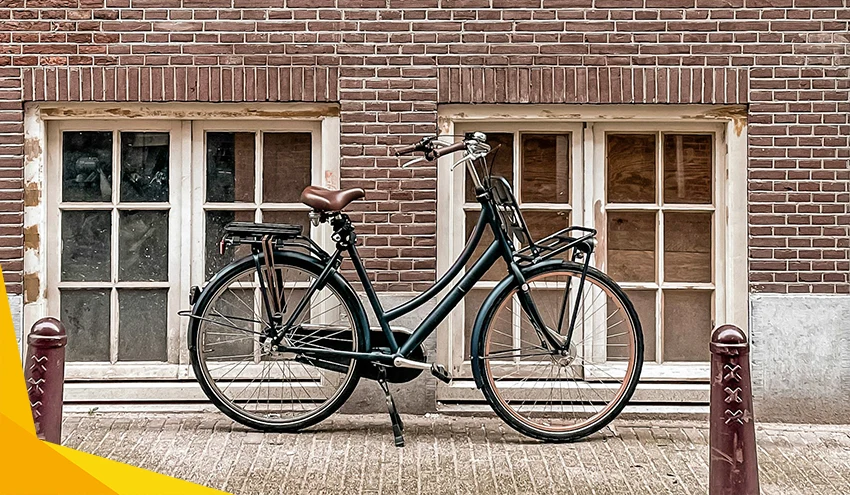
Top Dutch Bikes of 2024: A Comprehensive Buying Guide to Help You Choose
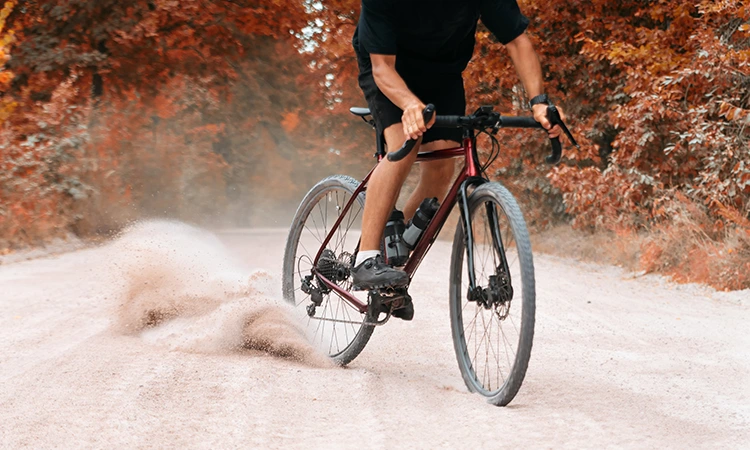
Best Budget Gravel Bikes of 2024: Your Gateway to Affordable Gravel Adventures
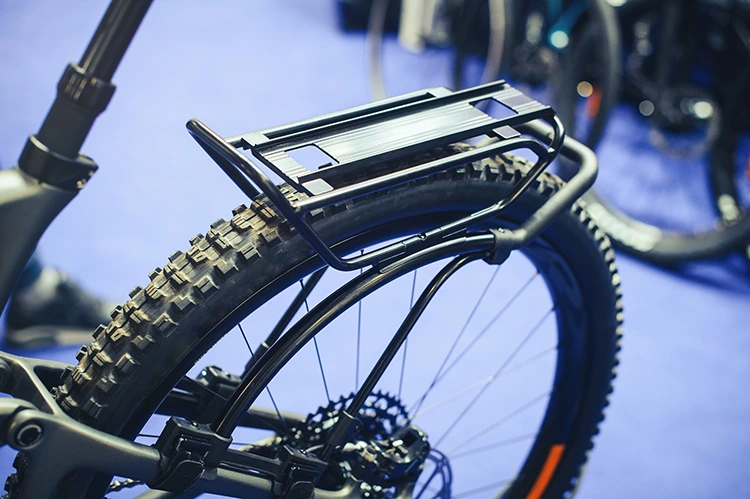
Best Rear Racks for Bikes: Carry Panniers for Commuting or Traveling
Leave a reply cancel reply.
Your email address will not be published. Required fields are marked *
Complete Tri
5 Great Entry-Level Road Bikes
Von Collins is an accomplished triathlete and endurance cyclist, and the author of four fitness and training books: Smarter Running, Your First Triathlon Guide, Fit Foods, and 30 Rut-Busting Workouts . He has been cited as a triathlon, cycling, and fitness expert by Healthline, CNET, Forbes, Eat This, Not That and other major outlets.
We love seeing people get into cycling – whether it is purely recreational, or to build up to longer rides, or to ultimately compete in a bike race or triathlon. Our attitude is that the more cyclists there are — regardless of your budget — the more demand for trails, dedicated bike lanes, and bike amenities which we all benefit from. It creates a productive cycle – not to mention, it can make the population healthier which is good for all of us.
Buying an entry-level bike, though, can be mind-boggling. Not only do you have dozens of brands to choose from, but each model seems to have an unlimited combination of components. No doubt, when you start looking for a bike, you will either fall in love with the first one you see, or be numbed by all the choices and decisions you can make.
What’s more, for many manufacturers nowadays, “entry level” can mean anything up to about $2,500. That is a bit more than the typical newbie might consider to be entry level, but if you plan to ride a lot, you don’t want t skimp either. Luckily, there are still some pretty good options in the $1,000 to $2,000 range, too.
A Note About Road Bike Buying
Before we get into the entry-level road bikes that we really like, we wanted to make a couple comments on the process of buying a bike. We might be a triathlon blog, but at any tri club or on race morning of a triathlon, you will see lots and lots of road bikes. They are part of our sport so we know a thing or two about buying them.
First, there is a reason that Independent Bike Dealers have been a mainstay of the cycling community for so many years. If you aren’t quite sure what you are looking for, and even if you are, they can be incredibly helpful in finding a bike that works for you. Sure, we can make a buck or two if you buy through one of our partners (linked below), but in the bigger picture we want people to ride the right bike for them. If that means a trip to your local bike shop, we are all for it. Our website has never been intended to take business away from local bike shops. Just the opposite — we want to get more people into the sport so that independent bike dealers have a larger universe of customers!
Fred Clements of the National Bike Dealers Association says it best, “a good bike mechanic is an artisan, not a laborer or engineer.” Find a good mechanic at a local shop, and he or she will get you on the right bike for you.
Second, the decision that you really need to make is threefold when it comes to buying a road bike. Which bike frame/make do you want (and this should largely be based on fit), which “moving component” set to do want, and then which bells and whistles are you looking for. This is why you might see one bike model that comes in 20 different variations – there could be an almost endless number of component combinations you can outfit a single bike with.
Third, we list some bikes here that eclipse the $2,000 mark – which might seem like it is way above entry level. We do this for a couple reasons – first, for the right cyclist, $2,000 is a bargain for a good road bike. If you are someone who ultimately gets hooked and puts 5,000 miles a year on your bike, you will want something with some quality and features. Finally, bikes are often discounted by various retailers – so a $2,000 bike might be found for way less if you can catch it at the right time.
5 Great Entry Level Road Bikes
Let’s just get to the point. Here are 5 “entry-level’ road bikes that we really like right now and are easier on the budget (if you were looking for triathlon bikes, don’t worry, we researched that as well, here ).
(Cutting to the Chase, our Favorite is…..)
If you want to spare the reading, we will help you get to the point. We assessed these bikes, rode them, inspected them. There are two that stand out. The Felt VR40 is just such a great value for what you get, riding the smooth aluminum frame is a dream. And you gotta love the Trek Emonda , especially when it gets the hand-me-down features from its more decked-out siblings.
With that said, let’s outline the top 5.
Cannondale Topstone Road Bike
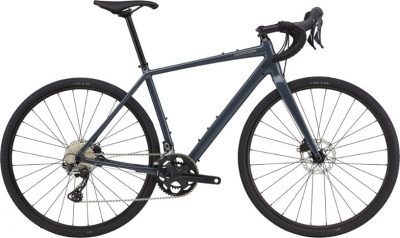
The Topstone is actually a pretty massive lineup of bikes — positioned just under the Synapse lineup which has become a little too pricey to be “entry level” in our book. Some Topstone models can be found at the entry-level price point, and depending on componentry will typically be found for $1,000 to $2,000. That is a good price for a very high-quality bike. Other models can cost double that price or more. We are obviously focused on the entry-level price point for this article, so are talking about the alloy frame. The one that we recommend is the Topstone 1, a great alloy bike that gives you an excellent ride on both fast pavement and hardpack gravel (it is actually also on our list of best gravel bikes for this reason), and is even a good commuter bike — an excellent all-around model. If you want to spend just a little more, there is the Synapse 105, coming with (as you could guess) Shimano 105 componentry. There are some great Synapse models well above the $2,000 price point, but we can’t in good faith say they are entry-level bikes. The Synapse 105 sometimes fits the entry-level bill, though, depending on where you find it.
One of the first things I noticed when testing out a Topstone was that its gearing is a little lower and slower, which is great if you plan to ride places with lots of twists, turns, and climbs. But if you really want to crank fast on a long straightaway, you might find the top-end of your speed range a little wanting — but not by much. The big and small chainrings have 46 and 30 teeth respectively, compared to 50/34 for many on this list or 53/39 which is a classic, common combination for old-school road bikes.
I liked that all of the Topstone models now come with disc brakes, regardless of if you buy the high-end or the low-end model. They all have a carbon fork as well, which corners better than alloy and is a little more forgiving overall.
Because of the number of variations on the Topstone, it isn’t hard to modify or upgrade certain components while staying within the Cannondale brand and with a Cannondale dealer. The bike shop where I did my Cannondale exam had many of the parts in stock, behind the counter, from previous mods and builds.
What we like about the Topstone:
- Cannondale sleek alloy frameset. With the combination of frame and components, this is a bike that you couldn’t have gotten for the price 4 years ago. Note that the Synapse also comes in an aluminum frame if you can find it. We think both are worth considering.
- Micro-suspension built-in to rear stays. Allows for some shock absorption through the frame.
- We love that Carbondale is putting disc brakes on virtually everything they build, regardless of price.
- Carbon fork will give you better cornering
- Fabric scoop radius saddle, a comfortable saddle for riders of all skill levels. Scoops are some of our favorite road bike saddles .
- Slightly more upright frame geometry, which is the better choice for people who are not time-trialing. Overall, this is a balanced frame that allows you to do fast road rides without being in an uncomfortable drop position — something that might not be second nature for beginners.
- Generally speaking, Cannondale seems to try harder than some of the other brands when it comes to creating an approachable and affordable first bike for new cyclists. The Topstone lineup is a perfect example of that.
- Cannondale is one of REI’s carried brands, making brand-customized service accessible if you live near a major metro
Find the Topstone and the Synapse here.
Orbea Avant H40 and 40-series Road Bike

The Orbea road bike that we like this year is the Avant. Truth be told, we are fans of both the Orca and the Avant lineups (both have the “M” and “H” model numbers) from all of our training, and the Orca’s Ordu lineup – built for tris – offers an M30 that we like as well. That made us take a serious look at the H-series in the Avant line.
I found that the ride experience was superb when on those longer rides. If your idea of a Saturday morning ride is 3 to 4 hours instead of 1 to 2 hours, you might want to take a serious look at the Avant. Based on taking a spin on each, of the bikes on this list, the Orbea was my top choice for people who intend to mainly use the road bike for longer 50 – 100 mile rides. A few slight degrees of frame geo can make a huge difference in long-ride comfort.
With that said, fit is everything and be sure the bike geometry works with your particular build.
Of the bikes we looked at for this piece, the Avant was the one that edged up above $2,000 (unless you count the others with disc brakes added)…. But it gets you into the Orbea lineup which is a really high quality road bike and one that you can definitely ride as your abilities and interest increases over time. And did we mention it is a great looking bike?
What we like about the Orbea H40:
- Our experience was that this was a nice riding bike for the money, and worthy of a variety of trails and road surfaces.
- We liked the slightly more relaxed body angle, which is great for longer endurance rides.
- Quality Aluminum frameset. Saving money on (really good) aluminum allows Orbea to put more money into components.
- Shimano Tiagra drivetrain, with 105 available as an option
- Ability to mount up to 35mm tires (great if you are interested in some gravel riding. At 35mm, you can get some quality all-surface bike tire options.
- Expansive gearing — great on hilly terrain or on flats
- Internal cable routing throughout the carbon frame – this is something normally found on higher-end bikes.
- Responsive and fast feel overall – an excellent bike with some giddyup and great for climbing (assuming your legs can provide the horsepower)
- Like the Topstone, you will get disc brakes and a carbon fork
Find the Avant here.
Felt VR 40 Road Bike
On the paved trail, I found that the VR40 does not disappoint, and gives you the upgraded, zippy ride experience that we would expect from a Felt. In the same lineup, the VR 40’s less-expensive sibling, the VR 60, is a great option if you are under a tight budget and it actually has the same frame as the VR40.
Why then do we recommend the VR 40 for $450 more? One word: Tiagra. The VR 40’s Shimano Tiagra components are a nice upgrade over the VR 60’s Claris components. We have nothing against the Claris line, but the Tiagra is a decided step above if you are seriously getting in to road cycling. We view the Claris as a better component set for commuter bikes.
The Felt’s aluminum frame is relatively light and rides smooth. You might be tempted to insist on carbon fiber, but going for a carbon frame in the VR lineup means that you are going to shell out about $1,500 more. Yep, almost two thousand more to get the carbon frame.. By going with the aluminum frame, the VR40 will let you get much better components for the money. You could save yourself about 2 pounds, or you could get shifters that are going to be smooth, and gearing that will let you get-up-and-go.
My test-drive was impressive. We found that the bike felt lighter than its real weight, accelerated very well, and we energetic when going up hills. When it comes to bang for the buck, I’m not sure you can beat it. As I examined all the components in detail, I concluded that this was a bike you could ride as-is for a long time without doing any upgrades.
What We Like about the VR 40:
- Excellent aluminum frame that is capable of great road riding, but also gravel-worthy if needed. Frame is light as far as aluminums go.
- Dual-piston disc brakes give you plenty of clearance if you want to run slightly wider tires. Max clearance on tires goes up to 34mm, and while that is not enough to run true gravel tires, you can have a pretty all-purpose tire at that width (it comes stock with 30s)
- We love the Devox bars, comfortable in both bullhorn and drop position. These are the same bars you would get on the much more expensive Felt models.
- Given the smooth ride, we have no qualms about this aluminum frame and think this bike is a great value for the money.
Overall, an outstanding bike for the money, and a bike worthy of customizing to suit your riding style. If you need to save a few bucks, you can consider the VR 60 and then gradually upgrade your components, but we think it is best to just start with the VR 40.
Find the VR40 here.
Salsa Journeyer

When it comes down to it, the difference between a road bike and a gravel bike is pretty minor. They have the same design, similar posture, and nowadays many of the exact same components. Go to any gravel bike race, and you will see lots of bikes that could be very good road bikes with a slight tire adjustment.
I gave the Salsa Journeyer a nice ride on both pavement and gravel roads, and really liked what I experienced. Using 30mm tires — slightly thicker than your typical road tire or slightly thinner than your normal gravel tire — it had plenty of acceleration at the start and was responsive on the winding road. The Journeyer was LOTS of fun to ride on the open straightaways where you are trying to rip out a fast segment on Strava .
Some riders might balk at the aluminum frame, but at this price point you are not going to get high-grade carbon anyway, so going with aluminum is just fine. Granted, the 22 to 23 pound weight range might be a couple pounds higher than you will find in some other entry-level road bikes, but those road bikes won’t give you as capable an option of using the exact same bike on gravel when needed. I guess if you are going to use this bike for road races, you might opt for something a little lighter.
With that said, we love the Journeyerfor the money. If there is a chance you will be riding your road bike on some gravel (something I recommend) then this immediately becomes a top option.
I haven’t talked about the SRAM Apex 1 groupset – a great groupset for the money. That SRAM can crank out components like this at a reasonable price is really a value for riders. You are going to have a crank, shifters, derailleur, and brake levers all from this strong groupset. By the way, while I recommend the Apex for the money, you can save a few more bucks by choosing the Sora groupset.
Our test rides confirm that this aluminum frame will ride well (and once again. For the same price, you are going to get high-end aluminum or quite low-end carbon. We loved the acceleration from a standing stop and on hills, and enjoying the handling when winding downhill and around curves. When paired with the right road tires, you are going to get plenty of speed from the Journeyer.
What we like about the Salsa Journeyer Road Bike:
- Strong frame that fits lots of builds
- Ideal for those who might find themselves on gravel at times
- Ability to accommodate tires up to 38mm, a good, average width for a variety of conditions
- SRAM Apex 1 groupset – an outstanding value
All-in-all, we are big fans of the Journeyer.
Find the Salsa Journeyer Here
Trek Emonda Road Bike
It is hard to have a “Best of” list without including something from Trek. After all, Trek was one of the companies that really brought entry-level road bikes to the masses as the sport grew in the early 2000s. While Trek is known for its broad array of bikes – mountain, triathlon, comfort – they have a solid road bike lineup, and the Emonda is the dominant model right now.
You might think we are crazy for recommending the Emonda, because it is a very deep product line and some decked-out Emondas can hover around the $10,000 mark. The Emonda lineup is very extensive, though, and at last count Trek was offering 13 different versions of the Emonda! But the entry-level Emonda choice is the one that we would recommend from Trek, at this price point.
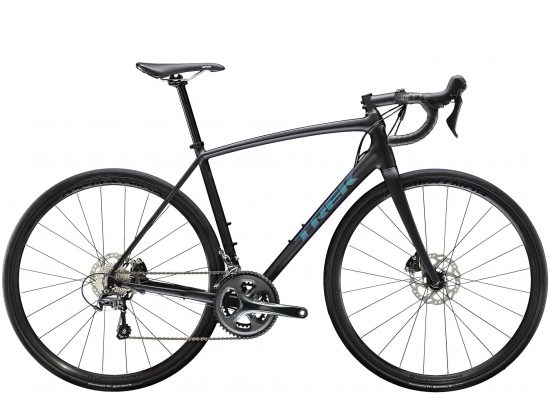
The Emonda ALR5 is the bike we are focusing on here. It is a comparable price point to the Felt FR, just above, and like the Felt is an aluminum frame. The quality of the frame, based on our test rides, is excellent, and the 105 componentry throughout the drivetrain puts it on par with many of the bikes listed in this article. Behind Trek, you get thousands of riders who swear by the brand, and a broad network of bike shops who will be familiar with working on the bike.
A road test showed me a nice bike that just might be a better fit for taller riders with a longer torso. The aluminum frame was not clunky and about as lightweight as I had hoped, and of course using aluminum allows for the 105 components which I just love. Easy shifting and smoother climbs and acceleration.
If you want to keep your spend below $2,000, the Trek Domane is a really good bike, but just a touch heavier than the Emonda. I also preferred the Emonda’s stock wheels better, something that can be expensive to upgrade later on.
What we like about the Trek Emonda:
- Excellent balance and handling overall. Provided you get the right fit, a very responsive aluminum bike.
- Uses the same frame geometry as some of Trek’s higher-end, faster bikes…. So a great choice for those who want speed.
- Disc brakes, which we always prefer if we can get them
- Allows you to get into the Shimano 105 componentry while staying safely under $2,000 overall
Find the Trek Emonda ALR here.
What to Look for in a Road Bike
As you could probably tell from our reviews, there are a few things to think about when buying a road bike. It really comes down to personal preference, but you will be faced with decisions on several key things. The big ones, in our opinion include:
- Carbon vs. Alloy (Aluminum) — see the next section
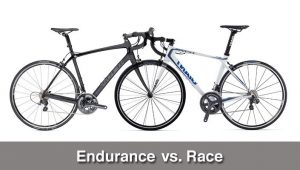
Most products at the entry-level price point include components from Shimano, but you may also see Bontrager or Campagnolo (Campy) parts. We did an entire piece on their various levels here . For the Shimano examples above, Ultegra is considered a step above 105. Two notes: you can always change components later, and when in doubt, spend your money on the moving components (e.g. chainring instead of brakes). Things like a bike saddle or new pedals are easy to swap out and upgrade at any time, and we find that the “contact points” on the bike — things you will physically be in contact with during your ride like the saddle and bars — are the ideal bike upgrades later because they tend to involve so much personal preference.
- Brakes. Speaking of components, you will see entry-level road bikes with both disc and caliper brakes. Disc brakes are considered better, and the trend is toward more bikes moving to disc brakes. 5 years ago, disc brakes were something only found on higher-end bikes. Today, lots of entry-level bikes have them. They offer more clearance from the wheel, work better when wet or on hills, stop faster, and don’t heat up or wear on your rim. With that said, we rode caliper brakes for years and they did their job just fine…. and they are easier for the DIYer to adjust, fine-tune, fix and maintain. Just know that a bike with disc brakes will always cost more than the same bike with caliper brakes. 5 years ago, we would estimate that 75% of entry-level road bikes had caliper brakes as standard equipment. Today, we would say that has nearly flipped, 75% have disc.
- Frame Angle. In addition to frame material, consider the frame angle. Do you want something aggressive, that puts you in a low, aero position? Or something a bit more relaxed (ie. “sportive” or “endurance”) that allows you to be more upright and comfortable?
- Brand. We are not brand snobs here, but it can be good to buy a brand that has a good track record and warranty. The last thing you want is a crack in your carbon frame, and nobody who you can call. This is probably most true when it comes to buying at major online retailers who carry imported, startup brands. The tried-and-true brands (like those listed above) will take good care of you.
- Fit . Don’t ever skimp on fit for your bike. Most people will pretty neatly fall into a bike size, so it is relatively easy. Others are constantly on the borderline between one size and another, making it more difficult. For years, I have been a 58. When I walk into a bike shop, the owner typically looks at me for 3 seconds and says “Your probably a 58, right?” That makes it easy. But the silliest thing I could ever do is buy a 56 just because it was on sale or I liked the model. Buy the size that fits!
- Add-Ons. You likely will buy a bike that is pretty basic — it will be a brand-new, high-functioning bike but the add-ons will be yours to install. Whether you ask a bike shop to do it, or install add-ons yourself, think about things like your hydration setup, a bike computer , and other add-ons that that suit your riding style.
A Word About Carbon vs. Aluminum Bikes
Our lineup of 5 great bikes includes 3 carbon frames and 2 aluminum frames. Aluminum (alloy) frames have enjoyed a bit of a resurgence lately, as makers like Trek and Felt have really cranked down the overall weight and built beautiful, nearly seamless frames. When you are looking at the $2,000 price point, keep in mind that you might be getting a top-of-the-line aluminum frame or a relatively entry-level carbon frame at that price.
Still, carbon is carbon, which we love, and the bikes listed above are made by manufacturers who would not skimp on the build. They just can’t put the same time and material into a $2,000 bike that they would a $5,000 bike. The Salsa Journeyman is a great example of what you can do with aluminum that you would never be able to do at the same price with carbon.
That is our long way of saying don’t shy away from aluminum, especially if the bike might be riding on some less-than-perfect trails. Carbon is awesome, but there are some great bikes being welded in aluminum too. As Cycling Weekly says , there is really no right or wrong frame material, it is all dependent on what kind of riding you plan to do and what you need from your bike.
Should You Buy a Used Road Bike?
Maybe a brand new road bike isn’t in your budget, or isn’t really your speed. Should you buy a used bike instead? Don’t rule it out.
You can, of course, find some pretty solid road bike deals on Craigslist, Ebay, and Facebook marketplace. Each has its own considerations.
Craigslist and Facebook Marketplace both provide buyers with the ability to find bikes in their own backyard. This can be extremely useful if you are someone who wants to buy a bike, say, 5 miles away from you. That allows you to test drive the bike, see it before you buy, and talk to the owner first-hand to get a sense of if they are someone whose bike you want to buy. The downside? Selection will probably be quite limited. Expect to have lots of “perfect bike, wrong size” situations, and expect also to have a few folks thinking their bike is worth 2x what it really is worth.

Another thing to know about bikes is that manufacturers gradually improve the quality of the parts and components at each price point. So the drivetrain that might have been an upgrade 5 years ago might now come as standard on the entry-level model. Keep that in mind as you compare your options.
Ebay will definitely give you more selection, but the obvious issue is that you cannot physically see the bike before you buy it. This poses a problem in two regards: 1) Issues like hairline fractures in the carbon fiber would be very hard to spot on a photo, and 2) returning the bike if something is off is not going to be a simple task.
One source we really like is the Pro’s Closet , a bunch of cycling enthusiasts who carry quality, second-hand bikes. The Pro’s Closet mechanics inspect all the bikes they get to ensure you are not going to get something with obvious issues. You just need to check often, as their bikes tend to pass through quickly. If you find one you have been looking for, it can be a good way to get a decent bike at a discounted price. We highly recommend them for used bikes.
Either way, if you consider the Craigslist or Ebay routes, insist on a bike that is the right sizing for you, and make sure that the frame and wheels are in very good condition. Everything else can be fixed or replaced.
How Much Does a Road Bike Cost?
When is comes to the budget for your purchase, a road bike is not cheap, and they have gotten more expensive in the past 24 months as supplies and components have increased in price. We actually did another piece addressing one of the most common questions we get — “ Why do bikes cost so much ?!”
If you find a brand new road bike for less than about $800, there is a good chance it will be disappointing in terms of performance. It is just hard to build a road bike for that price and still have any profit margin left over — and you want the bike maker to make enough money to stay in business.
We think that for a price of about $900 to $2,000, you can find a good road bike that will not only perform will now, but one that you won’t grow out of quickly. That is an important part of all of this — you want the bike to be one that you keep for awhile. You might have a few more entry-level components on the bike, like drivetrain parts, but they can always be upgraded.
From about $2,100 to $3,500 or so, you are going to get an upgraded frame material, and components that are solidly in the quality category. At this price, you should expect that pretty much every part of the bike is middle or getting toward to top of the line, in terms of component options.
Above $3,500, expect a high-quality bike with components that are light, perform very well, and a bike that rides like a dream. At this price, you should not be tempted to upgrade any components any time soon.
You can spend much more on a new bike, but most the people reading this will be in that $800 to $3,500 range.
Our Conclusion and Recommendation for an Entry-Level Road Bike
So you want us to choose one of these bikes? Well, we had to winnow down a list of about 30 good options to get to this list of 5, so consider all of these our choices! Seriously, we would be happy to see you riding on any of them, that is why they made the cut.
If we could only choose one, it would probably be the Trek Emonda . With that said, it’s price point is at the high-end of what we consider to be entry-level, so understand if it is a bit out of reach.
For the bikes that are a little more affordable, we really like the value in both the Topstone and the VR 40 right now. We’d go VR40 if your plan is to do longer touring routes like century rides, straightaway gearing, and the Topstone if you plan to be riding more gravel with lots of twists and turns.
Get out there and ride, be safe , and enjoy the sport!
23 thoughts on “5 Great Entry-Level Road Bikes”
Entry level 1500$? LOL
I know. It is what the world has come to!
what about RGT cycling , and Motobecane titanium ? RGT is free and the F22 is made of titanium
Where are the giant bikes? The Tcr advanced is a great bike.
You didnt mention steel bikes
I wonder why you did not mention Canyon Endurace at all when it’s such an obvious contender to a quality “entry level” bike, and with outstanding bang for the buck (same level as Emonda and Synapse, but cheaper). But I’m biased, of course: I own one. Love it.
When you talk about entry level I thought you meant about TREK 1.2, and so.
Bykes for less than $1k
I started 5 years ago riding 10-15 kms, after 6 month more than 60 kms and after a year more than 100 kms on a single ride on my 1.2.
I did that for more than 3 years making even more than 150 kms each ride and nobody really understood that my bike was an entry level model.
After that I moved to a Trek Domane 4.3 continuing my rides 2-3 times a week for 1.5 hours each, and for long rides once a month.
I’m sorry, but my Schwinn (yes Schwinn) Phocus 1600 for $450 is ENTRY level. Aluminum frame, carbon fork, shifters integrated into the breaks, and Shimano Clair’s gear set. Sure, there are some corners cut, but that’s entry level. $1500 as entry level is a total joke.
Remember, trek, felt ,canondale and cervelo are known on the biking industry. The rest just followed
Thank,s For Sharing This article about road bikes.
Where’s schwinn?
If these are entry level which one are advanced level. Not everyone is rich sitting on dads money.
Super helpful and informative
The picture/description/price above don’t resemble the Cervelo P2, did you mean the C2? It looks like the C2 has been phased out, is the Caledonia 105 comparable/recommended?
Thanks Scott. We might have left an old picture up there, the C2 was a favorite of ours for years. We will take a look right now!
Only Aluminum and Carbon Fiber? Did the bike gods forget about Steel (chrome-moly) I have a 1980 Trek with Reynolds 531 tubing that still gets ridden regularly. Even with it’s antique components, including a Brooks Saddle, I would not trade it for anything on this list.
When your traveling on the middle of no where, it is a lot easier to find a welder to mend a cracked steel tube than find someone who can repair a carbon fiber tube.
Also, no mention of Giant Bicycles? Well actually you may have. Most of the bikes on this list are manufactured by Giant.
Love this article specially the points between Carbon vs. Aluminum.
It helps to choose the right bike for my younger brother. Taking everything into consideration, I think the Aluminum frame is the best choice.
Can please give me some suggestions on the Aluminum bike for purchase?
Huh fugi anybody middle of the price spectrum and specs good all-rounder see sportif
I am a 60 year old woman and I’m just about to start cycling for the first time can anyone reccomend a bike for me it will be country winding roads need a light bike .. also not so expensive .thank you
Wasn’t there an REI Co-Op bike on this list recently?
Great article regardless of supposed “Entry Level” pricing. Seems these days everything you read from cycling is about machines from $3000 + to $12,000 + models so KUDO’s. It was nice to see that what I chose; the ORBEA AVANT H40 because the Tektro mech brakes are good enough for desert flat riding, threaded BB, integrated C.P., lifetime warranty, and GEO made the list. Can’t wait to hop on it for some long rides since that’s what I generally go for. Bikes got to be delivered first?
Hi there and thank you for the great article. I want to ask, as I saw Felts FR30 on your list of TOP 5, but I do not see its review in the article?
Many thanks
Leave a Comment Cancel reply

Trek Madone Gen 8 SL7: First ride review
Trek's new madone supersedes its aero champion and kills off the emonda altogether - so is this one bike to rule them all.

Early Verdict
The new Madone has big shoes to fill by replacing two of the most impressive bikes on the market, but initial impressions indicate it's done just that
Fantastic ride quality and comfort
Rigid in power transfer and handling
Stunningly light
A blisteringly fast bike
The accompanying water bottles may take some getting used to
You can trust Cyclingnews Our experts spend countless hours testing cycling tech and will always share honest, unbiased advice to help you choose. Find out more about how we test.
It’s hard to conjure a bike more iconic to pro cycling than the Trek Madone. The Madone was born out of the glory years of Lance Armstrong’s now-shamed successive Tour de France wins, and named after his key training climb – the Col de la Madone. But the Trek Madone achieved the rare feat of surviving the Texan’s fall from grace and living on independently with its own unique legacy.
The Madone Gen 8 is arguably the most true-to-nature version of Trek’s flagship racer since its original iteration - combining the aerodynamics of the previous Madone with the lightweight design of the Emonda and doing away with the latter model altogether in the process. It brings Trek’s entire performance road bike line back to basics - the Domane is still there for the comfort-cum-cobble market, but the Madone is now Trek’s one and only flagship racer. In the years before the dedicated aero bike, that was the norm, and Trek claims to have returned to that with no downside.
Trek claims that the new Madone SLR hits a frame weight of 765g and a fork weight of 370g, making it the same weight as the outgoing Emonda. It also manages that while exceeding the aerodynamics performance of the previous aero-focussed SLR - by a slender 0.1 watt at 22mph (and marginally faster all the way up to 40mph).
With its shift back to narrow tubes and lightweight performance, alongside the end of the Emonda, it seems fitting to pull back and take a look at how the Madone evolved to reach this latest and perhaps most complete iteration.
The Trek Madone - from the start and back again
Originally billed as an aerodynamic lightweight racer in 2003, it didn't dazzle in weight terms and aerodynamics was limited to a fin on the seat tube. The bike arguably didn’t disrupt that status quo until its second iteration in 2007, and in 2009 came a sub 900g OCLV masterpiece in the bike’s third and most iterative design. However, it still looked, largely, like a bike.
In 2015 that was no longer the case, as Trek unveiled a new Madone which completely transformed the genre. In (unintentional) sync with the launch of the Specialized Venge Vias, the Madone 9 series was the first road bike to completely conceal its front cabling – making the front of the bike completely clean with the help of integrated Bontrager brakes developed specifically for the Madone. To facilitate that, the headtube of the bike had retractable carbon flaps which would open when the handlebars were moved to an acute enough angle, in order to let the brakes pop out from within the headtube.
This was a truly unhinged design (albeit with actual hinges) which offered a seismic leap in aerodynamic performance and overall speed - I attended the launch in 2015 and assumed I was suffering from jetlag delirium. The weight suffered as a result of the aero design. That was exacerbated by the IsoSpeed decoupler on the seatpost which compensated for the harsh aero tubes. In the era of rim brakes and early aerodynamic advances, though, overall weight being a kilo over the UCI minimum weight limit was nothing compared to the enormous watt savings.
Since then, the Madone developed an adjustable IsoSpeed and gained disc brakes which negated the carbon flaps, before gradually converging back toward a more all-around bike. The 2022 update of the Madone sided for lighter weight at the expense of the IsoSpeed, providing instead an exhaust-like cantilever chasm in the seat tube known as the IsoFlow - still present in the design of the Madone Gen 8.
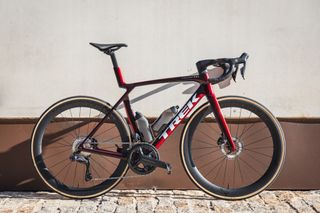
Indeed, having already taken a step toward being an all-around racer, the Gen 8 looks like the last generation Madone has been on a diet with thinner tubes, radically reshaped for aerodynamics and comfort, all powered by improved 900 OCLV Carbon – Trek’s proprietary blend of carbon fibre.
On the whole, though, Trek’s goal was clearly to make an irrefutably fast bike, which wins both on the ascents, descents and solo into the wind.
More of everything
“To our knowledge this is one of the if not the fastest road race bike that exists within the professional peloton and in the market,” says Jordan Roessingh, Director of Road bikes at Trek.
“When you're comparing both attributes [weight and aero] of either previous platform, it's 77 seconds per hour faster than Emonda. So that's an enormous difference in aerodynamic performance compared to the previous Emonda despite the fact it's the same weight.”
The real sell is that the new Madone nails the Emonda’s weight while matching the previous Madone’s aerodynamics. “When you're comparing to a Madone, it's the exact same aerodynamic performance,” Roessingh says. “But 320g lighter – so an enormous weight saving between those two. So again, we're taking the best of both worlds here and merging them and still achieving the highest performance of both attributes.”
The new tube shapes play a big role in the lower weight, better ride and claimed aero benefits. It’s odd as the cross-sections of the aero tubes look blunt and devoid of aerofoil or Kamm-tail shaping. However, when taken as a whole system, sandwiched between a horizontal cross-section of the front rim profile, aero bottles and the rear bottles, the tubes form a sort of neat holistic aerofoil.
Said with almost a grimace, as it’s become an industry cliche, Trek boasts that the bike has better vertical compliance alongside more lateral stiffness. The central IsoFlow seat tube gap claims an 80% improvement in the Madone’s vertical compliance and a 24% improvement over the IsoFlow-less Emonda.
The new Madone carries over the same splayed integrated bar concept as the Gen 7 - positioning the rider 2cm inward on the hoods compared to the drops for aero gains while sitting on the hoods (which has increasingly become the standard aero position).
Strangely, Trek claims the handlebars are less aerodynamic than the Gen 7 iteration, but with a wider cross-section offer a better overall aero performance when air interacts with the bars and then the rider.
In another gravel-like nod to versatility, the new Madone has clearance for 33mm tyres - up from 28mm on the previous Madone. Trek argues that the previous Madone could have handled 30mm or larger in most rim combinations, and for the Gen 8, similarly, 33mm is a conservative estimate. We can believe that given the visible clearance.
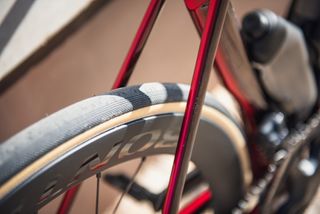
Sizing, spec and bottled-up speed
Trek’s aero bottle design is intriguing because this is ground that the bike market had trodden before. Aero water bottles have been commonplace in triathlon and time trial for over a decade, and have crept up into the build of aero road bikes from time to time but never managed to break through.
It’s also intriguing because the Madone is slower than its previous iteration with round bottles. What’s more, without any bottles on the bikes at all, it’s slower - so no ditching your bottles at the base of the climb.
Given the fixation on aero gains, it’s surprising that the claimed 3.7-watt gains with Trek’s RSL water bottles haven’t been adopted across the peloton. In reality, though, aero bottles present a few issues. Typically the aero cages restrict the use of round bottles, while any minor challenge in liberating a bottle is a big issue to a WorldTour rider on a critical climb. Trek claims to have solved both of those problems.
“These bottle cages are compatible with round bottles” explains Adam Bird, Trek’s Design Engineer for the Madone. “So from a practical perspective, it's something that we expect the pro riders to be trying at the Tour de France – they're actually intending on using aero bottles at the tour. But they need to be able to grab any water bottle from any team or any neutral service and be able to put it in there. So we're balancing the aerodynamic performance with practical performance.”
In terms of breaking through to riders in the WorldTour where in the past the idea may have been dismissed as impractical, Bird argues, "There's a difference in the rider mentality… a lot of the riders now in the peloton are really young. They're very interested in learning about all those slight performance gains that they could potentially find.”
“Ten years ago, we would have shown them this water bottle and they would be like: screw off! There's no way we're gonna practically try them in a peloton. Three Watts? We don't really care about that.”
The proof of concept will be in whether Lidl-Trek riders commit to these bottles throughout the Tour - a piece of minutiae of team tech which I’ll personally be following closely.
The bottles are still not able to be stacked upright, given their angular nature. So don’t pop it on a table ready for a refill.
The change is a bold one given the cycling community’s aversion to change, and for now will be shipped as standard only with SLR – the bottles will be an add-on for lower-tier SL bikes (hence making them comparatively slower than the outgoing Madone SL).
The new Madone is set to go from a 105-equipped SL5 for £3,250.00 ($3,499.99) to a £14,700 ($16,999.99) Madone SLR 9 AXS P1 (Interstellar) with the only deviation in the frame itself being 500 series OCLV in the SL vs new 900 series OCLV in the top-tier SLR. The SLR is also compatible only with electric drivetrains.
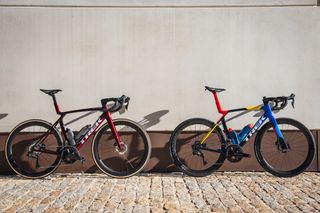
Interestingly, the overall offering has shrunk from eight sizes to six.
“We had a lot of sizes that had a lot of overlap,” Roessingh explains. “Many riders could actually ride two different sizes and that created some confusion of just what frame size to ride, as there were some that were like unbelievably close to each other.” In some cases as little as a 4mm difference in stack height.
The fewer sizes are billed as reducing confusion and consolidating the design of each size. The cynic in me naturally assumed that there was perhaps some manufacturing saving at work there, but Roessingh later walked me through some of the logistics of manufacturing on the scale needed for the Madone. Essentially, reducing eight moulds to six may offer substantial savings for a small frame manufacturer, but when selling thousands of frames per year the turnaround of worn moulds means fewer mould sizes doesn’t necessarily mean fewer moulds.
First ride impressions

Trek’s global launch took place near Cebreros in a mountainous corner of the Castile and León region in Spain. Our riding took us directly into the mountains and into open windy plains.
I was riding the second-tier (Ultegra Di2-equipped) SLR 7, though it was identical to the top-spec SLR 9 as far as the frame design and material. No surprise, then, that there was an immediate sense of speed, power transfer and sharpness riding the Madone.
The previous aero-focussed Madone always excelled in comfort, however, its bulky tubes ultimately gave it the sensation of driving a beefy sports car, while the new SLR not only felt palpably lighter but seemed so much closer to the Emonda in general ride quality. This has the sharp turn of speed and lively handling of a lightweight climber while promising the same speed as an all-out aero machine.
When it comes to all-out speed, it’s very hard to quantify that through a pair of initial test rides. Perhaps the best I could say is that it carried speed well on flat terrain, and at times felt simply blisteringly fast, and was truly a beast on the descents.
It has been too long since I’ve been on a long alpine descent, and despite the relatively shallow inclines, I found myself happily edging toward 80kph. The Madone definitely dared me to take more speed into corners, with a rigid handling character and sat extremely steadily at high speed.
While I always rated the IsoSpeed system for its abundant comfort, the slight detachment between the front and back of the bike with the 9 series was a bit of a sacrifice for the resulting ride quality. With the IsoFlow system, I didn’t notice any discomfort or bumps on the rear end that I felt needed to be filtered out, and the reward in weight and connection to the road was palpable.
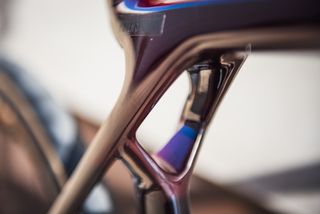
The finishing kit tweaks were probably the most surprising element of my first ride. The squeezed-in handlebar hoods make so much sense. The slight splay in a bar has long been a trend in gravel - offering the wider drops for stability and the narrow for speed. It works very well on the Madone and I was left wondering why we ever bother with hoods that are 42cm apart.
The bottles, despite my scepticism, were easy to handle and never once a hassle to stow or release from the cage.
Early verdict
While I’ve only had a fleeting ride experience with the Madone, my first impression is this is a bike that really shows the maturity of cycling tech at its best. While it’s common to chase wattage gains from minor frame changes, Trek is right to focus on the bike holistically from an aero perspective, where a saving of 3 watts on the bottles could eclipse huge cost and weight gains if those same aerodynamic margins were sought on the frame.
Meanwhile to hit 7kg (in the top-spec SLR 9) with range-topping aerodynamic and stiffness performance is something we didn’t dream of with a disc brake road bike even five years ago. That comes with the benefits of wider tyres and a better experience across climbing, descending and sprinting, alongside great comfort.
With that in mind, the new Madone is very much the everything race bike, but one that could bridge that considerable gap between the needs of the WorldTour’s best and the normal enthusiasts.
I’m excited to spend more time with it, and where this new direction will take one of the most storied bikes in cycling’s history.

Thank you for reading 5 articles in the past 30 days*
Join now for unlimited access
Enjoy your first month for just £1 / $1 / €1
*Read any 5 articles for free in each 30-day period, this automatically resets
After your trial you will be billed £4.99 $7.99 €5.99 per month, cancel anytime. Or sign up for one year for just £49 $79 €59
Try your first month for just £1 / $1 / €1
Peter Stuart has been the editor of Cyclingnews since March 2022, overseeing editorial output across all of Cyclingnews' digital touchpoints.
Before joining Cyclingnews, Peter was the digital editor of Rouleur magazine. Starting life as a freelance feature writer, with bylines in The Times and The Telegraph, he first entered cycling journalism in 2012, joining Cyclist magazine as staff writer. Peter has a background as an international rower, representing Great Britain at Under-23 level and at the Junior Rowing World Championships.
Pro bike check: Tao Geoghegan Hart’s brand new Trek Madone SLR
As light as the Emonda and fast as the Gen 7 Madone, this is the Emonda-killing Trek Madone Gen 8
Tour de Slovakia: Anders Foldager captures uphill victory on stage 2
Most Popular

Mon, Sun: Closed Tue - Fri: 10:00am - 6:00pm Sat: 10:00am - 5:00pm
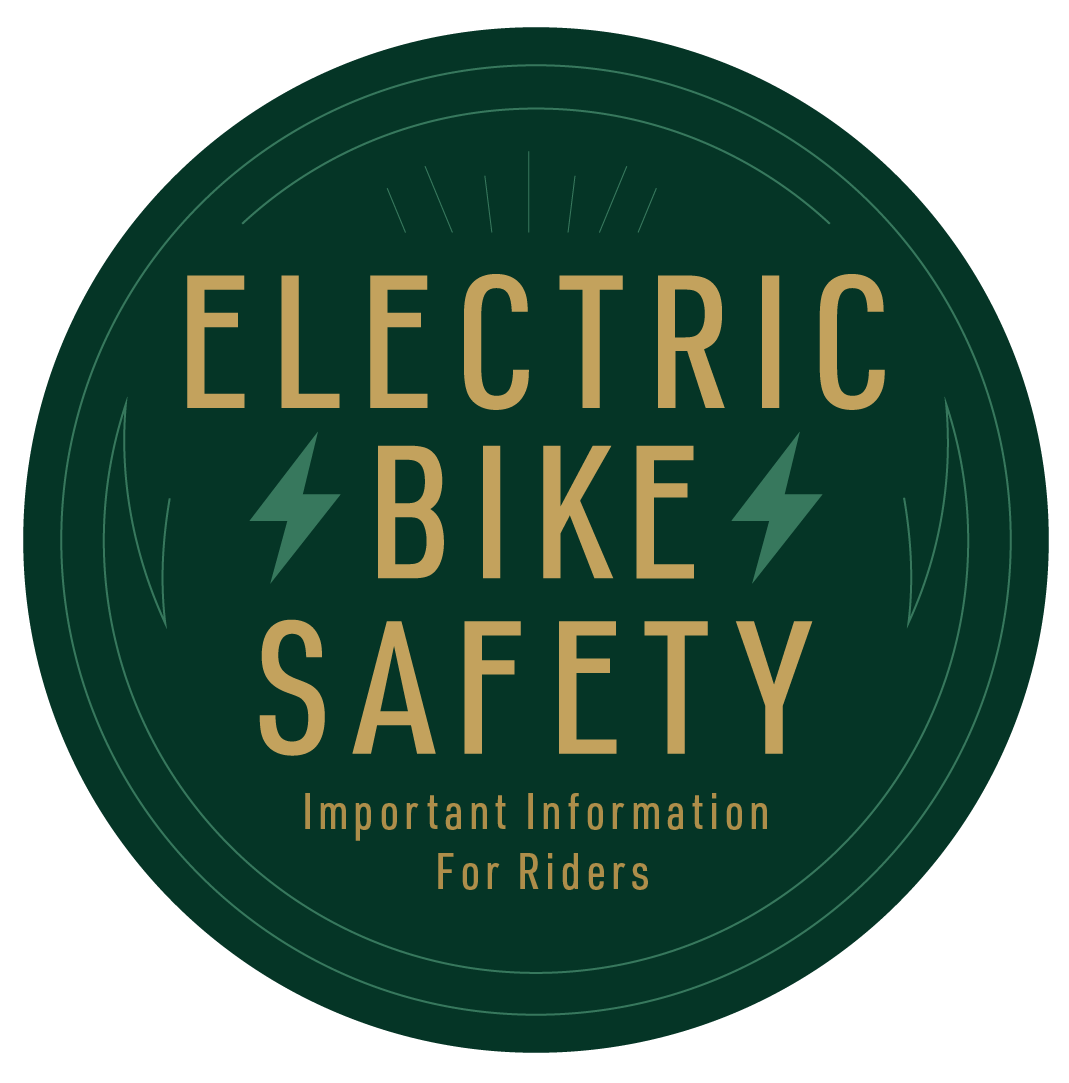
Experience Local Bike Shop Care
Helping our community enjoy life on two wheels is what we live for! No matter what type or level of cyclist you are, we're dedicated to helping you ride more often, more comfortably. Shop on our website or to come visit us, we’re here to help you with all of your cycling needs. Visit us today to meet our friendly staff and experience the independent bike shop difference. We also offer a variety of events and maintenance classes .
Mountain Bikes
Electric bikes, fitness bikes, hybrid bikes, kids' bikes, bikes in stock now.
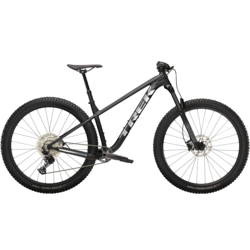
Shop Gear | Accessorize Your Ride
Bike apparel, bike helmets, bike lights.
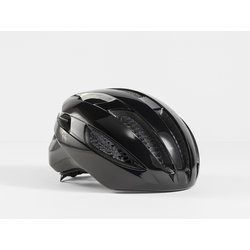
Bike Service
We know being separated from your bike can be hard, so we do our best to make sure you are back in the saddle as soon as possible. We have a 48HR Guarantee, so you'll never have to wait too long!
Get In Touch
We're here to answer all of your cycling-related questions. Stop by or give us a call today!
NEW! YOUR LOCAL RUNNING DROP
Get after it with nearby recommendations just for you.
Powered by Outside
A Versatile Road Bike: Trek Domane 4.0
If you can only own one bike, this Trek might be the most versatile out there.
New perk! Get after it with local recommendations just for you. Discover nearby events, routes out your door, and hidden gems when you >","name":"in-content-cta","type":"link"}}'>sign up for the Local Running Drop .
Trek Domane 4.0 $2,100, Trekbikes.com
Unless you’re planning to own multiple bikes, you’re going to have to decide between a triathlon-specific bike and a well-rounded road machine. The Trek Domane, however, offers a compromise.
This smooth-riding road bike is suited to finding the sweet spot between traditional road and tri positions. Slapping aerobars on a road bike often forces the rider into a scrunched position, resulting in a loss of power. The Domane’s geometry—handlebars higher above the ground and closer to the rider than many race-tuned road bikes—creates a conservative road position and facilitates an efficient aero position when coupled with clip-on aerobars.
RELATED: Can One Bike Do It All?
Popular on Triathlete

Join Outside+ to get access to exclusive content, 1,000s of training plans, and more.
© 2024 Outside Interactive, Inc
- Today's news
- Reviews and deals
- Climate change
- 2024 election
- Fall allergies
- Health news
- Mental health
- Sexual health
- Family health
- So mini ways
- Unapologetically
- Buying guides
Entertainment
- How to Watch
- My Portfolio
- Latest News
- Stock Market
- Biden Economy
- Stocks: Most Actives
- Stocks: Gainers
- Stocks: Losers
- Trending Tickers
- World Indices
- US Treasury Bonds
- Top Mutual Funds
- Highest Open Interest
- Highest Implied Volatility
- Stock Comparison
- Advanced Charts
- Currency Converter
- Basic Materials
- Communication Services
- Consumer Cyclical
- Consumer Defensive
- Financial Services
- Industrials
- Real Estate
- Mutual Funds
- Credit Cards
- Balance Transfer Cards
- Cash-back Cards
- Rewards Cards
- Travel Cards
- Credit Card Offers
- Best Free Checking
- Student Loans
- Personal Loans
- Car Insurance
- Mortgage Refinancing
- Mortgage Calculator
- Morning Brief
- Market Domination
- Market Domination Overtime
- Asking for a Trend
- Opening Bid
- Stocks in Translation
- Lead This Way
- Good Buy or Goodbye?
- Fantasy football
- Pro Pick 'Em
- College Pick 'Em
- Fantasy baseball
- Fantasy hockey
- Fantasy basketball
- Download the app
- Daily fantasy
- Scores and schedules
- GameChannel
- World Baseball Classic
- Premier League
- CONCACAF League
- Champions League
- Motorsports
- Horse racing
- Newsletters
New on Yahoo
- Privacy Dashboard
Yahoo Finance
The bike of the tour: trek bicycle unveils the new ultimate race bike, the madone gen 8.
An earth-shattering combination of its lightest and fastest road race bikes, the new Madone will be ridden by cyclists competing in this year's Tour de France
WATERLOO, Wis. , June 27, 2024 /PRNewswire/ -- It's a bird, it's a plane, it's a… super-fast road bike? Today, Trek Bicycle released the all-new Madone Gen 8 , an innovative fusion of two iconic superbikes. As light as the Émonda frameset and as fast as the Madone Gen 7 , the Madone Gen 8 is reinvented to bring the best of both worlds together in the only race bike you'll ever need. The new model was developed hand in hand with Trek's professional riders and will be ridden by the Lidl-Trek team during the 2024 Tour de France , starting in Florence, Italy on June 29 and finishing in Nice, France on July 21 . Now aspiring racers and road cycling enthusiasts alike can hit the pavement with the same race bike technology as the pros.
"Before, looking for the best race bike on the market meant looking for either the fastest bike or the lightest bike, depending on your training and riding conditions," says Whitney Beadle , Trek Road Marketing Manager. "Now, cyclists don't have to choose between the two and can get the benefits of the ideal race bike whether they are speeding along flat roads or tackling the toughest climbs. The Madone boasts the best features Trek racing models have to offer and was designed with input from the world's top racers resulting in one ultimate racing machine."
Supporting the Madone Gen 8's speed is a design optimized with new tube shapes called Full System Foil that keeps air flow moving smoothly so riders can hit top speeds. The bike's SLR models also feature new 900 OCLV carbon that is up to 20% stronger than previous materials and uses less material to save weight. Models of the new release feature the newest IsoFlow comfort tech, shaving even more weight off the bike and absorbing bumps in the road to keep you riding stronger for longer. Plus, new RSL Aero Bottles and Cages help make the whole ride system faster and aerodynamic.
Madone Gen 8 will be available globally at select Trek retailers and online on Trek's website beginning at $3,499.99 . To learn more about Trek Bicycle and the new Madone, visit trekbikes.com .
About Trek Bicycle Trek Bicycle is a global leader in the design and manufacturing of bicycles and related products. Trek believes the bicycle can be a simple solution to many of the world's most complex problems and is committed to breaking down the barriers that prevent people from using bicycles more often for transportation, recreation, and inspiration.
View original content to download multimedia: https://www.prnewswire.com/news-releases/the-bike-of-the-tour-trek-bicycle-unveils-the-new-ultimate-race-bike-the-madone-gen-8-302183379.html
SOURCE Trek Bicycle Corporation
Kennebec Journal and Morning Sentinel
Account Subscription: ACTIVE
Questions about your account? Our customer service team can be reached at [email protected] during business hours at (207) 791-6000 .
- Local & State
- Kennebec Journal
Bicyclist on 700-mile trek for peace, aid in Gaza pedals through central Maine
Bob Sanders passed through the Augusta area Thursday — one stop in a tour of the three northern New England states to raise funds to support humanitarian aid in Gaza and other causes.

You are able to gift 5 more articles this month.
Anyone can access the link you share with no account required. Learn more .
With a Kennebec Journal and Morning Sentinel subscription, you can gift 5 articles each month.
It looks like you do not have any active subscriptions. To get one, go to the subscriptions page .
Loading....
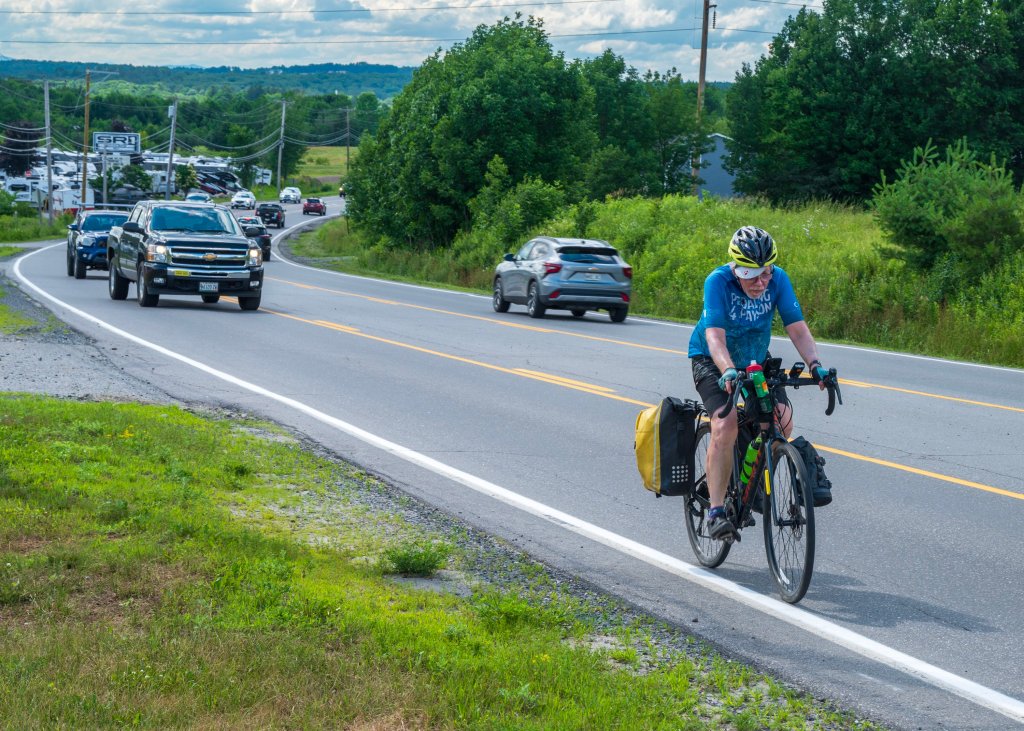
AUGUSTA — When Bob Sanders hit the road Thursday in Bethel, he aimed his bicycle toward Maine’s state capital.
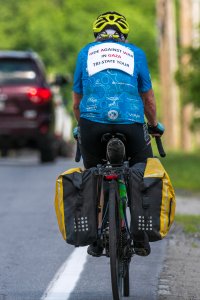
Bob Sanders pedals east Thursday on Western Avenue in Manchester, toward the Maine State House, on his “Ride Against War in Gaza Tri-State Tour.” Joe Phelan/Kennebec Journal
About 65 miles later, Sanders arrived, on the 11th day of his 700-mile road trip that is taking him through the three northern New England states.
“I have the route here,” he said, pulling out his itinerary. “I lose track after a while.”
Sanders, 69, is riding his bike to raise money via a GoFundMe campaign for three groups. Half of what he raises will go it to humanitarian aid in Gaza through the American Friend Service Committee, a quarter to New Hampshire Peace Action and a quarter to Not in My Name, a group of Jews in New Hampshire he founded that is opposed to the Israeli-Hamas war.
Along the way, the former journalist said people have been honking, but he cannot tell if they are toots of support or telling him to move over. Sanders said he does not align himself with either side in the war, but rather is “pro-peace.”
Some people have said they supported his cause and asked how to donate. Advertisement
“No one has said anything negative that I could hear,” he said.
Sanders said he has been relying on two bicycling apps and Google maps to chart his path, often on smaller roads.
“The bike apps are so eager to get you off the main roads, and they take you way out of the way,” he said. “And sometimes, they take you on dirt roads that are washed out.”
If Sanders had followed the bike-friendly path, his route would have been 85 miles, so he opted to stick to the main roads.
“The nice thing is the roads are paved. They are straighter and not as hilly,” he said. “The trucks are … pretty big. And sometimes, they don’t bother going out of their way a little bit. They get pretty close, so I don’t like that.”
Sanders set out from Concord, New Hampshire, in mid-June and headed north to Vermont, through Montpelier to Burlington. He took a day off to visit friends across the border in New York, then headed east through Berlin, New Hampshire, and into Maine.
From Augusta, Sanders heads to Portland, where he plans to spend a day to visit the city and attend a vigil.
His plan is to then cross back into New Hampshire and stop in Dover and Manchester, before returning to Concord, wrapping up his trip in slightly more than two weeks.
Kennebec Journal photojournalist Joe Phelan contributed to this report.
Modify your screen name
Join the Conversation
Please sign into your CentralMaine.com account to participate in conversations below. If you do not have an account, you can register or subscribe . Questions? Please see our FAQs .
Your commenting screen name has been updated.
Send questions/comments to the editors.
- Maine Crime
- Schools & Education
- Read the ePaper
- Police Logs
- Morning Sentinel
- Choose A Town
Manchester fire chief charged with pretending to be law enforcement officer
La fogata mexican restaurant in skowhegan is off to busy start, augusta assisted living facility with history of violations slated to close in july, maine state aquarium draws a crowd when it reopens after a 4-year hiatus, fourth of july events scheduled around central maine, member log in.
Please enter your username and password below. Already a subscriber but don't have one? Click here .
Not a subscriber? Click here to see your options

Watch the Replays
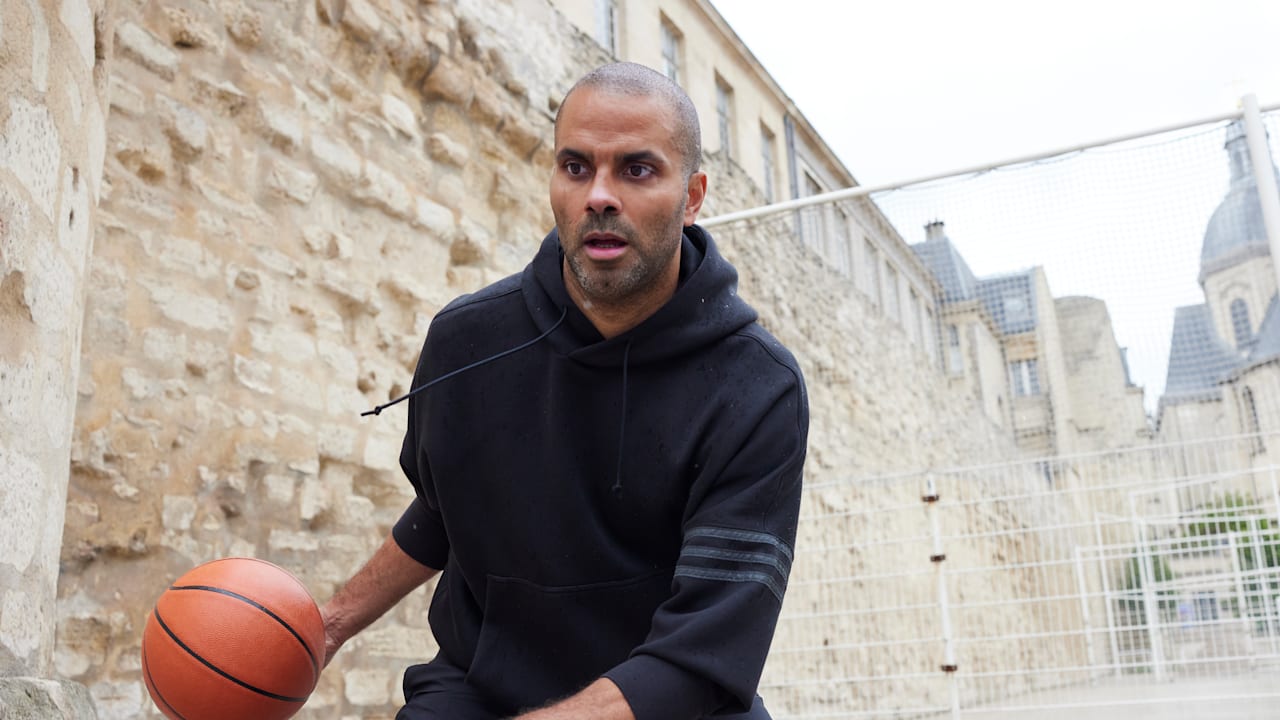
Refugee weightlifter Ramiro Mora: I had to restart from zero, but now I'm happy

Shelly-Ann Fraser-Pryce tops into semis at Jamaican trials

Elodie & Valentin: Five sports and a bit of foolishness

Hugues Fabrice Zango: Giving hope to Burkina Faso

U.S. Trials: Sha'Carri Richardson, Gabby Thomas 1-2 in 200m round one

Agitos shine on the Arc de Triomphe for the Paris 2024 Paralympic Games
Weekly ticket release: new tickets go on sale every thursday at 10am.
Access sale
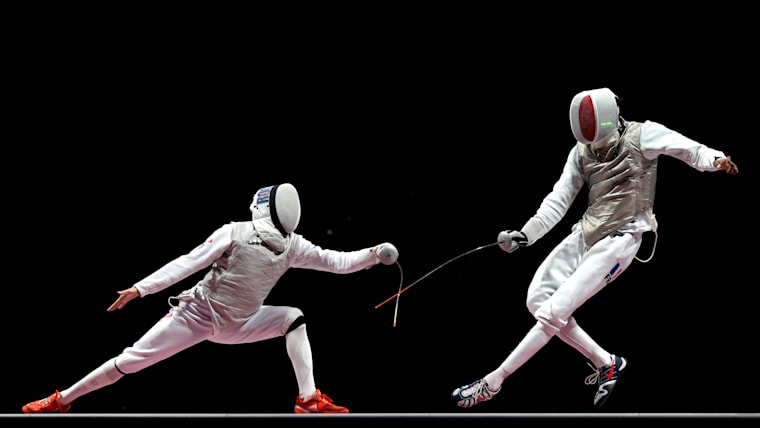
RELIVE THE OLYMPIC QUALIFIER SERIES!
Watch replays from Part 2 in Budapest, as 464 athletes in breaking, sport climbing, skateboarding, and BMX freestyle competed for their last chance to secure a spot for Paris 2024!
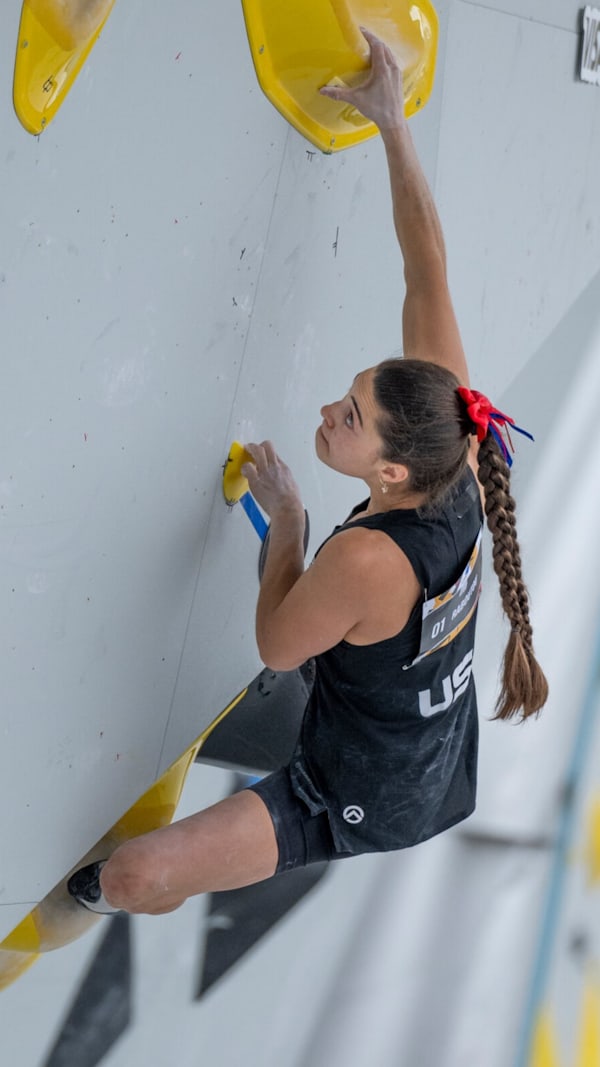
Road to Paris 2024

2024 FIBA Basketball Olympic Qualifying Tournament
Get ready for the games.

ABOUT THE GAMES
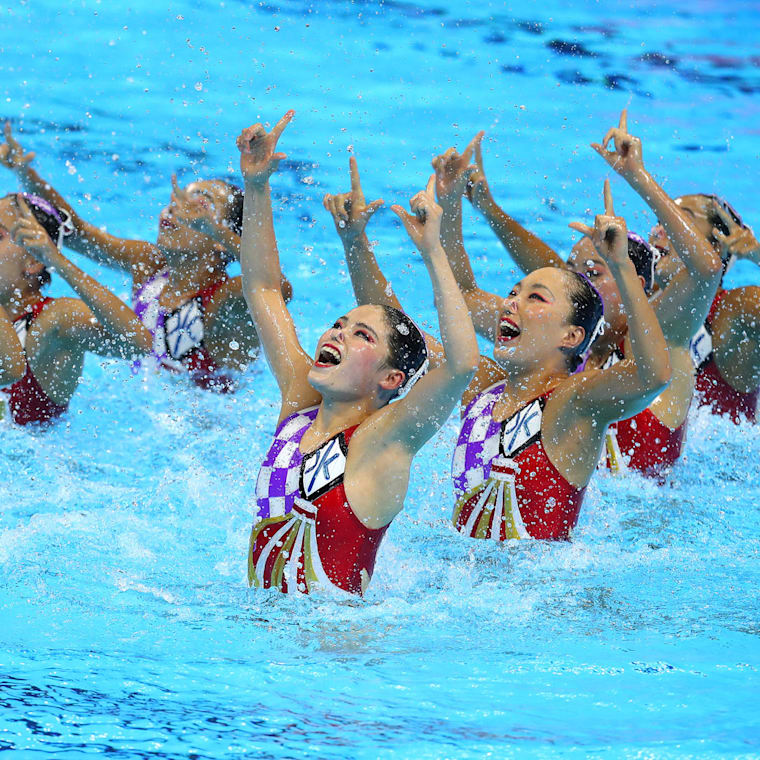
Celebrating the Games

Spectator Information
Travelling to the games.
Get ready with Worldwide Olympic Partner, Allianz. You enjoy the action. We’ll do the rest.

OLYMPIC SHOP
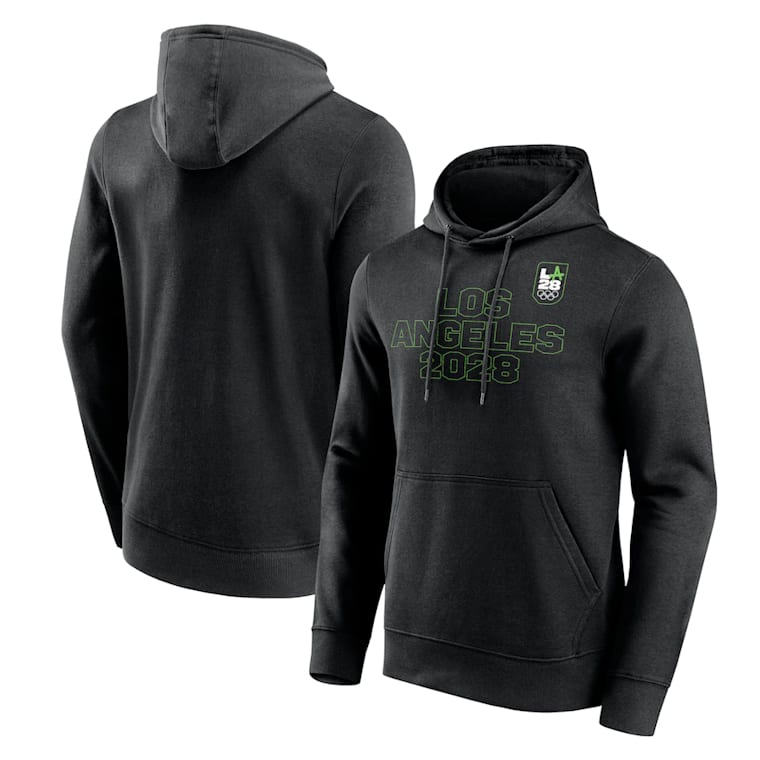
LA 2028 Neon Outline Graphic Hoodie
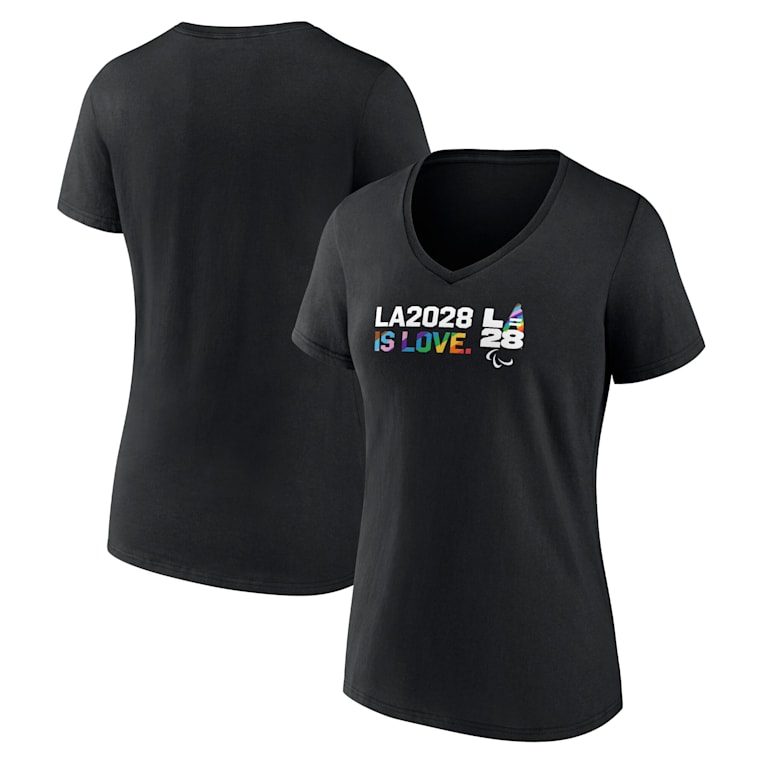
Woman LA28 Pride V-Neck T-Shirt

Men LA28 Snapback Hat
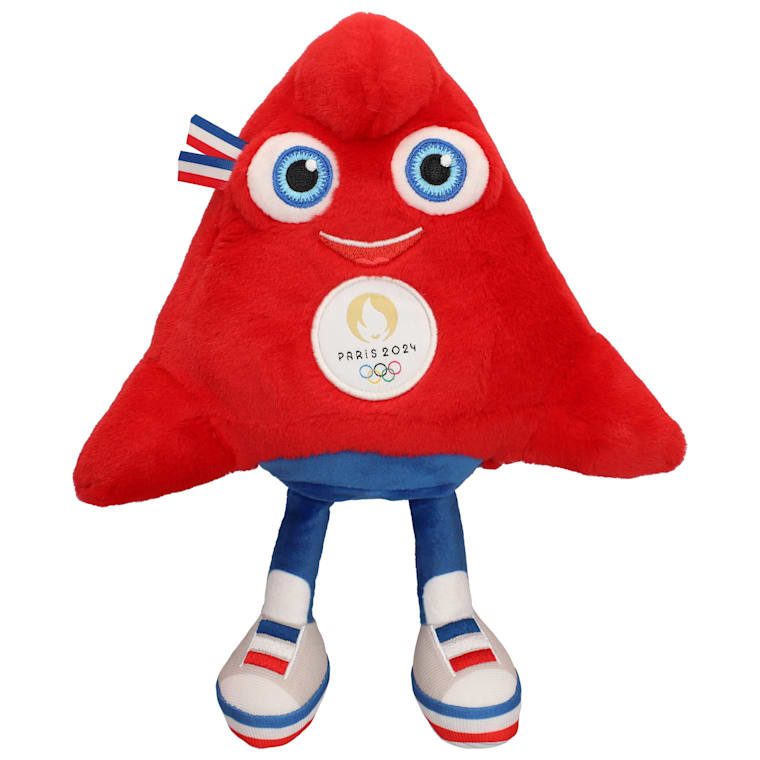
Paris 2024 Mascot Plush - 9"
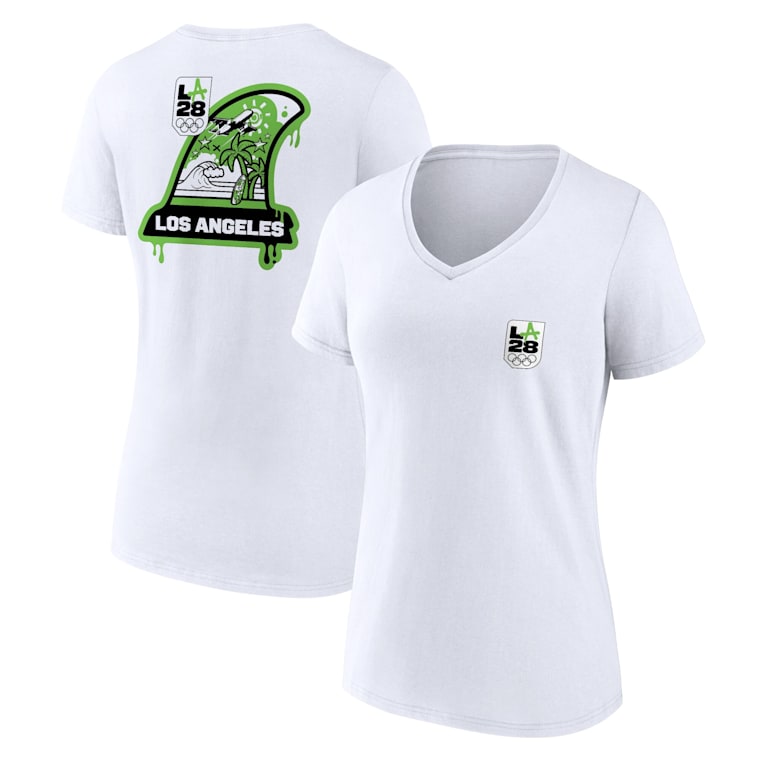
Woman LA28 Neon Tag V-Neck T-Shirt
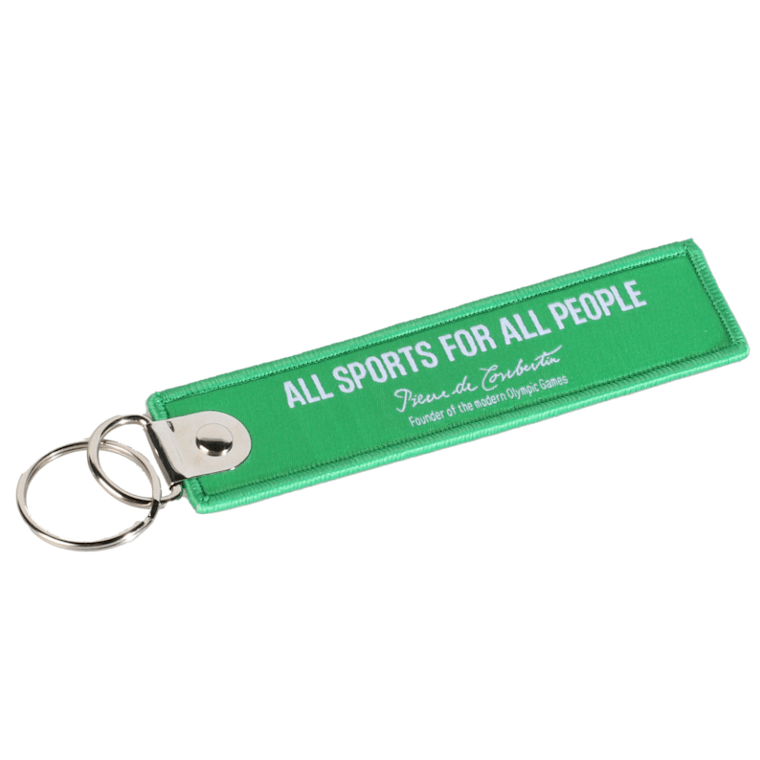
The Olympic Collection Pierre de Coubertin - Key ring
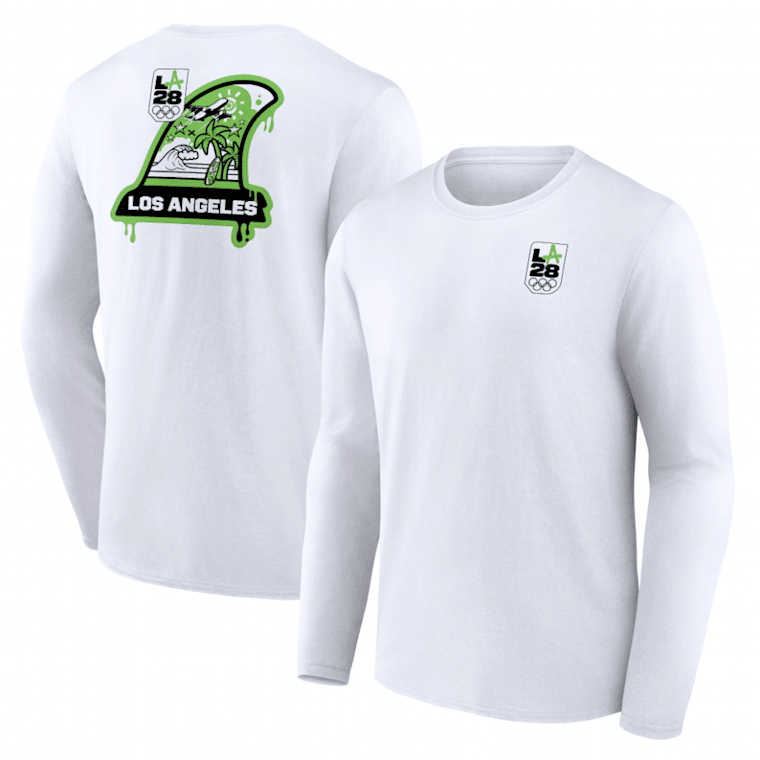
Men LA28 Neon Tags Long Sleeve T-Shirt

Paris 2024 Hoodie - Black
Download the official app.
Never miss a moment! Enjoy full access to breaking news, live sports, original series, and so much more.
Download now

Questions? Contact us
How to buy tickets for the Olympic Games Paris 2024?
Tickets for the Olympic Games Paris 2024 are available for spectators around the world only on the official ticketing website. To buy tickets, click here .
The Paris 2024 Hospitality program offers packages that include tickets for sporting events combined with exceptional services in the competition venues (boxes, lounges) or in the heart of the city (accommodation, transport options, gastronomy, tourist activities, etc.).
The Paris 2024 Hospitality program is delivered by the official Paris 2024 Hospitality provider, On Location.
For more information about the Paris 2024 Hospitality & Travel offers, click here .
What is the official mascot of the Olympic Games Paris 2024?
The Olympic Games Paris 2024 mascot is Olympic Phryge. The mascot is based on the traditional small Phrygian hats for which they are shaped after.
The name and design were chosen as symbols of freedom and to represent allegorical figures of the French republic.
The Olympic Phryge is decked out in blue, white and red - the colours of France’s famed tricolour flag - with the golden Paris 2024 logo emblazoned across its chest.
When and where are the next Olympic Games?
The Olympic Games Paris 2024 will take place in France from 26 July to 11 August.
What sports are in the Olympic Games Paris 2024?
- 3X3 Basketball
- Artistic Gymnastics
- Artistic Swimming
- Beach Volleyball
- Canoe Slalom
- Canoe Sprint
- Cycling BMX Freestyle
- Cycling BMX Racing
- Cycling Mountain Bike
- Cycling Road
- Cycling Track
- Marathon Swimming
- Modern Pentathlon
- Rhythmic Gymnastics
- Rugby Sevens
- Skateboarding
- Sport Climbing
- Table Tennis
- Weightlifting
Where to watch the Olympic Games Paris 2024?
In France, the 2024 Olympic Games will be broadcast by Warner Bros. Discovery (formerly Discovery Inc.) via Eurosport, with free-to-air coverage sub-licensed to the country's public broadcaster France Télévisions. For a detailed list of the Paris 2024 Media Rights Holders here .
How many athletes compete in the Olympic Games Paris 2024?
Around 10,500 athletes from 206 NOCs will compete.
How often are the modern Olympic Games held?
The summer edition of the Olympic Games is normally held every four years.
Where will the 2028 and 2032 Olympic Games be held?
Los Angeles, USA, will host the next Olympic Games from 14 to 30 July 2028. Brisbane , Australia, will host the Games in 2032.
What is the difference between the Olympic Summer Games and the Olympic Winter Games?
The summer edition of the Olympic Games is a multi-sport event normally held once every four years usually in July or August.
The Olympic Winter Games are also held every four years in the winter months of the host location and the multi-sports competitions are practised on snow and ice.
Both Games are organised by the International Olympic Committee.
Which cities have hosted the Olympic Summer Games?
- 1896 Athens
- 1904 St. Louis
- 1908 London
- 1912 Stockholm
- 1920 Antwerp
- 1928 Amsterdam
- 1932 Los Angeles
- 1936 Berlin
- 1948 London
- 1952 Helsinki
- 1956 Melbourne
- 1968 Mexico City
- 1972 Munich
- 1976 Montreal
- 1980 Moscow
- 1984 Los Angeles
- 1992 Barcelona
- 1996 Atlanta
- 2000 Sydney
- 2004 Athens
- 2008 Beijing
- 2012 London
- 2016 Rio de Janeiro
What year did the Olympic Games start?
The inaugural Games took place in 1896 in Athen s, Greece.
NEXT OLYMPICS GAMES

OLYMPIC WEBSITES

WORLDWIDE PARTNERS

Find a bike shop near you | Trek Retailers

IMAGES
COMMENTS
Road bikes. Triathlon bikes. Trek triathlon bikes aren't just highly refined, absurdly aerodynamic machines that cheat the wind, transfer all your power to the road, and carry what you need to stay on course. These tri bikes are also your ticket to the final leg of the race. Every detail of every Trek Speed Concept is designed to help you earn ...
Trek's Domane SL 5 is built with a Shimano 105 groupset. The bike also has an internal storage compartment for stowing tools and gear, which is a thoughtful addition for long-distance cyclists. ... Triathlon Road Bike FAQs. These are our 2021 picks for entry-level road bikes by Specialized, Trek, Felt, Cannondale, Canyon, and Cervélo. Stay ...
Time trial road bikes. The design, components, and incredible fit of Trek's time trial road bikes combine to meet your best effort and propel you to new heights of performance. Whether you're hunting for KOMs, looking to best your triathlon split, or just feeling the need for speed, these bikes deliver the advanced aerodynamic integration ...
Scott Addict 30. Credit: Scott. Price; £2,349. Spec: Shimano 105 R7000 groupset, Syncros RP2.0 Disc wheels. The Addict 30 is an endurance bike with a sensible spec. It would be ideal for a triathlete targeting long course who'd prefer a road bike and clip-ons for extra comfort and help on the hills.
Speed Concept SLR 7. $9,699.99. Model 5296072. Retailer prices may vary depending on location and delivery method. The final price will be shown in your cart. Speed Concept SLR 7 is an aerodynamic carbon triathlon bike engineered for incredible speed and seamless integration. Every bit of this bike—from the light aero frame to ride-smoothing ...
Starting at $2700, it's an affordable option for a new or casual rider, and provides a nice entry into a carbon frame bike. The Emonda is a lot heavier than many carbon fiber options, weighing in at 9.16kg, but its heft and firmness provides a stability that keeps you grounded while still allowing you to feel the road.
Table of Contents. Ventum One. Argon E-117 Tri Disc. Quintana Roo V-PR. Trek Speed Concept SLR 7 Gen 3. A2 Bikes SP1.2. More Triathlon Bikes. This year marks the return of a slew of brand-new bikes from familiar brands—Trek and A2 finally throw their hats into the disc-brake ring, while Quintana Roo and Ventum remix old models into new ones ...
Cadex Tri. A2 SP1.2. Ventum One. Argon E-117 Tri Disc. Trek Speed Concept SLR 7 Gen 3. More Triathlon Bikes. We've been super busy this spring, riding and reviewing all of the interesting new bikes on the market this year —parsing out the marketing hype from the real-world, on-the-road reality to determine the best triathlon bikes of 2023.
2. Trek Domane AL 2 Disc. Trek Domane AL 2 - found here. The Trek Domane AL 2 is our next road bike recommended for beginner triathletes. The Domane AL 2 is built from a lightweight aluminum frame, and stems from a brand with a long, reliable history.
Mid-Range Triathlon Bikes for Ironman 1. Trek Speed Concept. ... Deciding whether to use a road bike or triathlon bike for a triathlon is a difficult decision. Road bikes are more versatile and can be used for a variety of activities, including road racing, time trialing, and even cyclocross. ...
Best Beginner Triathlon Bikes. Felt IAx. Canyon Speedmax CF 7. Quintana Roo X-PR. A2 Bikes SP 1.1. Cervelo P-Series. Dimond Carbonado. Obed RVR. One of the first big considerations you'll have to make as a triathlete is what bike you should ride.
Key features include: New look: The IA FRD 2.0 is the Ferrari of triathlon bikes, with the 2024 edition offering an aero-optimized silhouette and smart integrations. 1×12 or 2×12: The triathlon bike accommodates both 1x and 2x chainring setups with a 12-speed cassette, depending on your preference and course demands.
Plasma 6 Disc Carbon, HMX frame. Schwalbe PRO ONE TT TL tires. Scott Plasma 6 is one of the best triathlon bikes in the world for professional-level racing. Its Plasma 6 Disc Carbon, HMX frame has fully integrated cables, a hydration system, and storage boxes.
While Trek is known for its broad array of bikes - mountain, triathlon, comfort - they have a solid road bike lineup, and the Emonda is the dominant model right now. You might think we are crazy for recommending the Emonda, because it is a very deep product line and some decked-out Emondas can hover around the $10,000 mark.
Speed Concept TT Frameset. Be the first to write a review! $4,999.99. Model 5268646. Retailer prices may vary depending on location and delivery method. The final price will be shown in your cart. Speed Concept TT Frameset is an aerodynamic carbon time trial bike engineered for incredible speed and seamless integration so you can leave it all ...
It brings Trek's entire performance road bike line back to basics - the Domane is still there for the comfort-cum-cobble market, but the Madone is now Trek's one and only flagship racer.
I'm looking to do my first triathlons this summer (sprint in June, olympic in August) and am looking for a used road bike for training and the races. The only thing is I have no idea what I should be looking for. I found this used Trek road bike on fb marketplace that seems to be the right size for me (I'm 5' 5.5").
Read 109 customer reviews of Rolling Hills Bikes, one of the best Retail businesses at 113 E 6th St, Moscow, ID 83843 United States. Find reviews, ratings, directions, business hours, and book appointments online.
Trek Bicycle Store Coeur d'Alene is a full-service bicycle shop and exclusive dealer for TREK and Electra Bicycles. We are located in a newly remodeled space at 1104 N 4th St in Coeur d'Alene, ID. ... Triathlon Equipment & Accessories; Women Cycling; Bike Tires & Tubes; Car Racks;
Trek Domane 4.0. $2,100, Trekbikes.com. Unless you're planning to own multiple bikes, you're going to have to decide between a triathlon-specific bike and a well-rounded road machine. The Trek Domane, however, offers a compromise. This smooth-riding road bike is suited to finding the sweet spot between traditional road and tri positions.
The home of Trek Factory Racing, and all the Trek programs. Whether its road, XC, enduro, downhill, freeride, cyclocross or triathlon, you'll find a Trek athlete, racing for the win. Revealing our Tour de France 2024 blend 🍷 | Trek Race Shop
An earth-shattering combination of its lightest and fastest road race bikes, the new Madone will be ridden by cyclists competing in this year's Tour de France WATERLOO, Wis., June 27, 2024 ...
16K subscribers in the Surlybikefans community. This is a gathering place for all enthusiasts of Surly and adventures! Whether you're an avid…
Road bikes. Triathlon bikes. Trek tri bikes aren't just highly refined, absurdly aerodynamic machines that cheat the wind, transfer all your power to the road, and carry what you need to stay on course. They're also your ticket to the final leg of the race. Every detail of every Trek Speed Concept is designed to absolutely kill your bike split ...
Bicyclist on 700-mile trek for peace, aid in Gaza pedals through central Maine ... he aimed his bicycle toward Maine's state capital. Bob Sanders pedals east on Western Avenue toward the Maine ...
Speed Concept SLR 9 AXS. 6 Reviews / Write a Review. $10,999.99 $14,199.99. Model 5310386. Retailer prices may vary depending on location and delivery method. The final price will be shown in your cart. Speed Concept SLR 9 AXS is an aerodynamic carbon triathlon bike engineered for incredible speed and seamless integration.
Welcome to the Paris 2024 Summer Olympic Games website. Follow the world's top athletes as they go for gold in France (Jul 26-Aug 11, 2024).
"Demolish your fitness goals with this bike from Trek that is built for performance and versatility. Featuring a lightweight alloy frame and carbon fork it has a responsive ride feel and hills can be conquered at speed. Perfect for riders looking for road bike speed with hybrid bike practicality and stability." Read more
Trek and Electra bike shops are your destination for the latest Trek bikes, Electra bikes and accessories, Bontrager cycling gear, service and tune-ups for bikes of any brand, and professional bike fit services through Trek Precision Fit. Whether you visit a Trek-owned store or one of our awesome independent partners, you'll find amazing ...